Marrakech in the Kingdom of Morocco
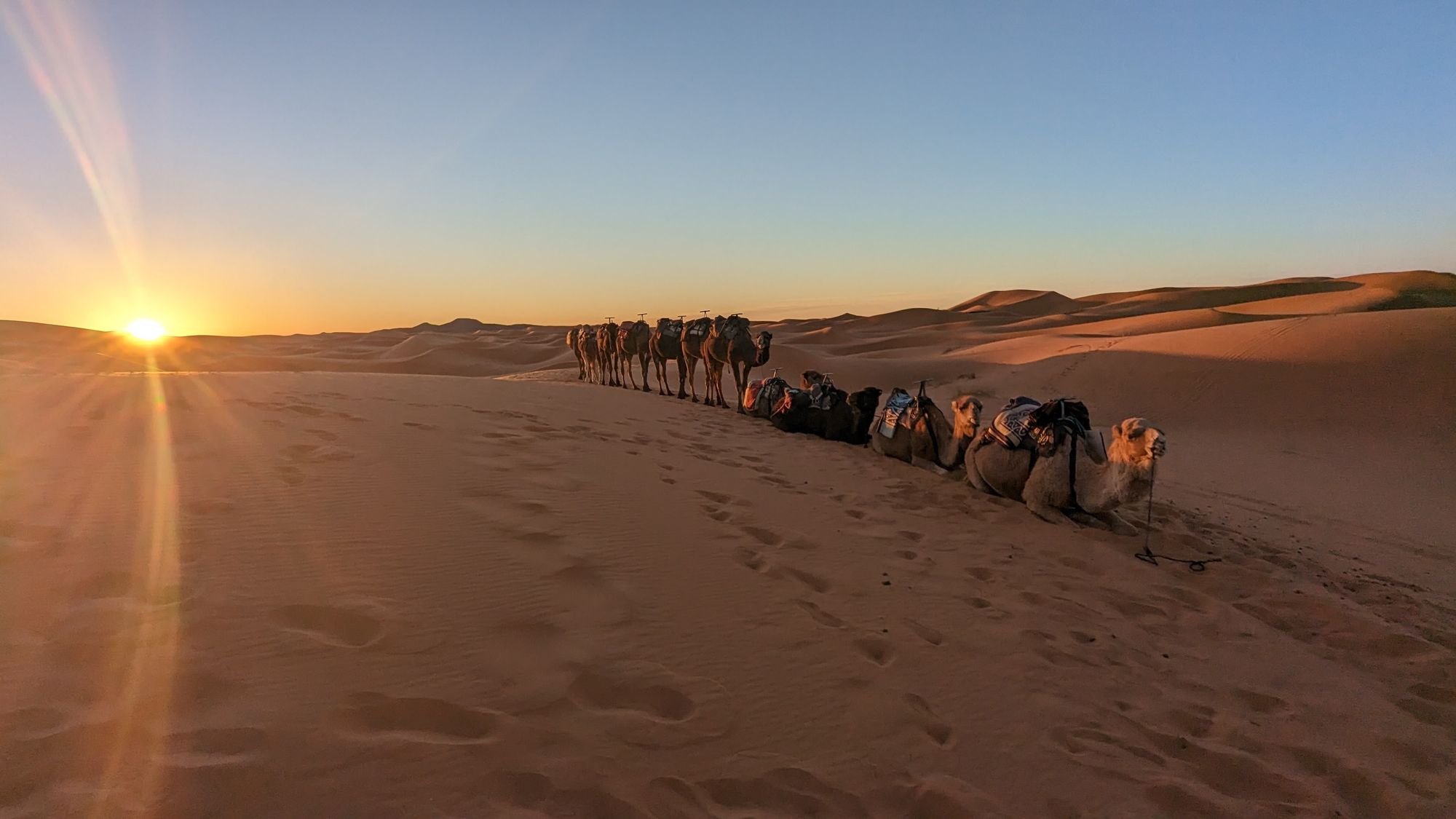
The origins of this post come from a team presentation we were asked to do. Since I hadn't really made a proper recap of my last travel, I figured why not hit a few stones at once.
Some background
Where to begin to describe this amazing place? The Amazigh (locally translated as "free man") or Berber people (Berbers) are the original inhabitants of the area including all of the Maghreb region of North Africa since the Neolithic times (12,000 BC). Barbarian is the Arabic exonym for this indigenous people.

The Maghreb (Place of Sunset) is the western part of the Arab world, excluding Egypt and Sudan -- which are considered to be in the eastern Arab world of the Mashriq (Place of Sunrise) towards Western Asia. The Berbers, however, call their land Tamazgha (Land of the Berbers) in opposition to the Arabization of the region. The Barbary Coast refers to the coastal regions.

In Europe the Berbers were called the "Moors". This is the exonym used by Christian Europeans for the Muslim inhabitants of the Maghreb peoples as alluded to in the 1603 tragedy written by William Shakespeare, Othello (The Moore of Venice). This appears to coincide with a visiting delegation from Morocco that arrived in England in the 1600s.

In the southern Philippines the term Moros is also used to refer to the Bangsamoro people of Muslim Mindanao; which upon the arrival of the Spanish and Portuguese Conquistadors was the term they used to call anyone non-Christian and of dark skinned complexion.

Morocco is best translated as the "Kingdom of the Western Place". In fact, it takes its name from Marrakech, which was the Amoravid dynasty capital in the 11th century until its fall in 1147; whereupon the Marinids moved the capital to Fes. Until the beginning of the 20th century it was, also, called The Kingdom of Marrakesh referring to the nation's capital. Even in some of today's current languages Fas (derived from Fes) refers to Morocco; and in other parts of the Islamic world it is still called Murrakush.
When to visit?
When on a budget the best times to visit are shoulder months or just about. For this information you should use more than one point of reference since "best" may not mean the same thing depending on your weather preparedness.


Aside from the heat, make sure to note the precipitation levels. Nothing ruins a trip like rain or a sudden blizzard. Check the weather patterns, too!


Show me the money
Morocco in general is a cash society, so your best bet is make sure you have enough Moroccan dirham (MAD/DH) exchanged at the airport (and do the reverse before you depart since it is a closed curency!). In our experience the exchange rate at the airport is similar to the town markets.Most major credit cards and tap-to-pay are accepted at large establishments, only.
The plus side of staying at a major hotel chain is that they will usually have a foreign exchange desk, too.

Getting there
Generally, we prefer at most one-(1) stop en route to the chosen destination. Sometimes it will take more. You have to consider the number of stops vs length of the flight + overlay and time to run to the next gate + prices. It is also a good plan to shop and simulate the flight routes vs prices. Google Travel is an indispensable and agnostic source of information.



Our American Airlines (AA) route took us from Dallas-Fort Worth (DFW) to London Heathrow (LHR) but the connecting flight to Marrakech (RAK) was via British Airways (BA). One more thing, get familiar with the IATA airport codes as it helps quell confusion about which airports you travel to.

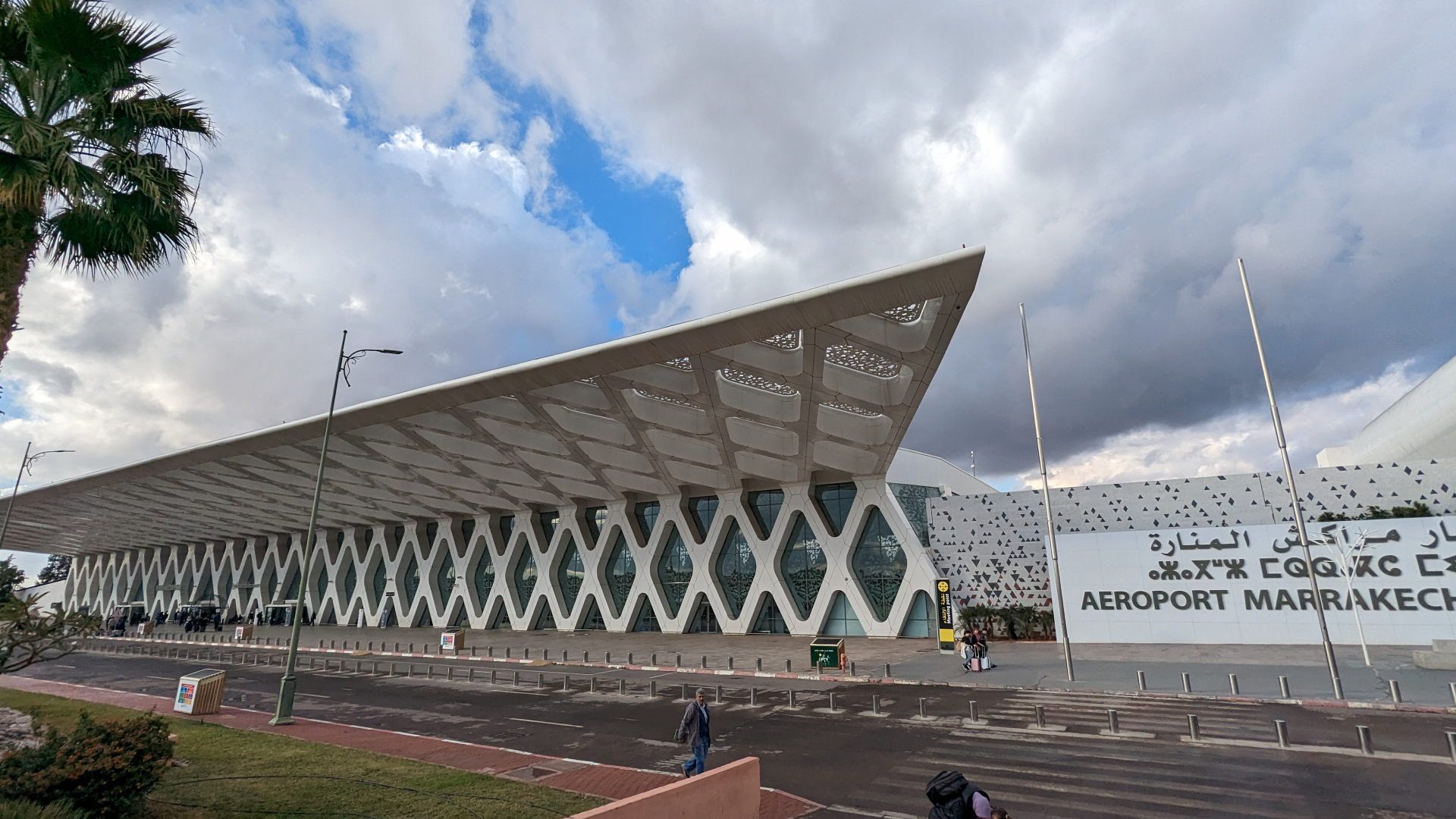
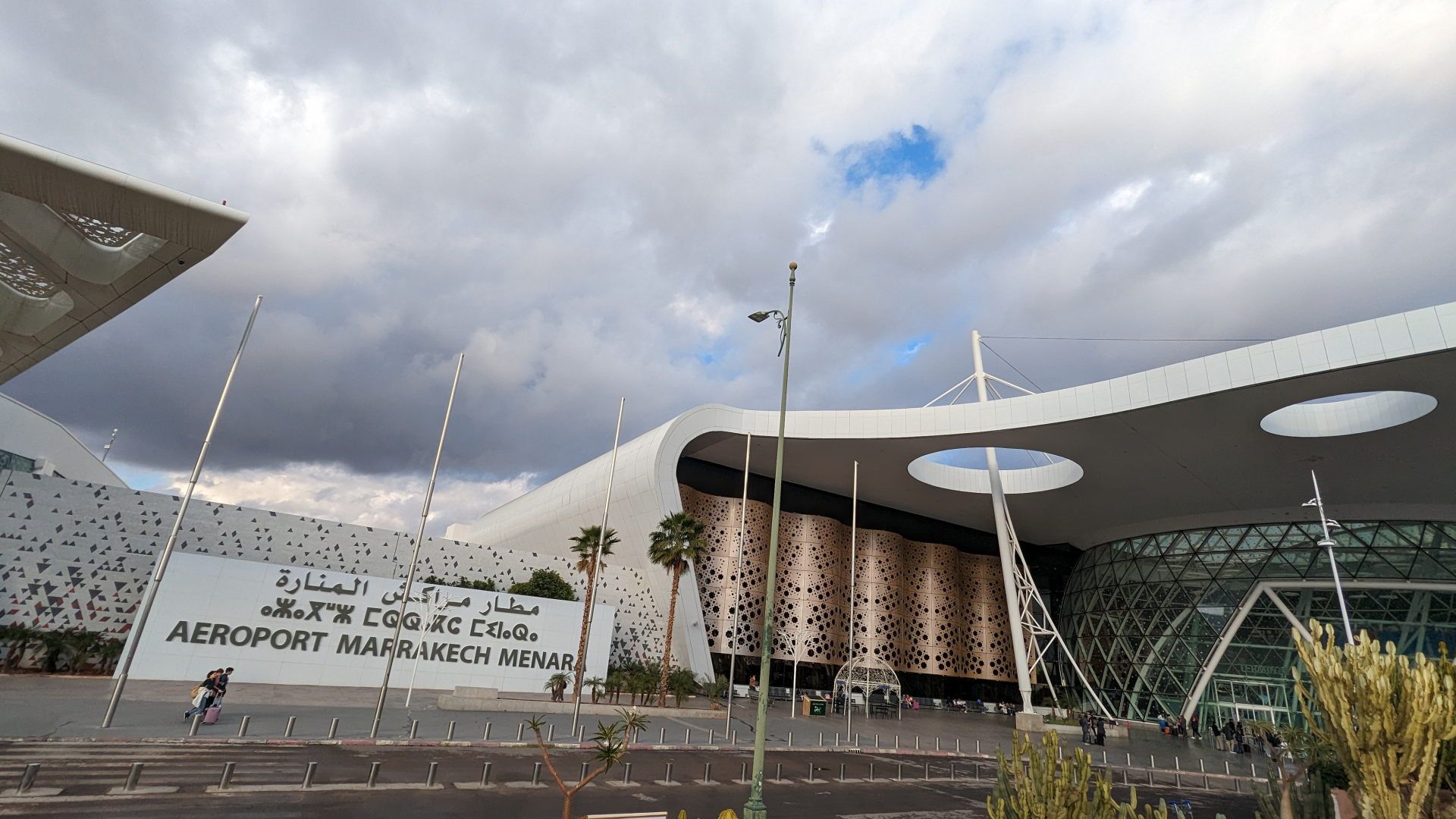

At some point you're going to end up at LHR and leave out of Gatwick (LGW) which poses a challenge since there might not be a fast train available at the time of arrival. We managed by asking at the Information Desk to confirm the web instructions we found online and they pointed us to the airport transfer shuttle down the escalators. Thankfully the trip wasn't more than 20-minutes as the bus was full and standing room only.

What to expect
Marrakech is famous for its parks and olive groves, the walled city and market square. It is the commercial hub for the High Atlas mountains and trade from the Sahara with proximity to the Marrakesh Menara Airport (RAK). Outside the city gets you access to several routes to the Sahara desert and other experiences.

Getting around
Uber no longer operates in Marrakech due to the usual issues. There are ride hailing apps but that means you'll need to make sure your roaming data is active and partnered with a good global network. From the airport or any point make sure to pre-negotiate the price, even if a taxi meter exists it is usually "broken". For short distances use the petit/small taxis otherwise the grand/large cabs are available which obviously will cost more for the same distance. A few block distances is somewhere in the order of 4 MAD (mornings) and go up to 12 MAD in the evenings. From the airport to the Le Meridien N'fis usually costs 29 MAD but can go up to 50 MAD if you're not watching and just say "go".

Where to stay
Riads are traditional Moroccan or (Spanish) Andalusian living accommodations that either surround or have its own private garden courtyard. This is a multi-tenant structure that have its windows and openings facing inward in the traditional social mores of Islamic society. Since most riads are meant to be lived-in they are commonly located near markets and places of work which make them very ideal when considering to just walk around to places.

However, for our first ever visit we decided to play it safe and stay at a known hotel brand to cover our safety concerns and some assurance of service quality. Whatever your adventurous preference is we usually shop using multiple travel websites (Booking, Expedia, Kayak, memberships) then make these filter choices before clicking on reservations:
- Free Wi-Fi - track global news and your return flight
- Air conditioning - depending on the season
- 1-mile (less is better) distance from city center
- Private shower/bathroom - makes it easier to schedule your day
- Daily budget of less than $200 ($250 if amenities are worth it)
- No pre-payment/Free cancellation - last minute situation emergency
- Reputable/known hotel chain/brand
- Restaurant - in case there isn't food on the airplane before arrival/departure
- Proximity to a pharmacy or grocery store


Last January we settled for the Le Meridien N'fis (a Marriott hotel chain brand) and we were rewarded with proximity across a mall to get groceries and pharmacy. We usually do our return shopping as early as possible to get this out of the way and just enjoy the rest our stay rather than do it last minute.

Here are a few gallery shots of the property, which, unlike the Savoy across the street, had an event space and tennis court within its ample grounds.
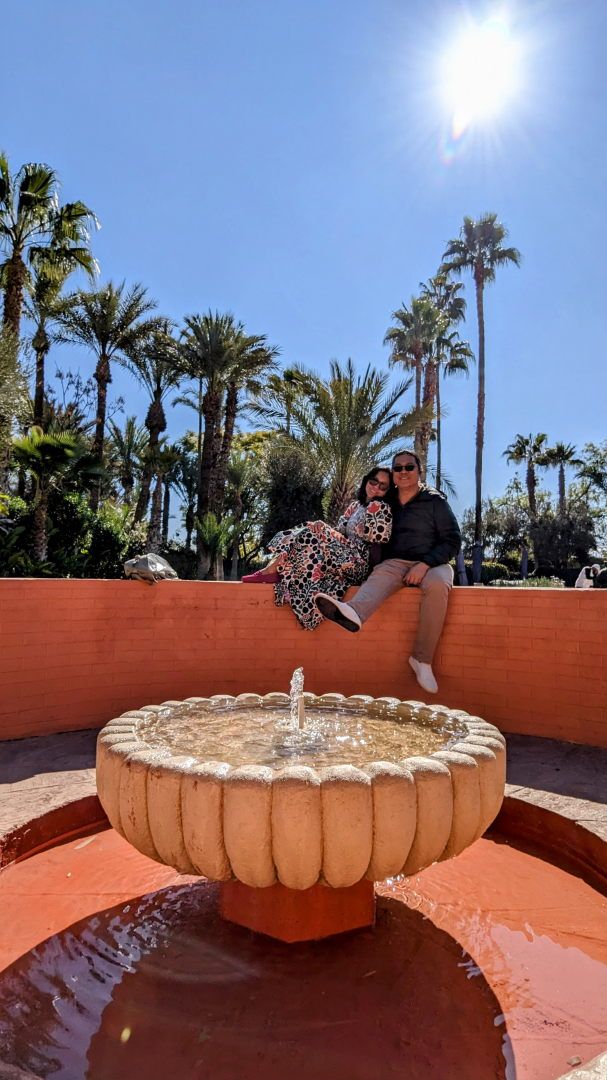
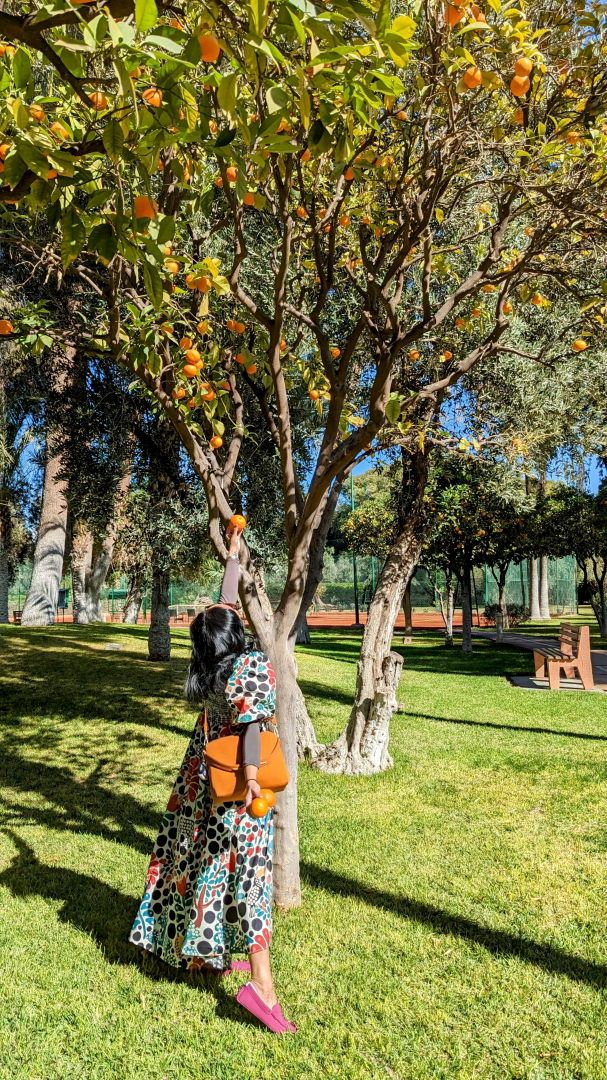
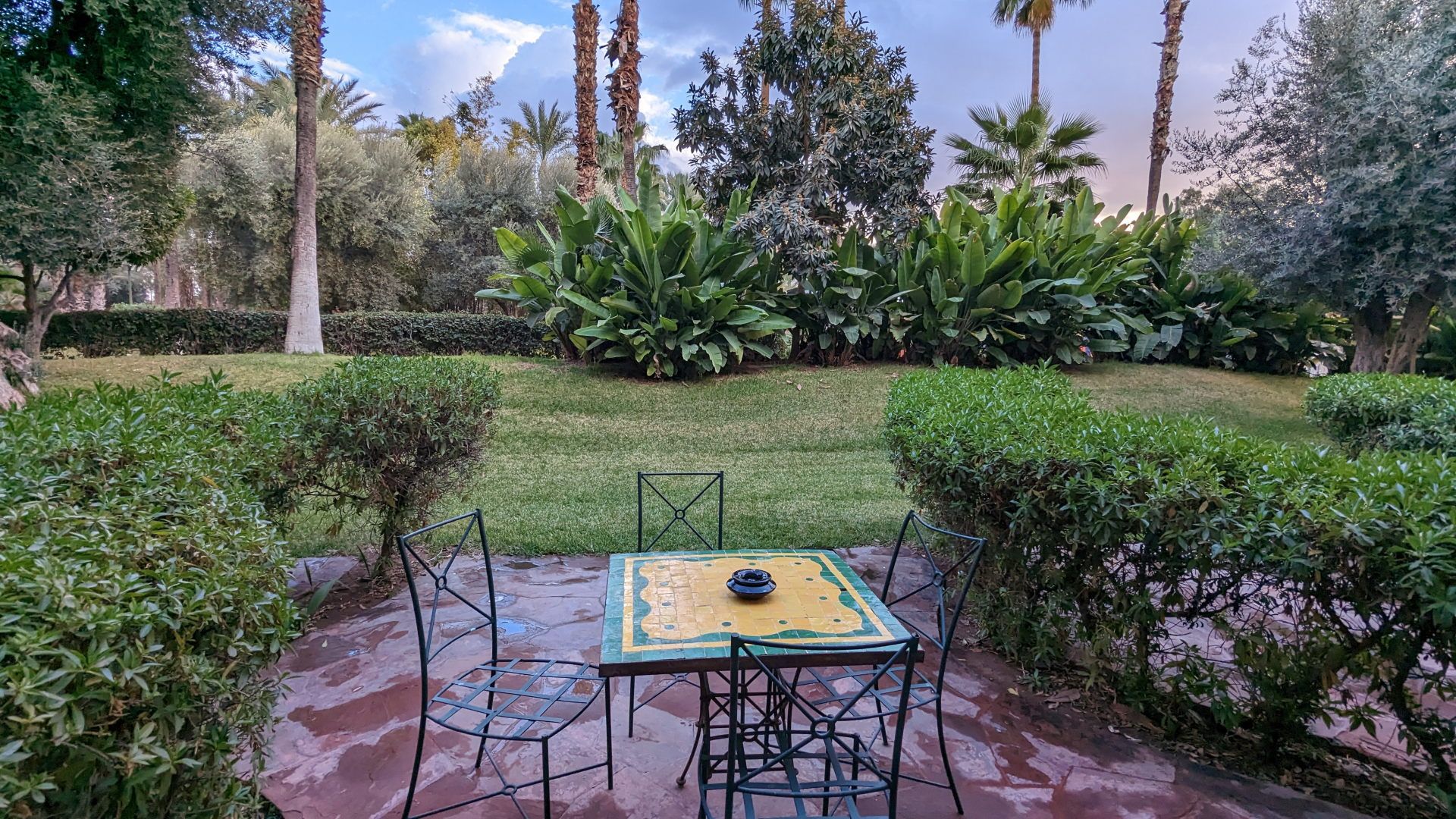
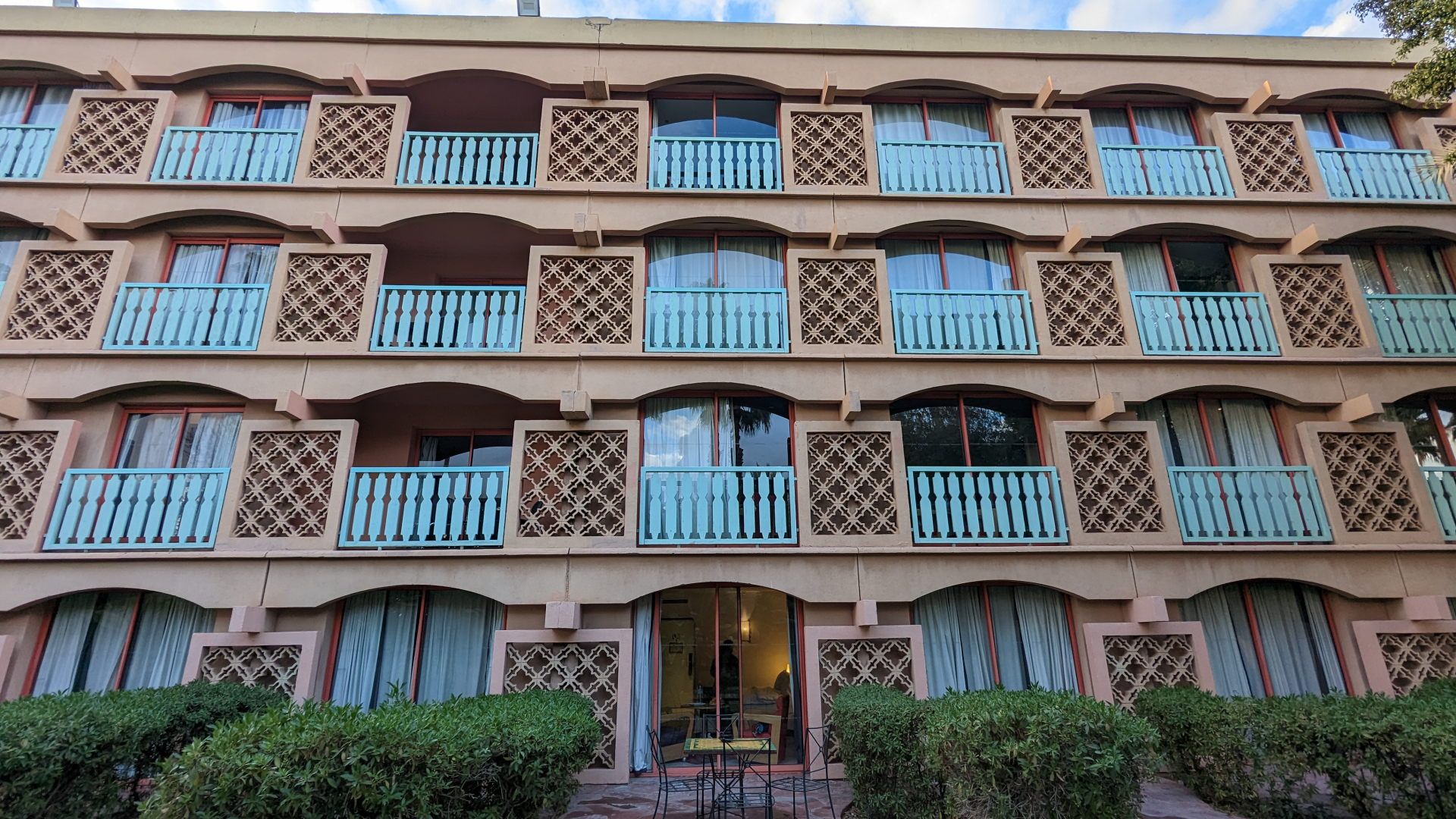

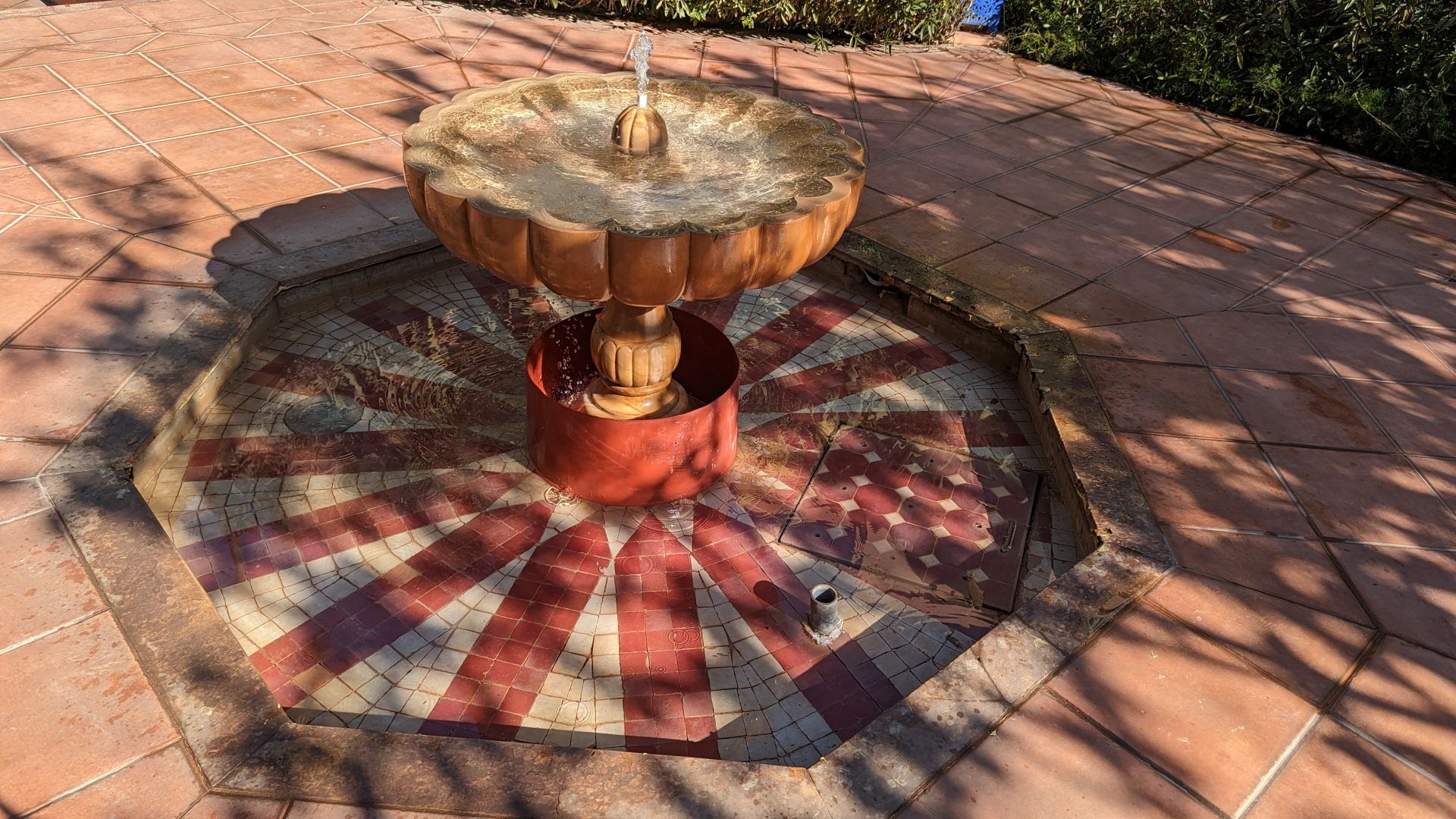
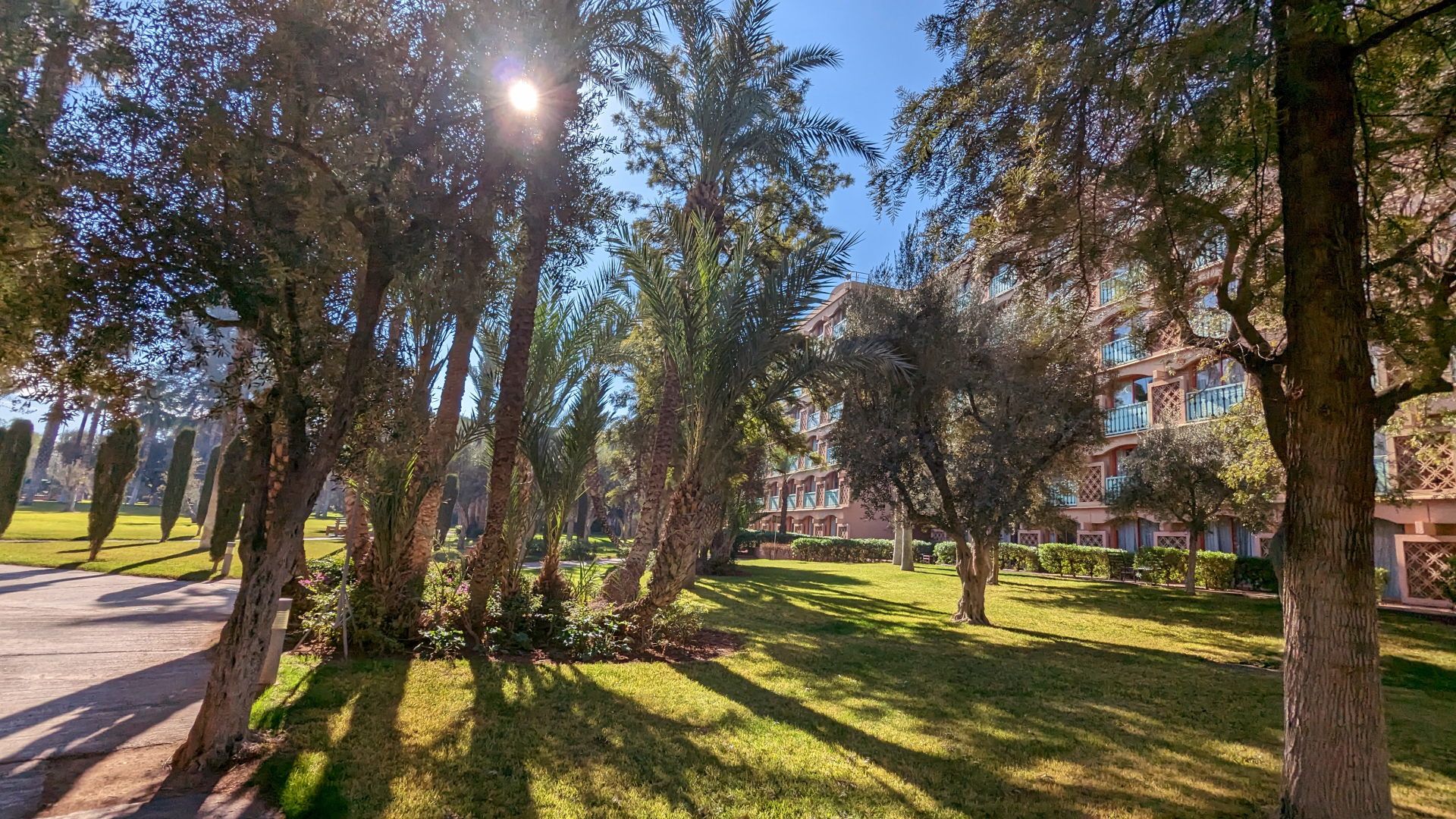

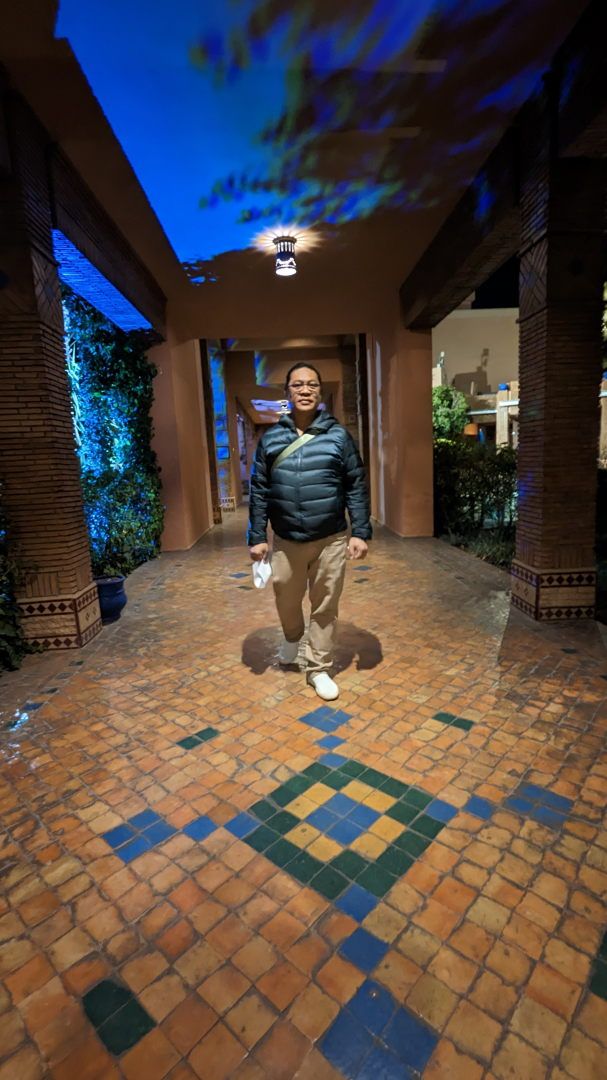
The pool and waters actually light up at night with different colors. Pretty neat.


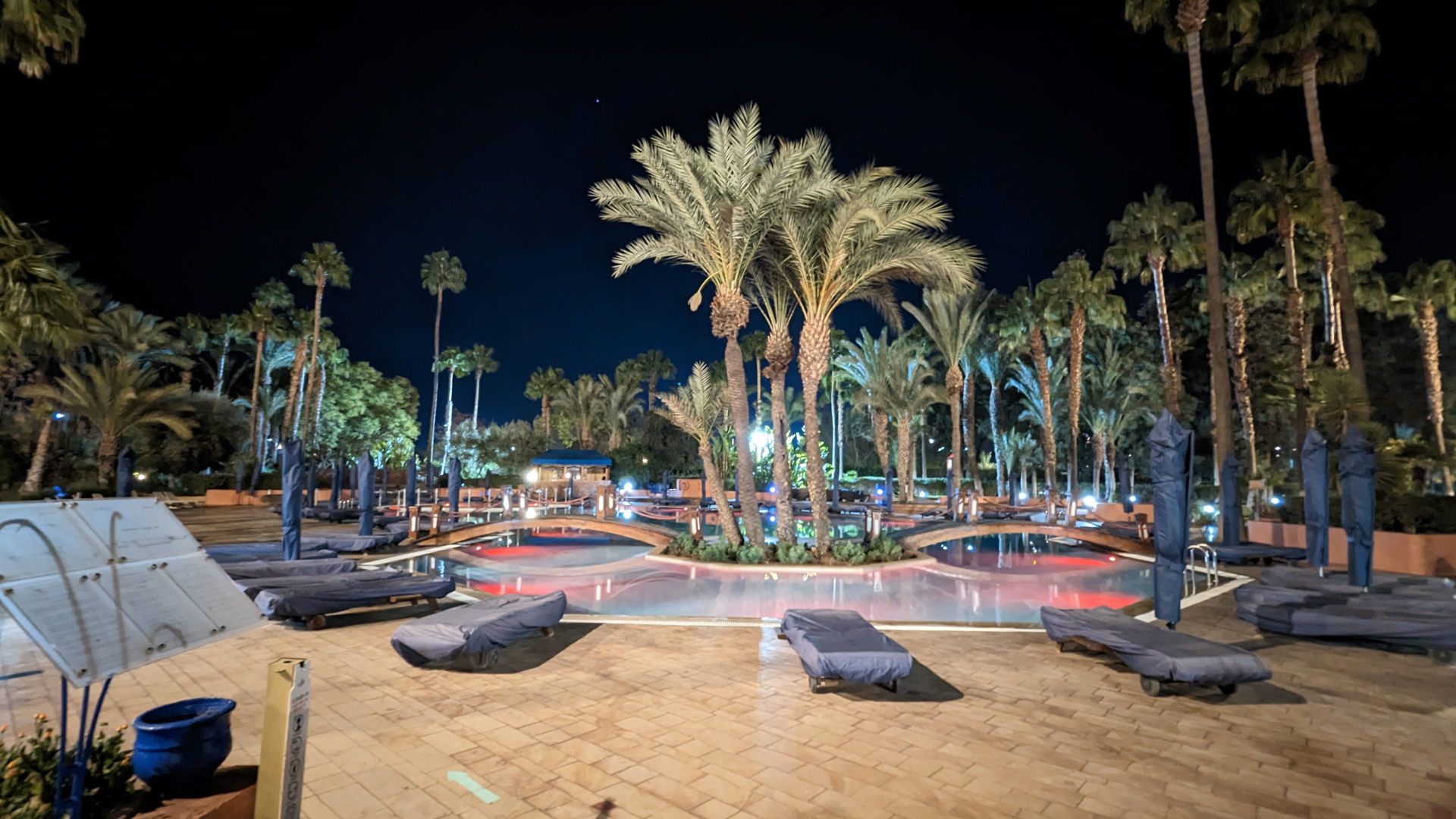

What and where to eat
There are a few places to eat in the area. Whenever possible we cook our own food to keep the costs low. If that isn't possible then we check with the concierge and find some local grub. Failing that we grab some fast food version of whatever is available. Arriving from a flight or departing early morning, this is where the hotel bar or restaurant becomes useful. It just so happened that there was also happy hour, Yeah!
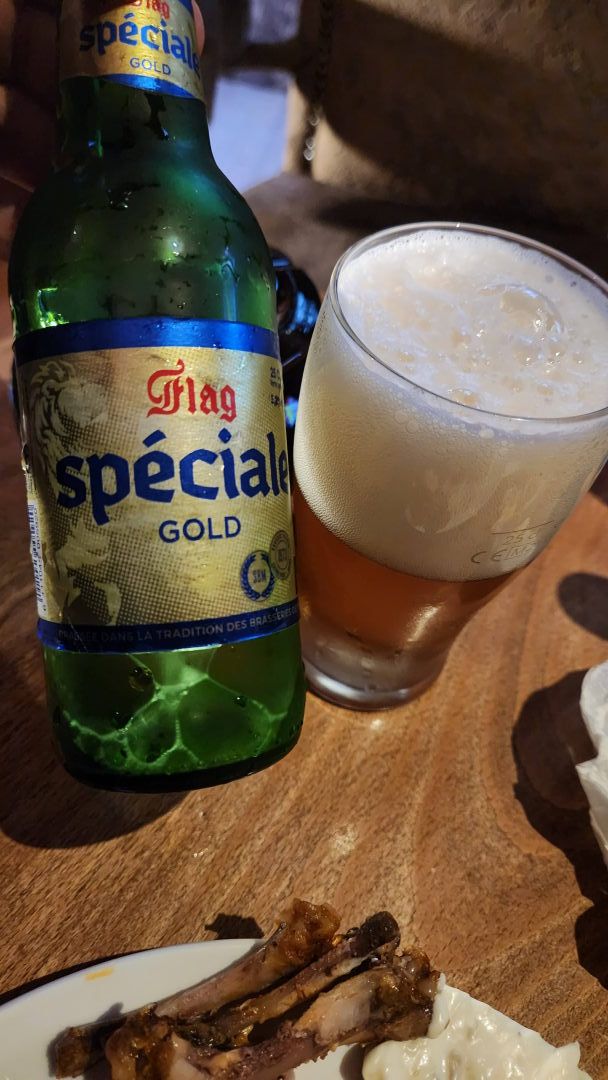
Being an Muslim region there is no pork to be served anywhere. However, it was a surprise to be offered beef bacon at Chili's in the burger. We also found a sports bar nearby that was open late. Pricewise, it was really fair since we had lamb chops both times we had dinner after excursions.
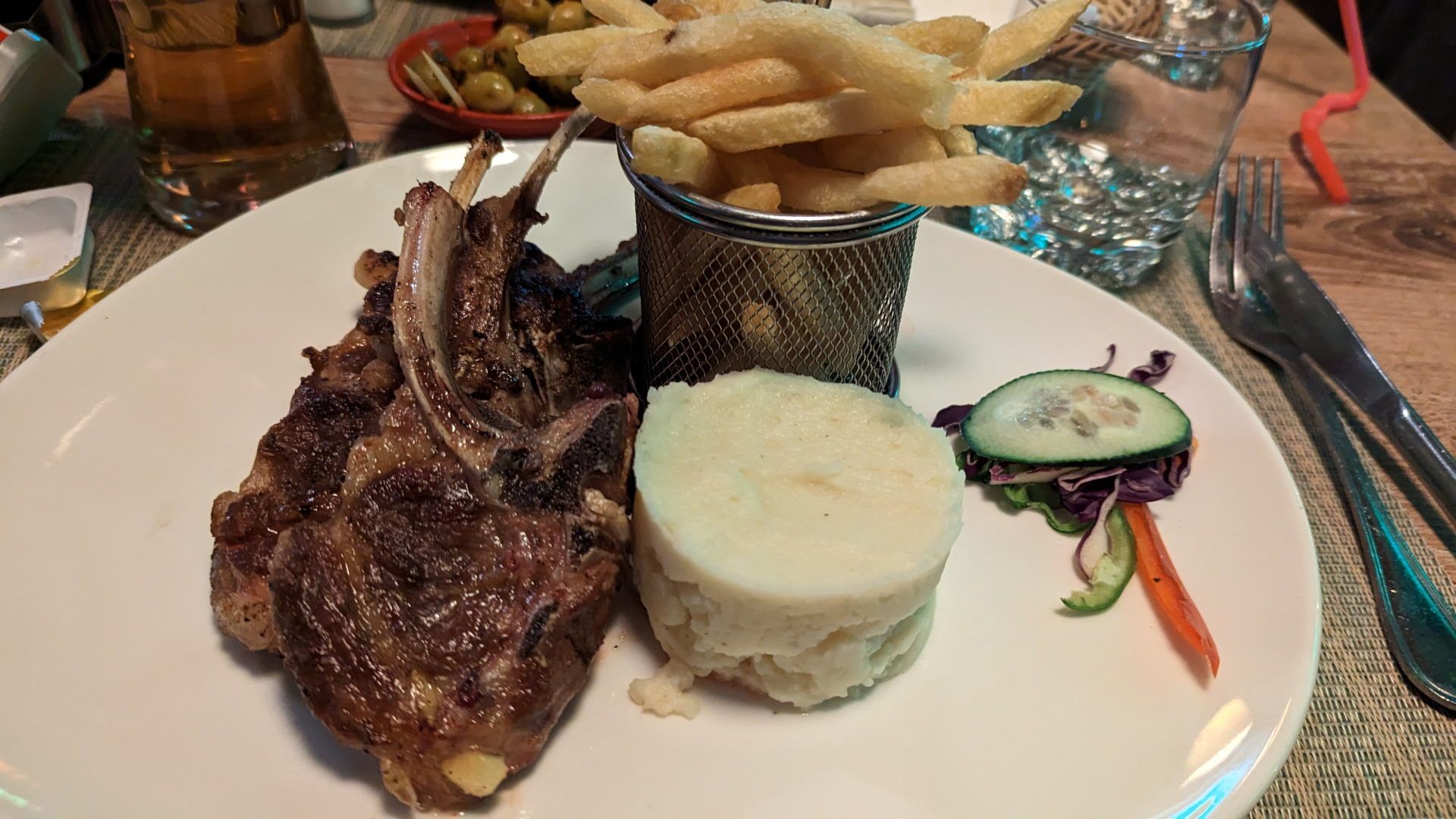
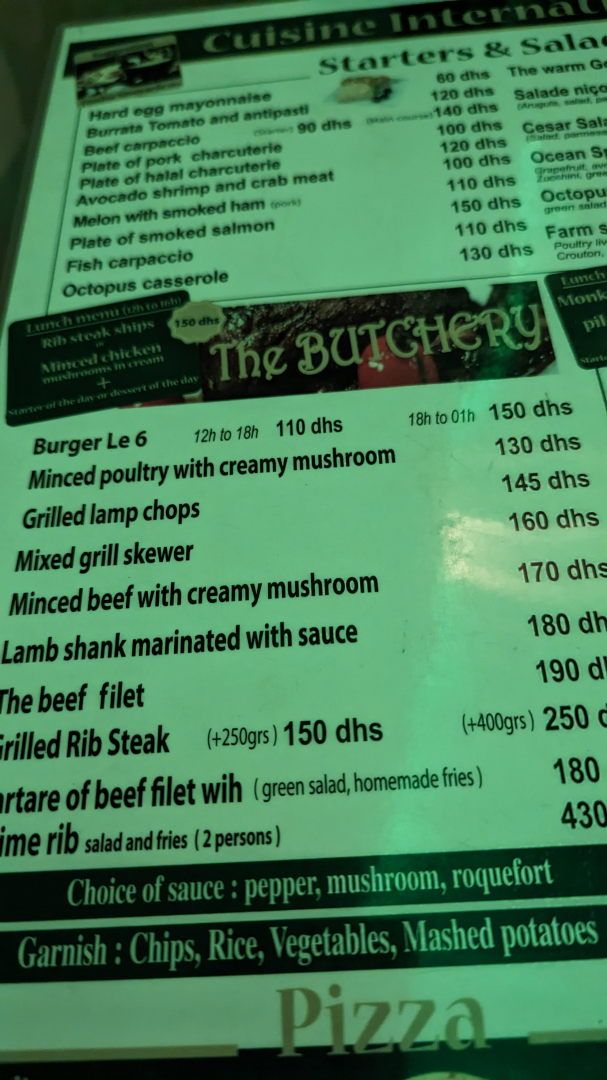
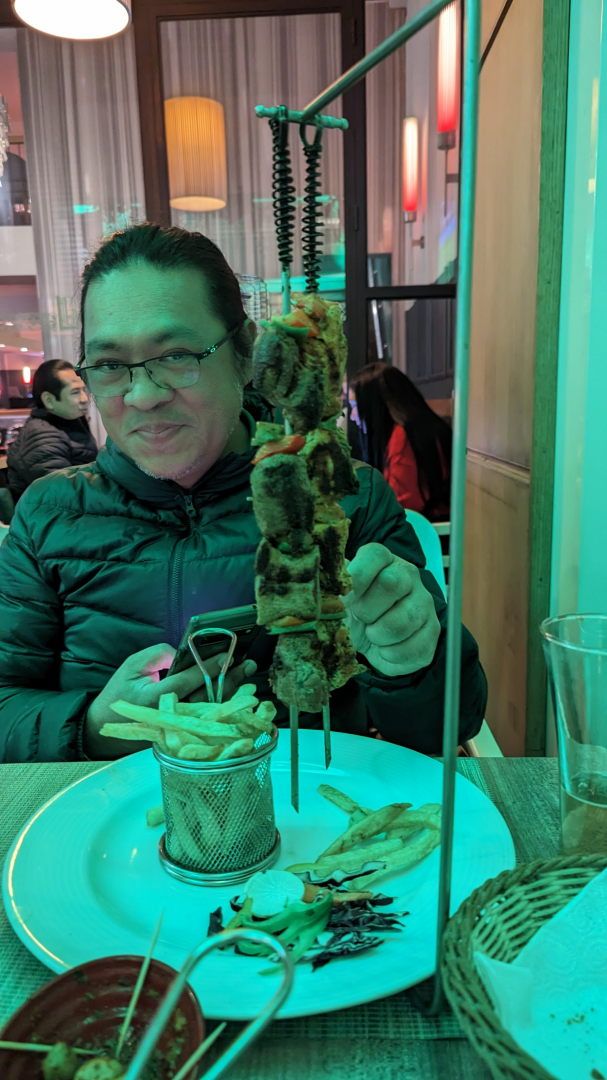
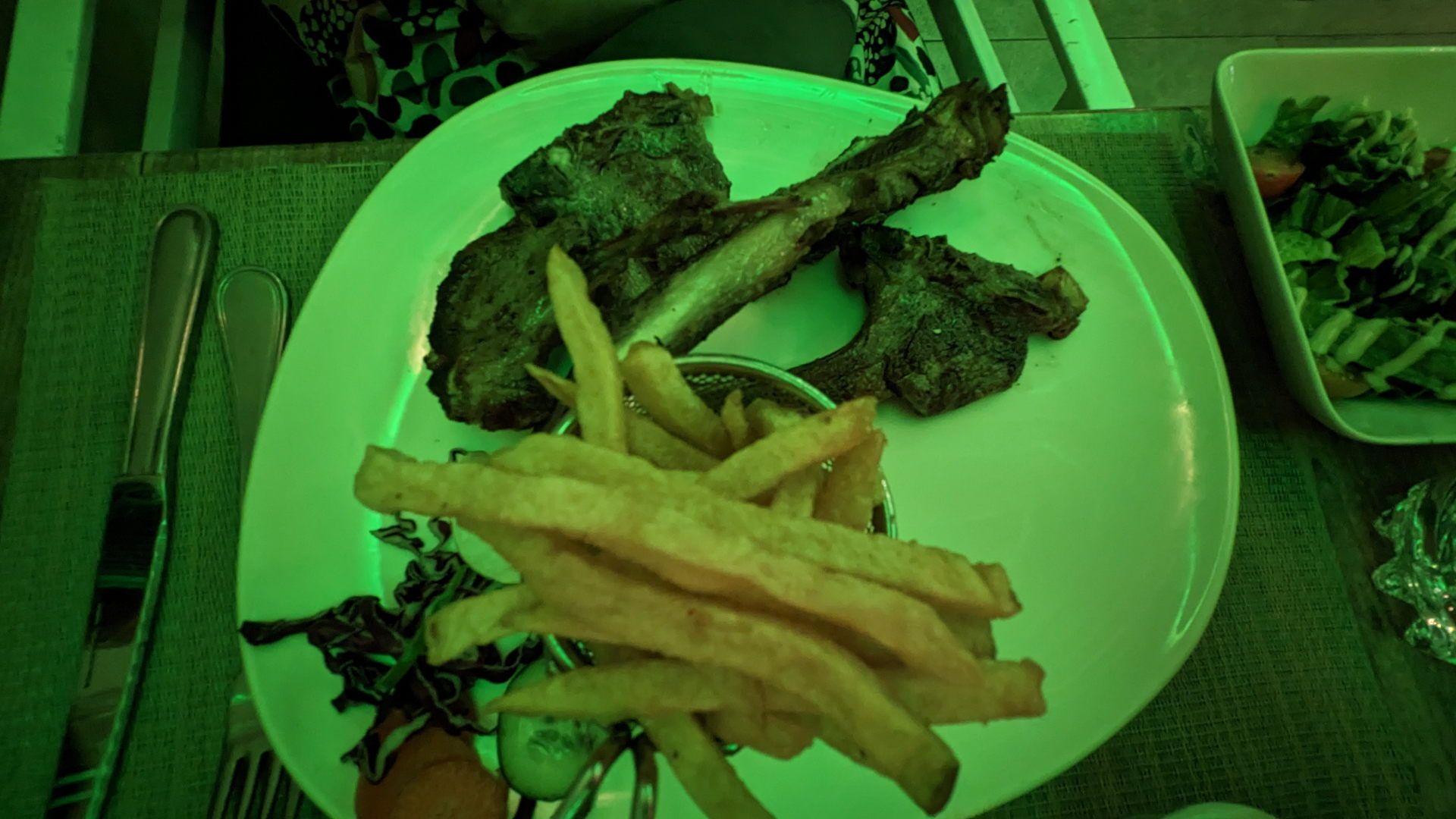
Tajine refers to the red earth clay pot as well as the dish. You'll find various types of menus utilizing it. Scientifically, its like a slow-cooker which renders the meat moist and tender. The salty-bitterness of olives actually complements the citrus added as seasoning. Yum!
Boil the meat and fry with fresh coriander, onions and hot spices and a little garlic. Then pick out the fennel hearts and cut in half. Put over the meat. Put back some of the broth on it along with sheep's tail. Boil until cooked and the broth has been absorbed. Remove [from the heat].
— Ibn al-Adim, Kitab Al Wuslah il Al-Habib fi wasf al tayyibat wa Al-Tib

Moroccan mint tea is delicious, particularly with two-(2) lumps of sugar. The preparation ceremony slightly varies but it is the same gunpowder tea (introduced to North Africa by the British in the 18th and 19th century via Morocco and Algeria) that has been produced in parts of China since the Tang Dynasty. The locals drink this all times of the day.
Somebody Feed Phil Season 3 Episode 1 featured some of the food choices available in and around town.
Places to visit
To streamline our trips we map out arrival and departure times and crawl through various travel sites for the best places to visit. The rule is to get where we can with the most we can and not sweat the small stuff during an initial visit. If this is a return trip then we either choose a different set of activities or repeat the ones we liked most. Once we've identified the top places to go then its time to map out the things to do via Google Maps (Bing Maps or whatever you prefer on your phone since it is what is going to be in your hand) including the amount of time to get from all the points of interest.
If mapping the places to go gets confusing, then its time to call in the experts. This is where TripAdvisor and Viator come into play apart from whatever information we previously had on hand during the initial planning search.
Excursion 1: half-day
We didn't want to exert ourselves soon after arrival and decided to sleep-in longer and take a half-day tour around town to cover our bases.
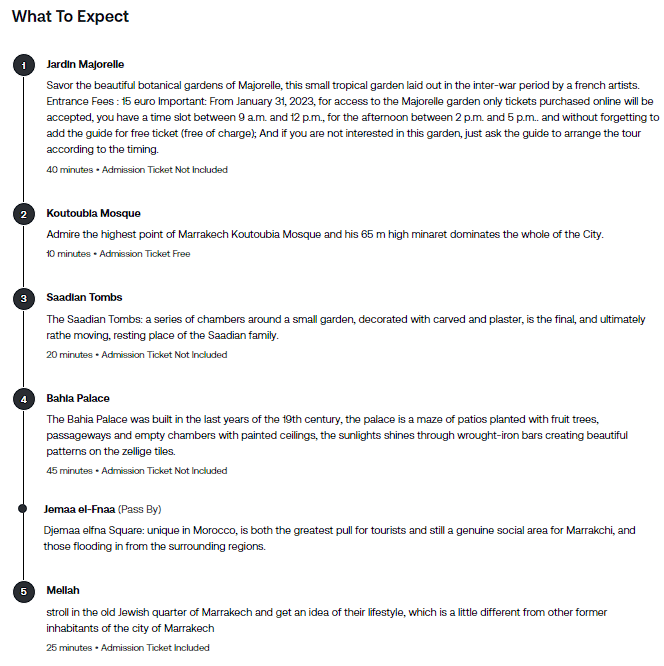
The Jardin Majorelle is an art and botanical garden originally designed by Jacques Majorelle. After falling into disrepair in the 1950s it was purchased by Yves Saint-Laurent and partner Pierre Bergé when they rediscovered it in the 1980s. They took it upon themselves to restore the garden to its former glory.
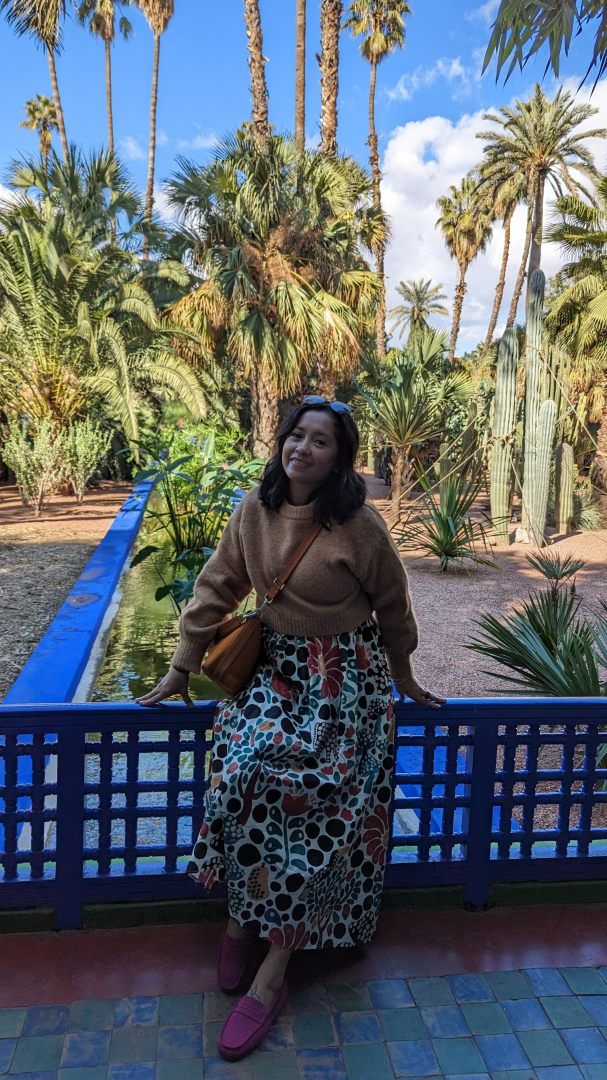
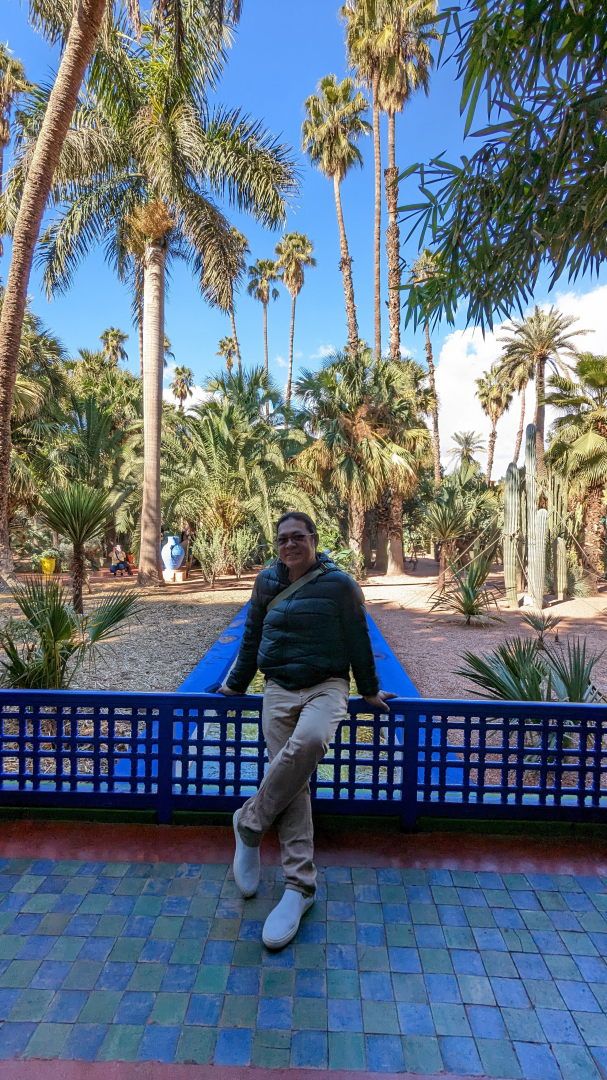
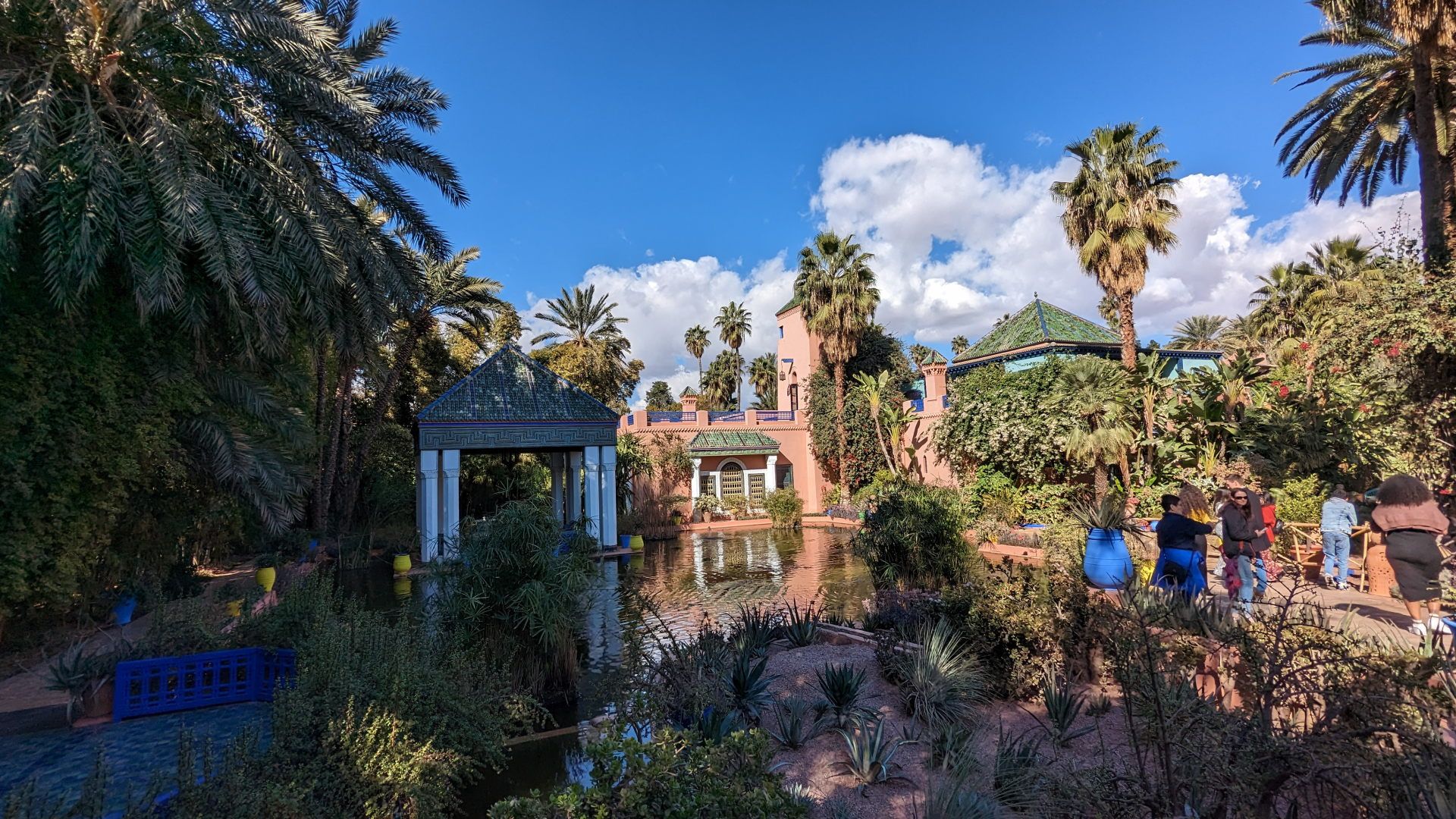
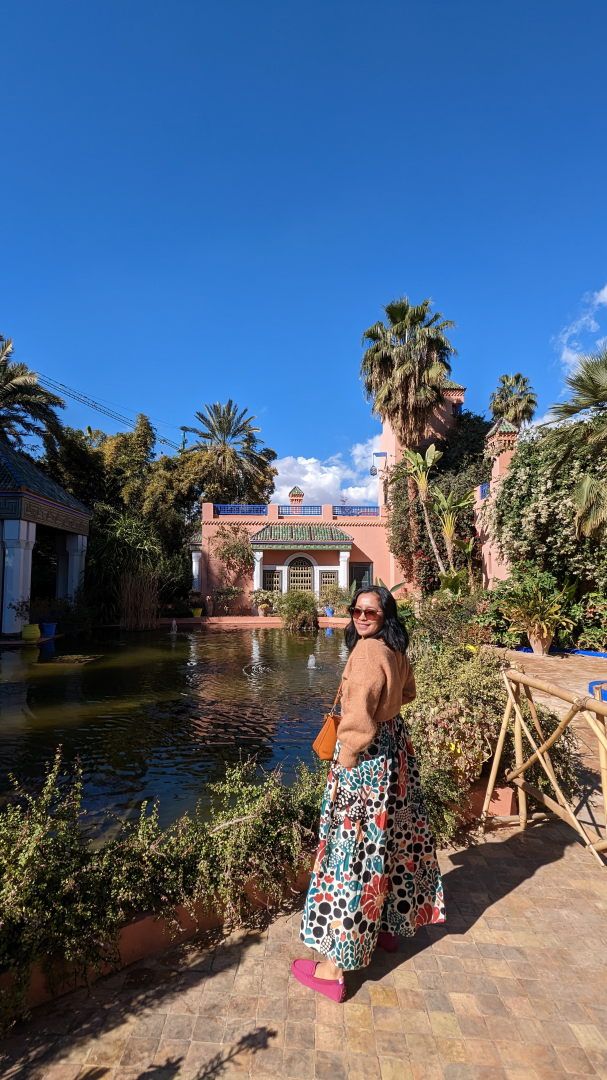

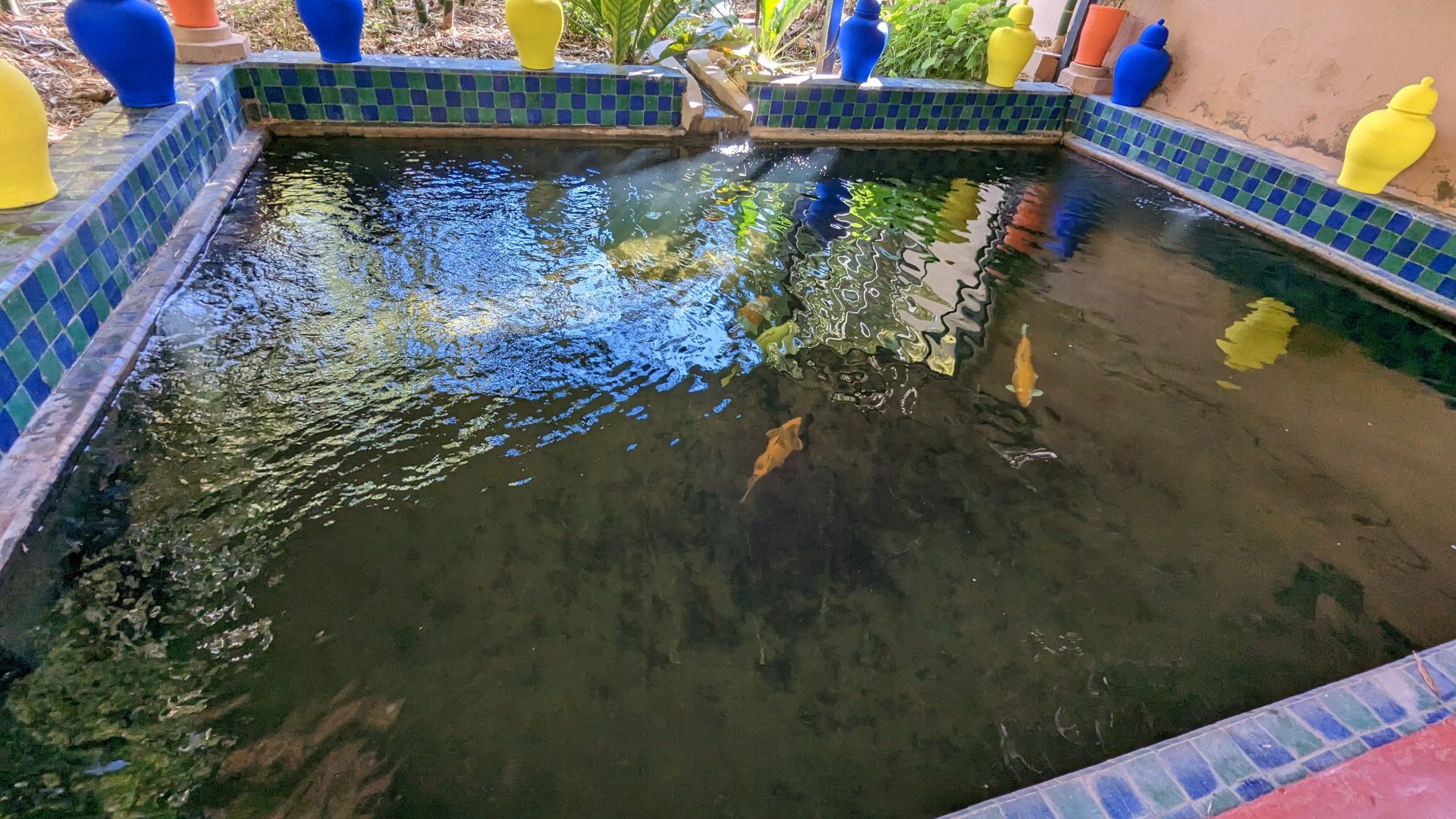
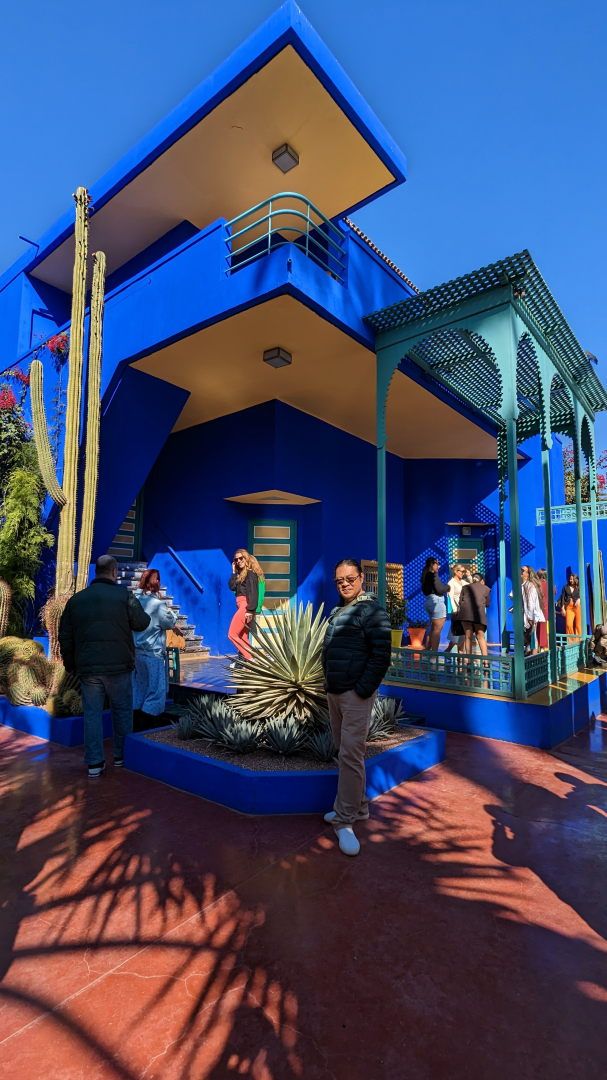

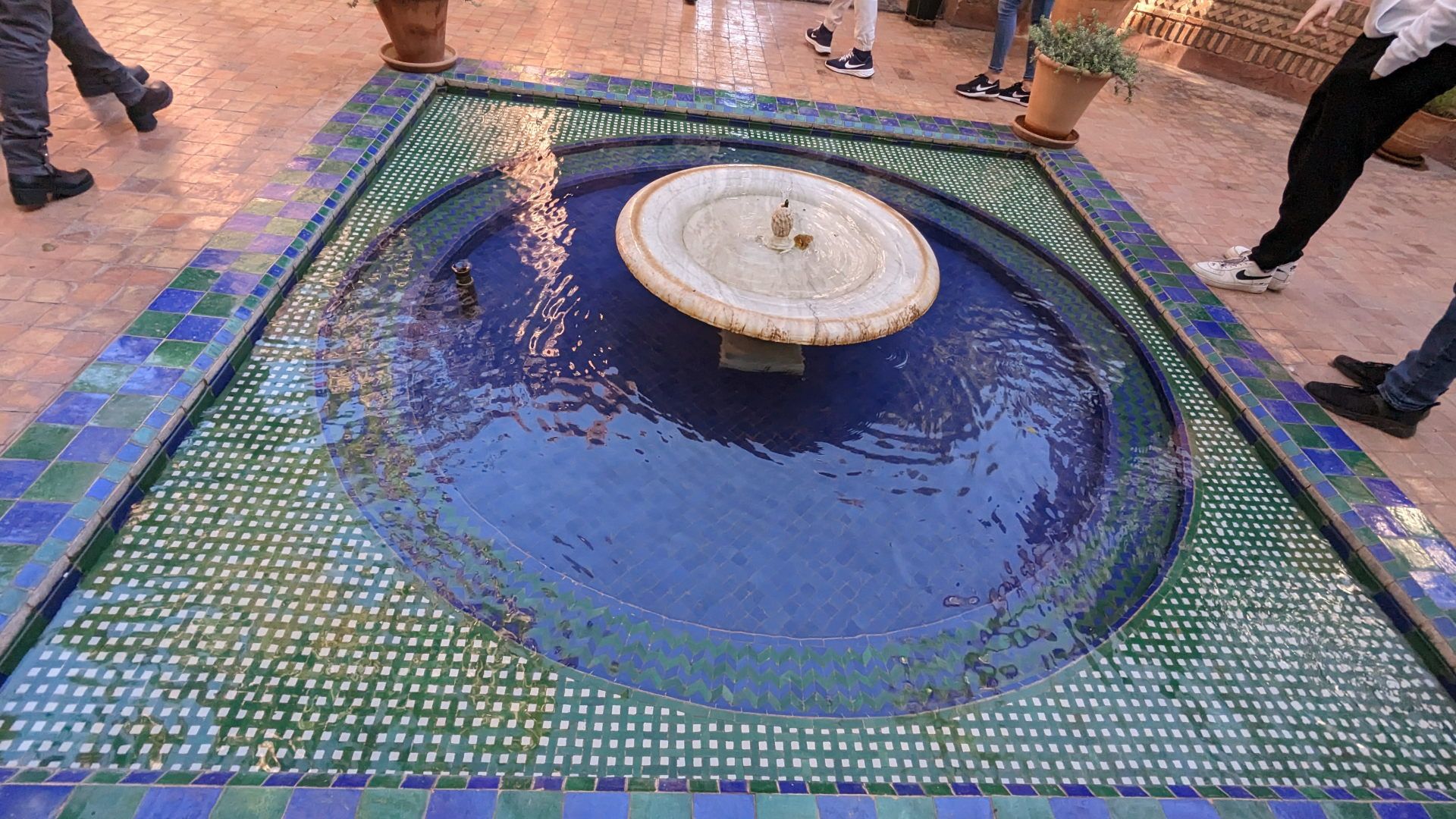
Upon his death in 2008, YSL's ashes were scattered in the garden. A memorial to the duo sits at one end of the garden as a tribute of gratitude to the care and support both expressed in their lifetimes.
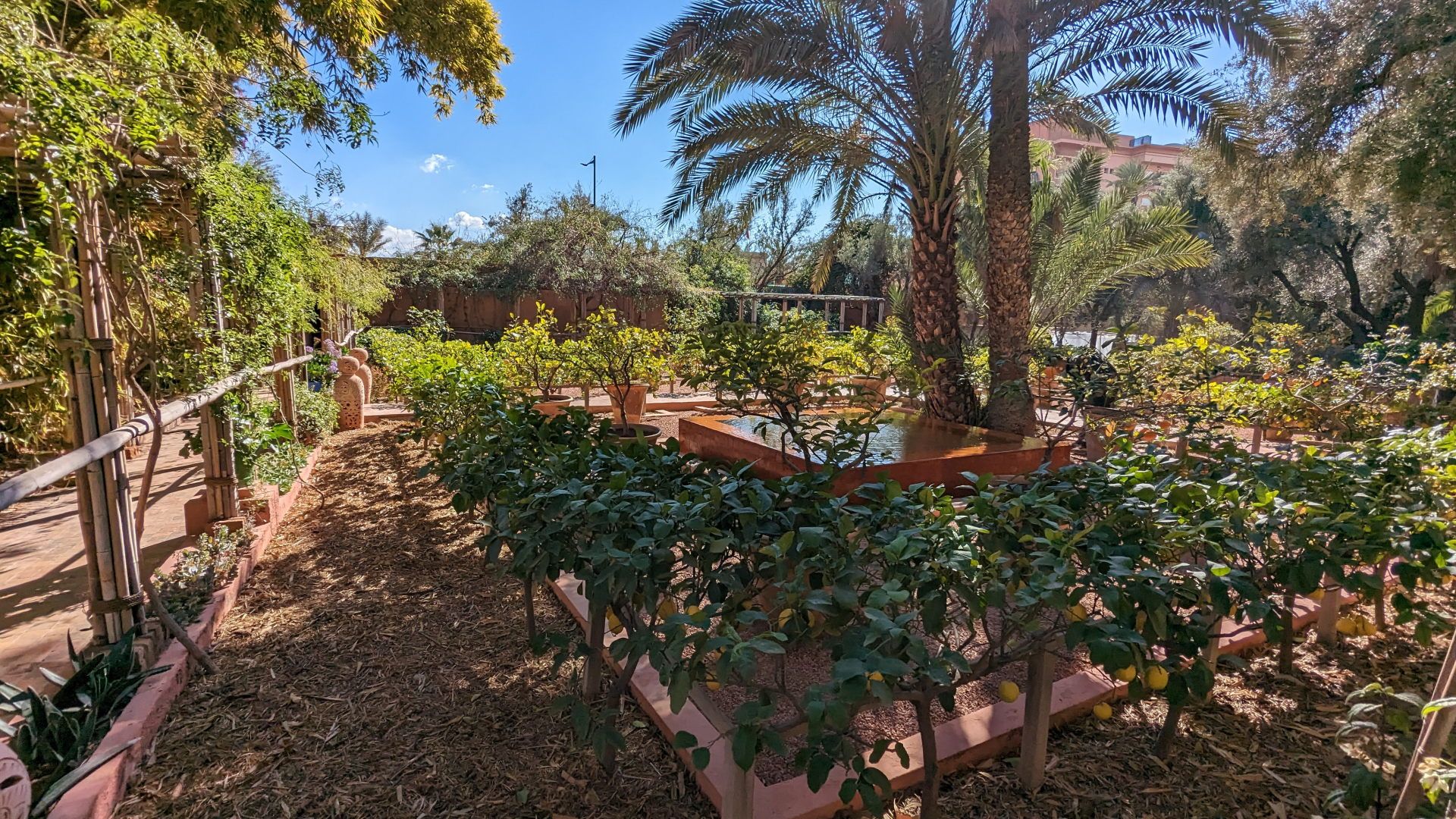
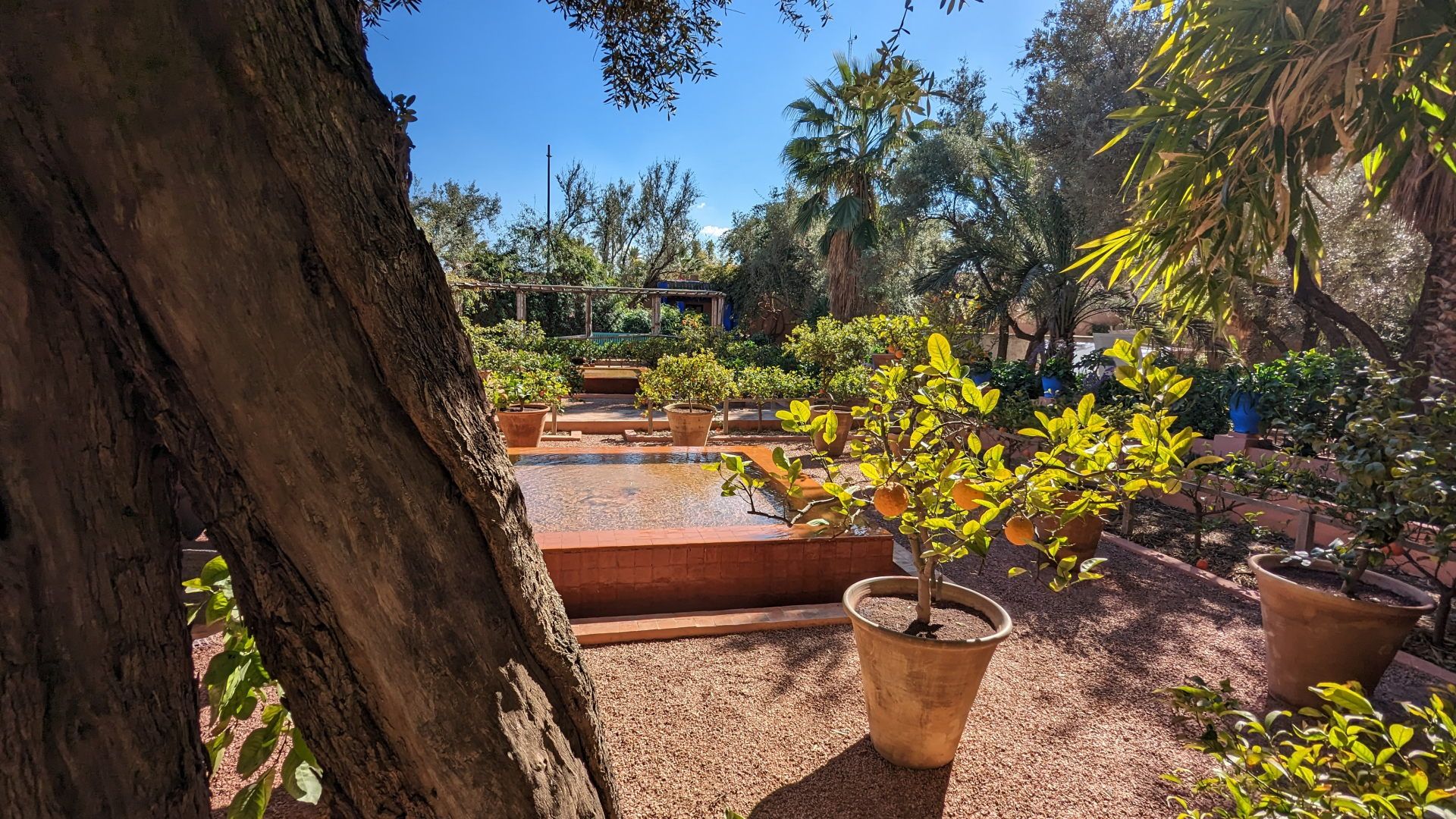
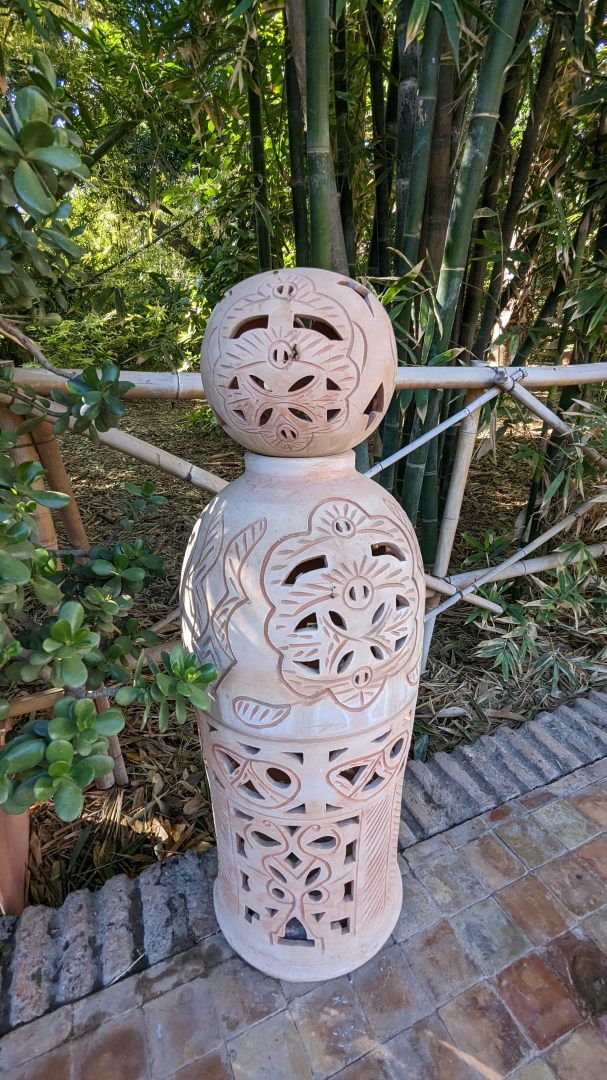
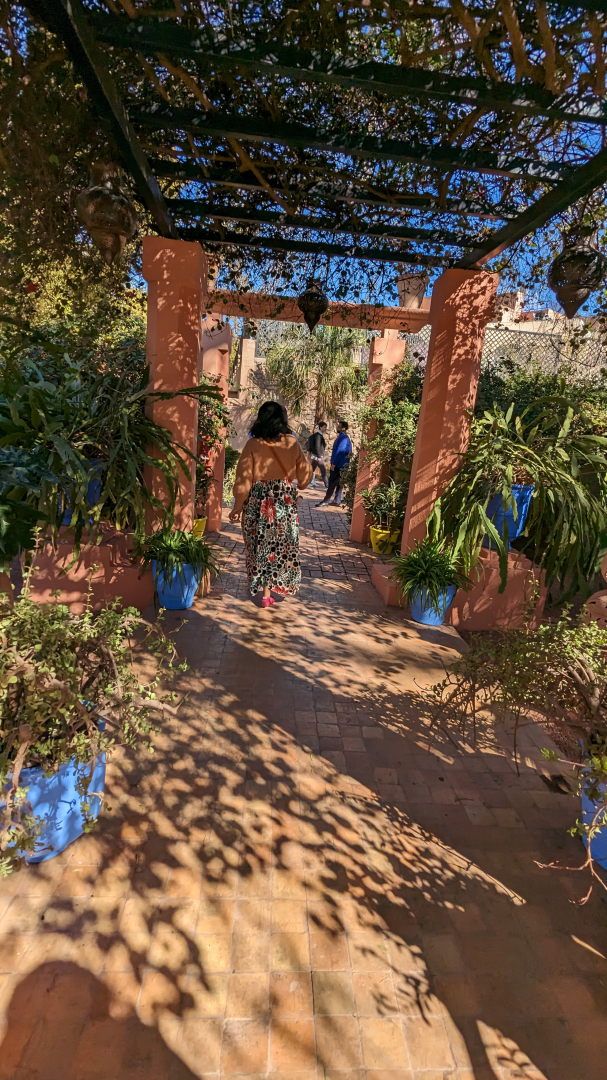



The Koutoubia Mosque is the largest in all of Marrakesh, and even if it is the second tower built nine-(9) years later in 1158 with a minaret that still stands as a preserved perfect example of Almohad architecture.
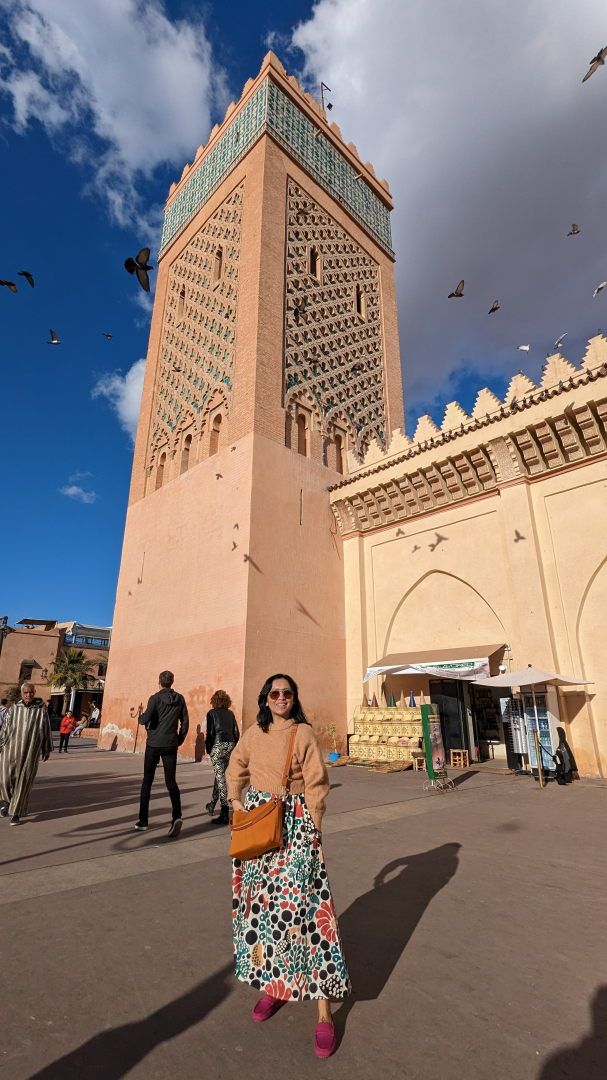
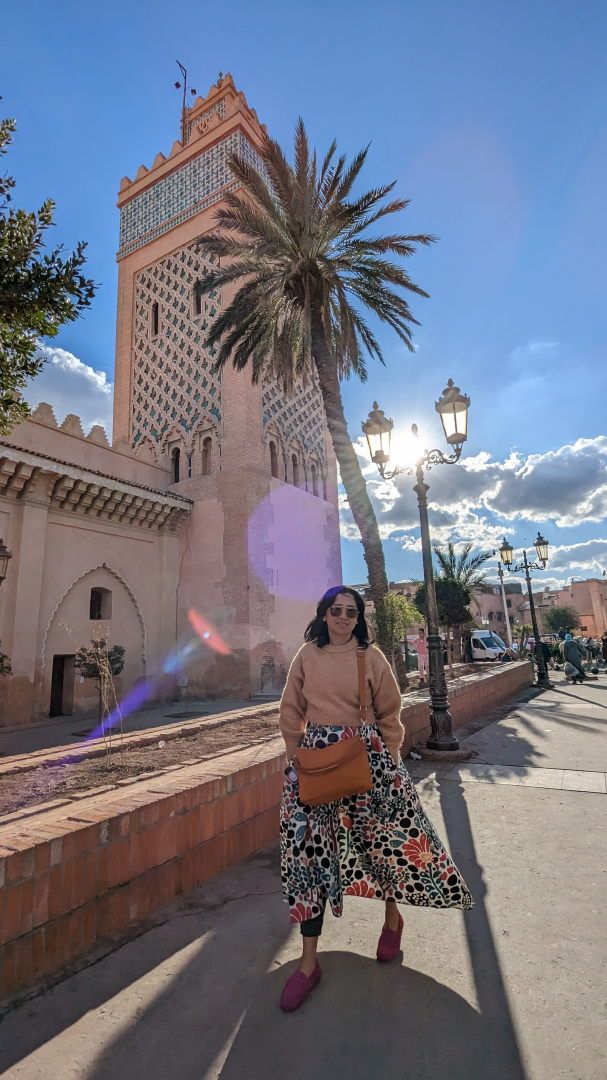

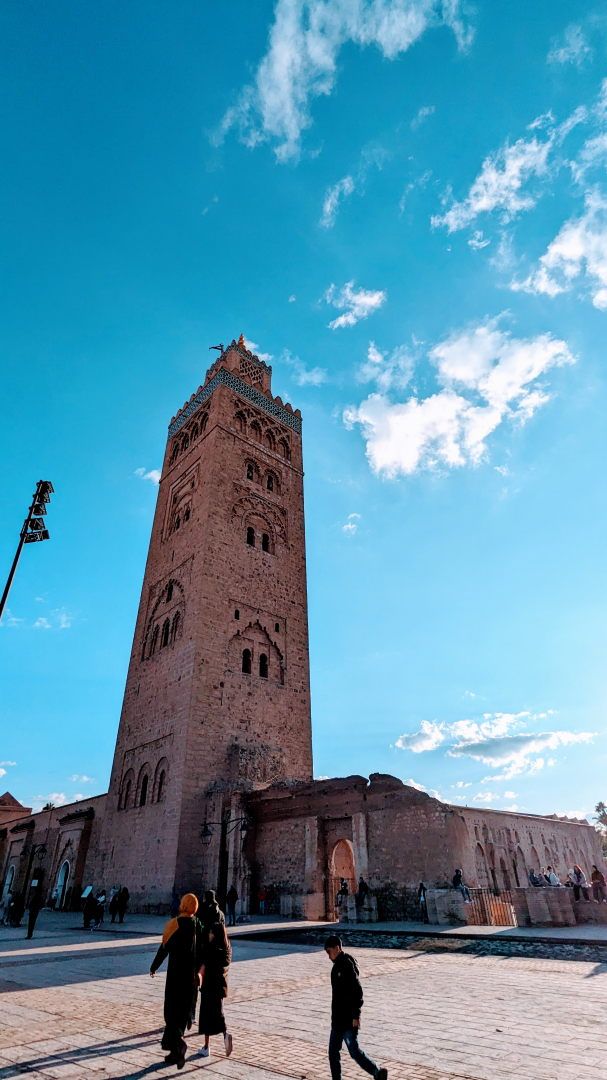

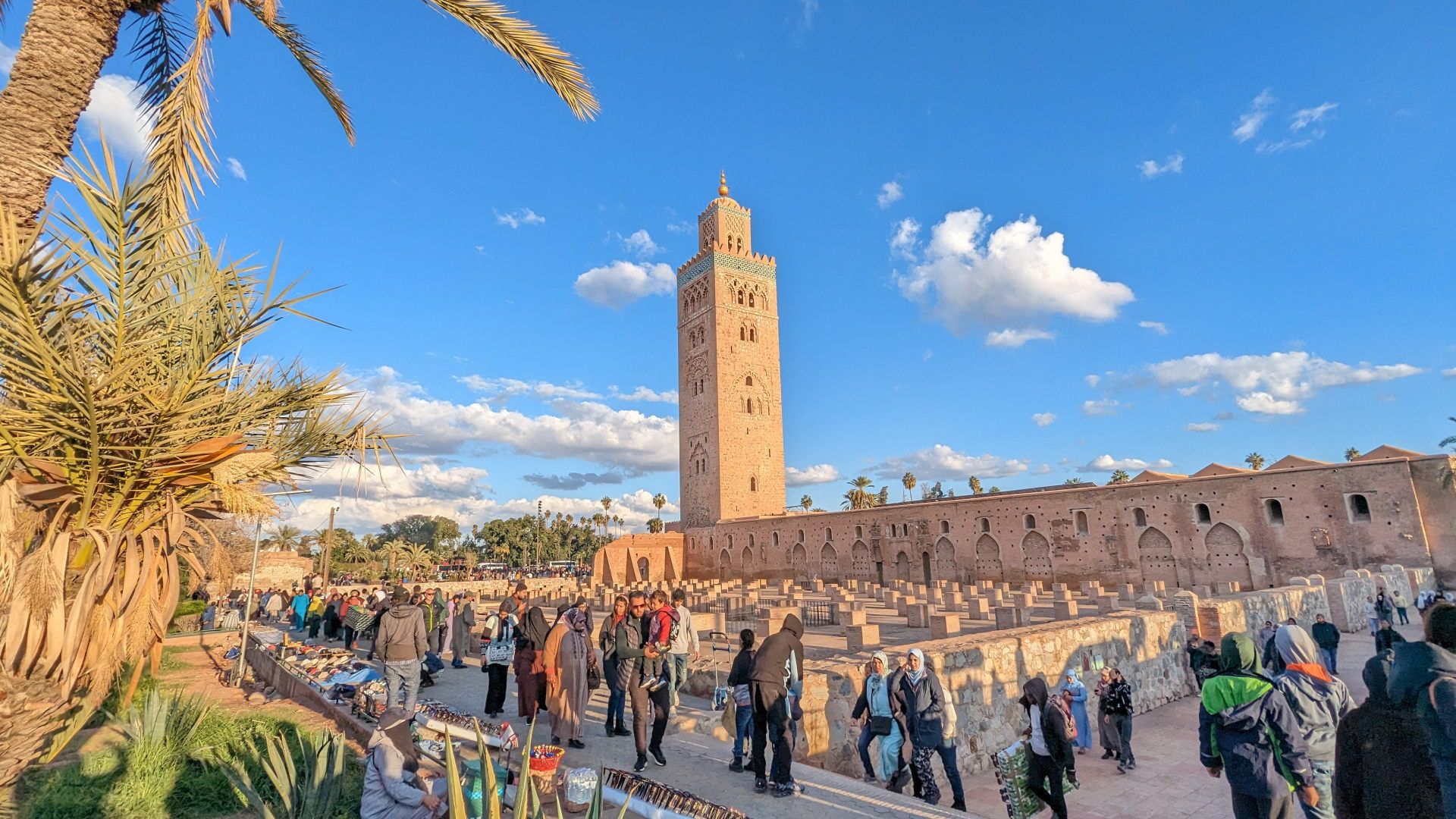
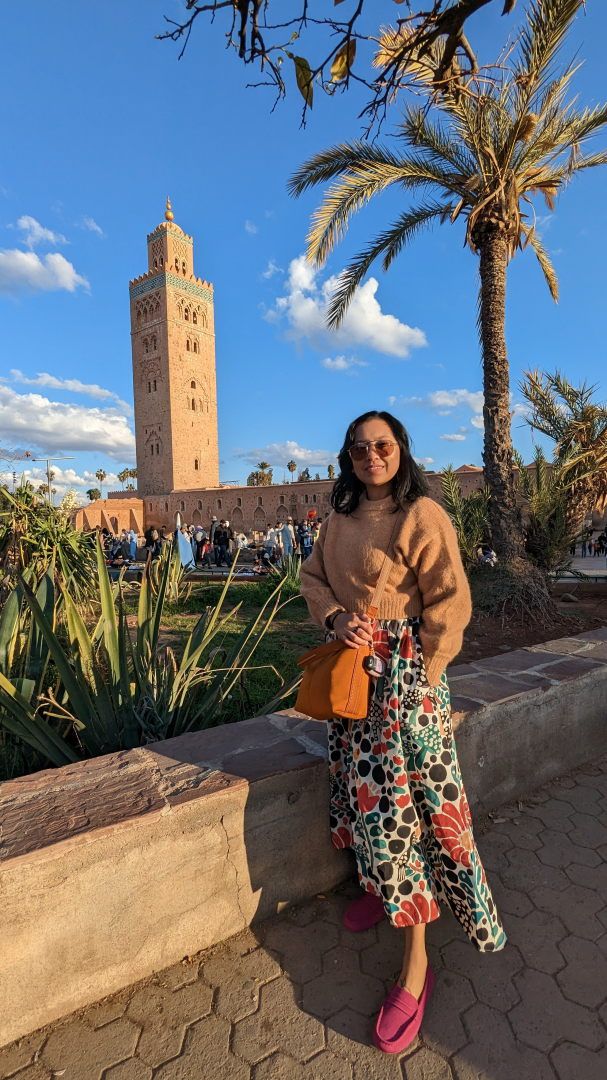
The Saadian Tombs is a historic royal necropolis that dates as far back as the mid-15th century of the Saadian Dynasty. Even though control over Morocco has changed hands many times you will find a mix of sultans, kings, and their retinue buried here. You'll know who the most important one is due to how much marble in-lay and multi-color hues are used to decorate the tomb.

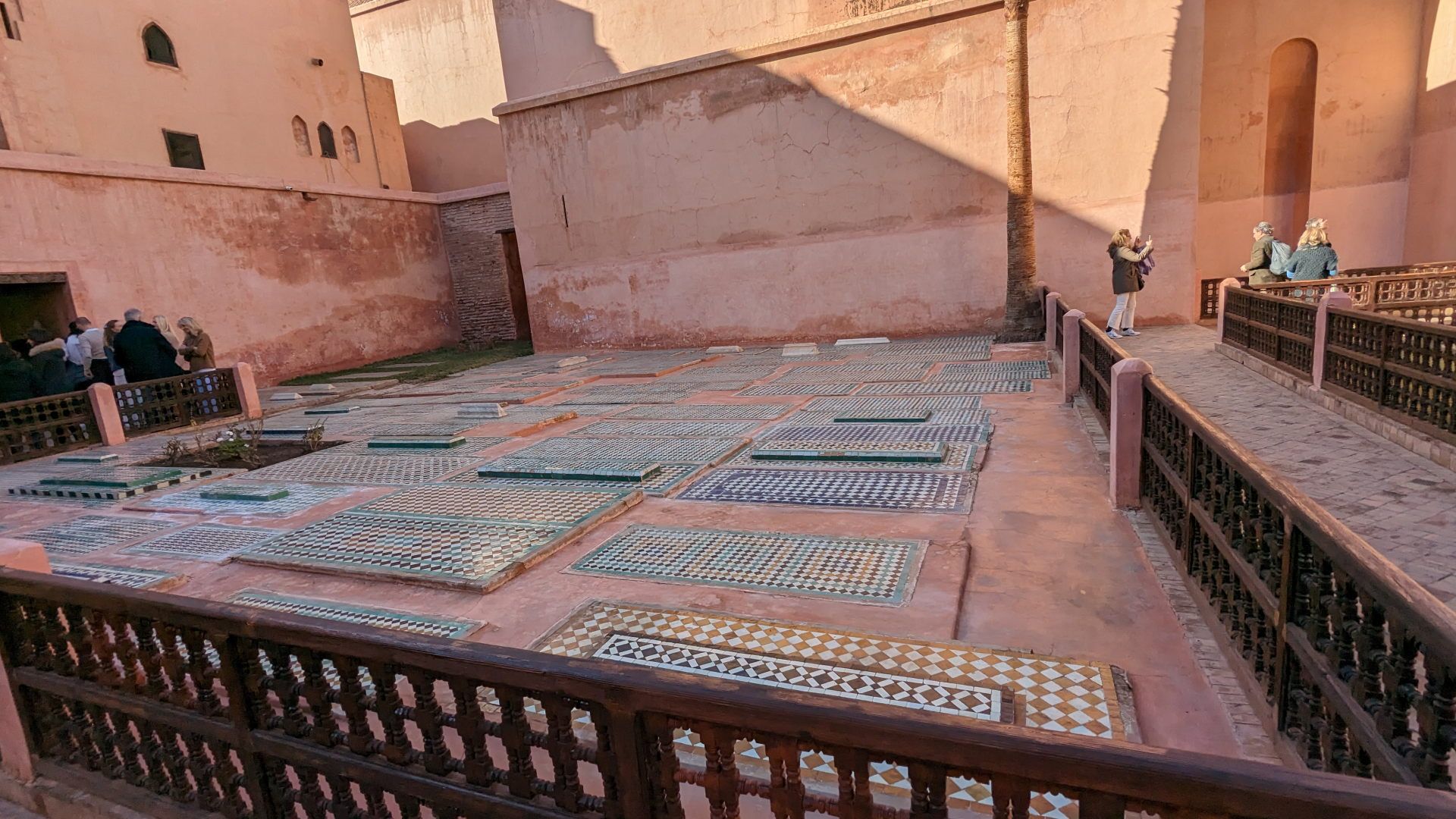
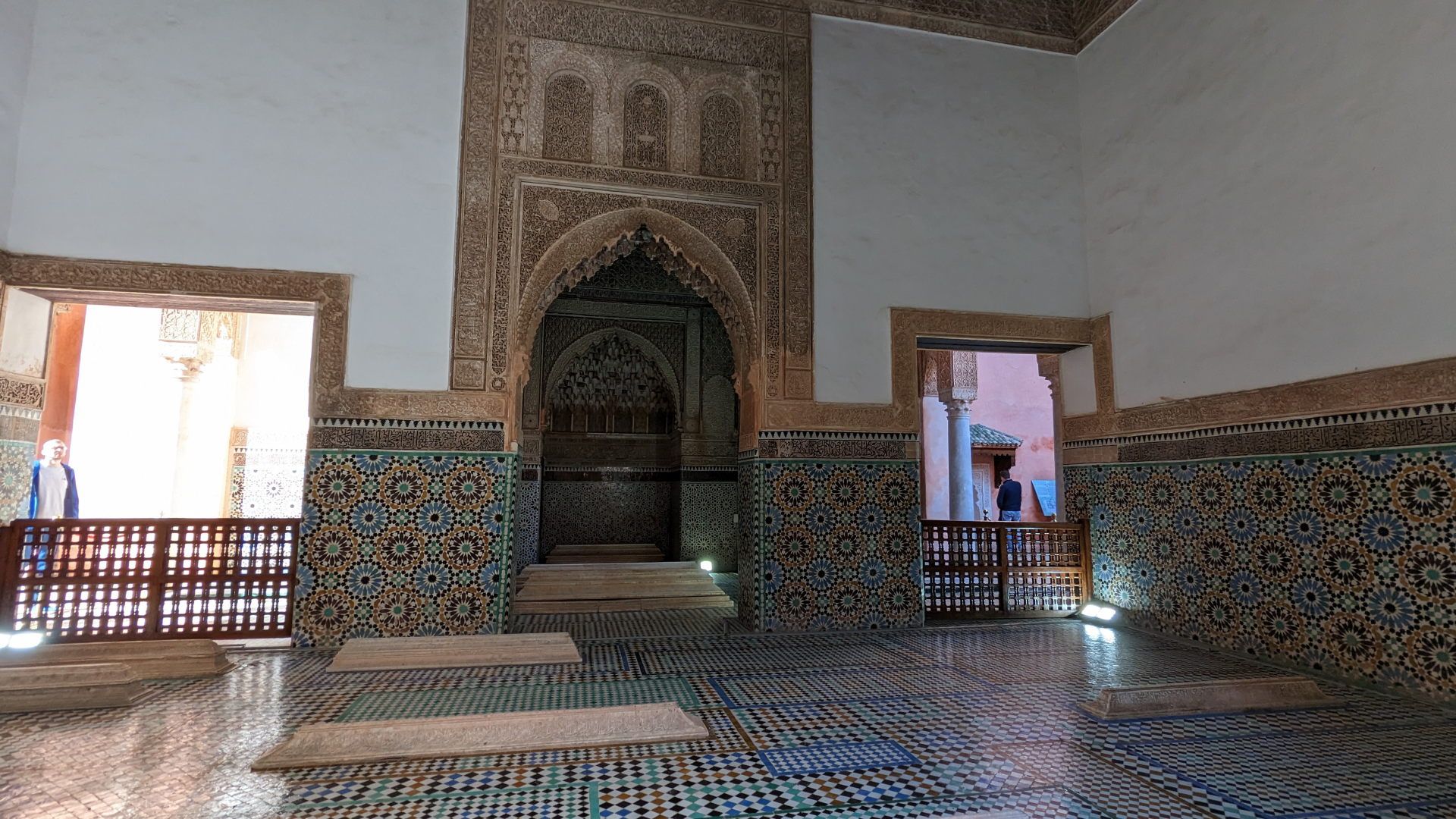
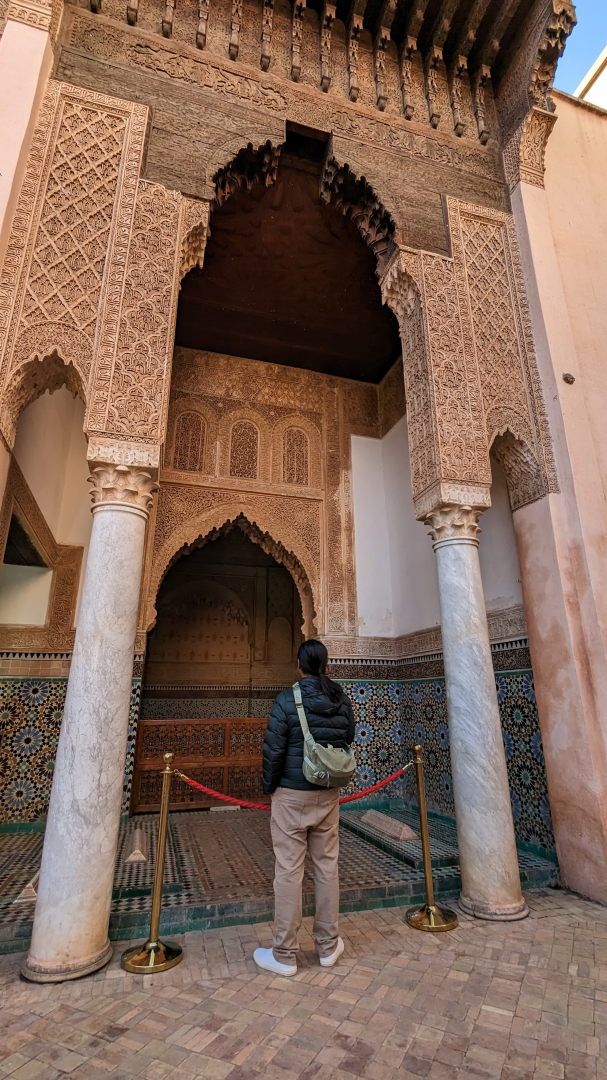

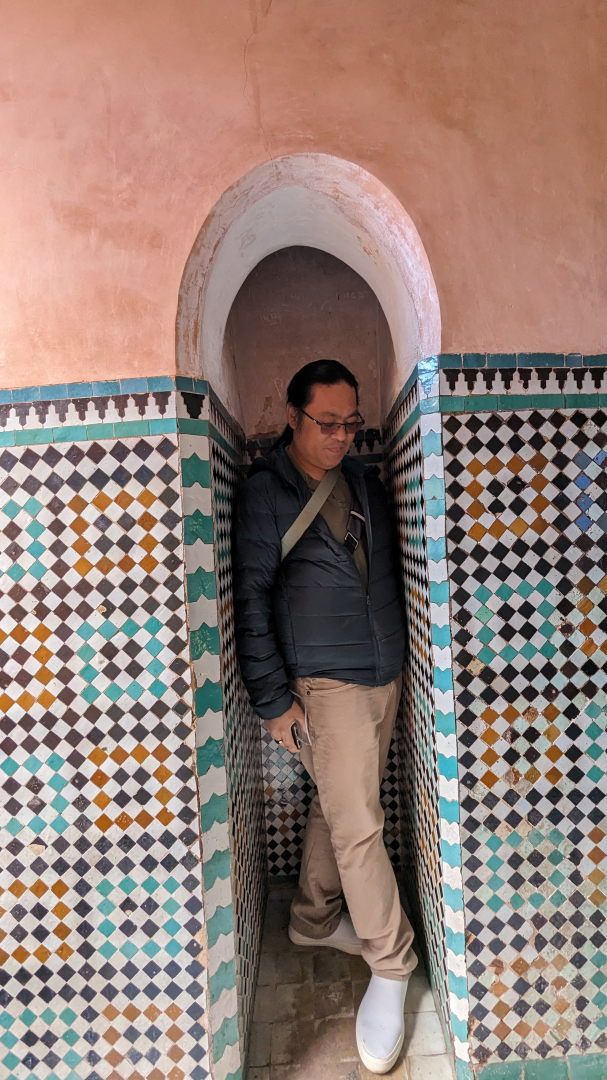

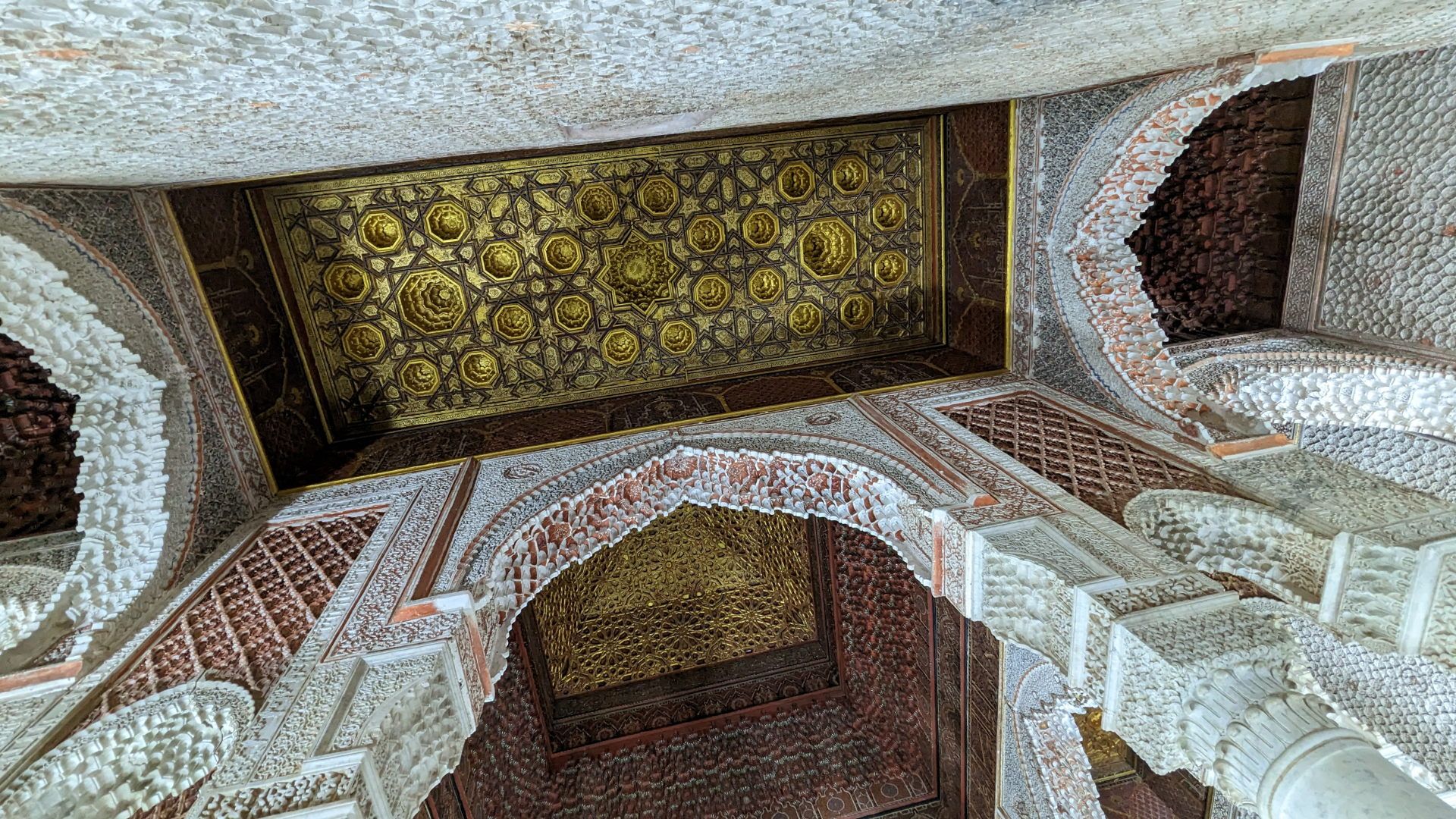
The Bahia Palace's latter construction and expansion was due to the need to accommodate the household and harem of Ba Ahmed, as well as his servants and slaves. It is believed that its name comes from al-Bahia (the Brilliant), Ba Ahmed's favorite wife. There is a long walkway outside of the palace lined with Seville (bitter) oranges. These seemingly empty alcoves were usually occupied by any number of wives trying to cool down during the heat of the summer months.
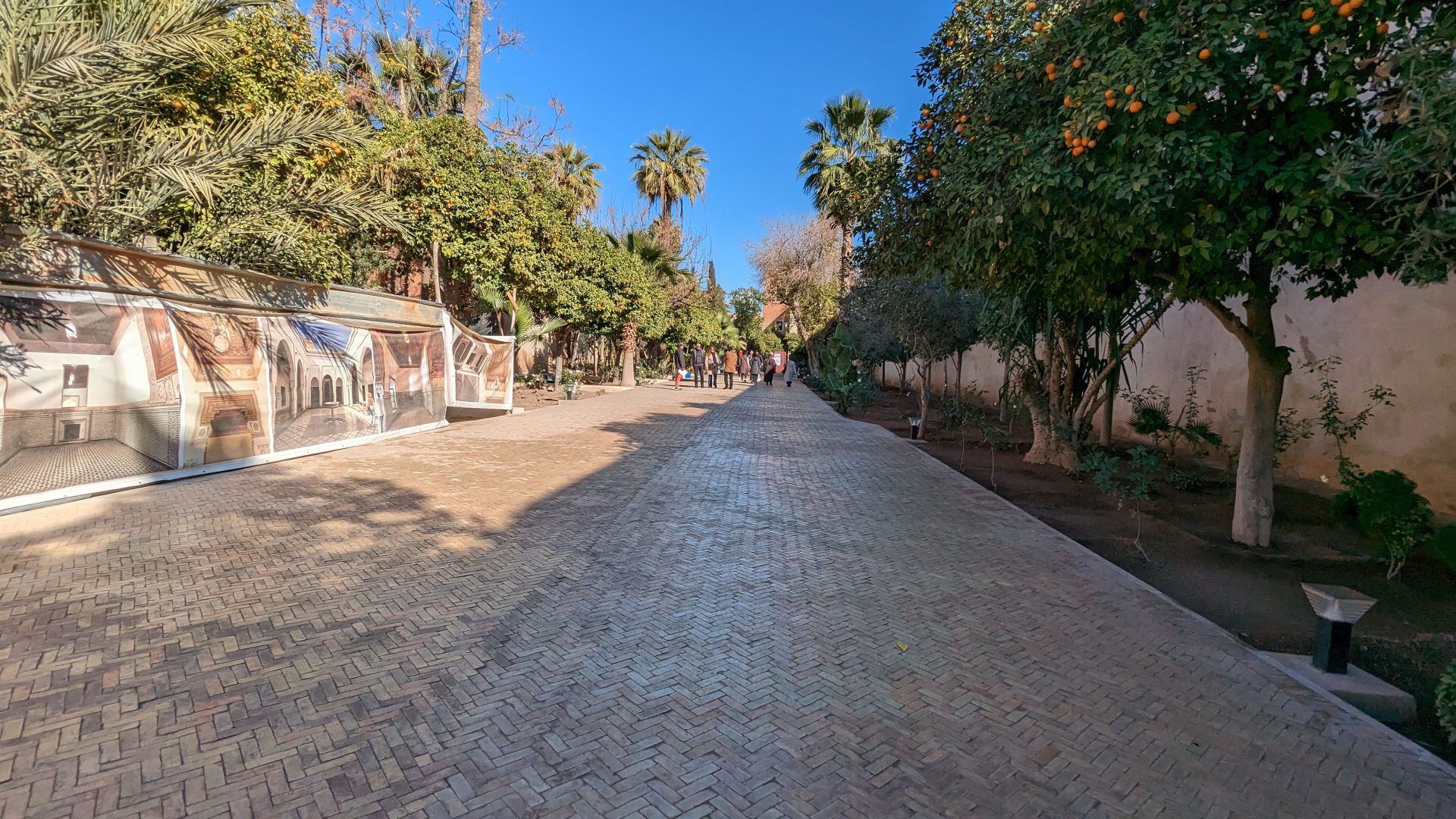
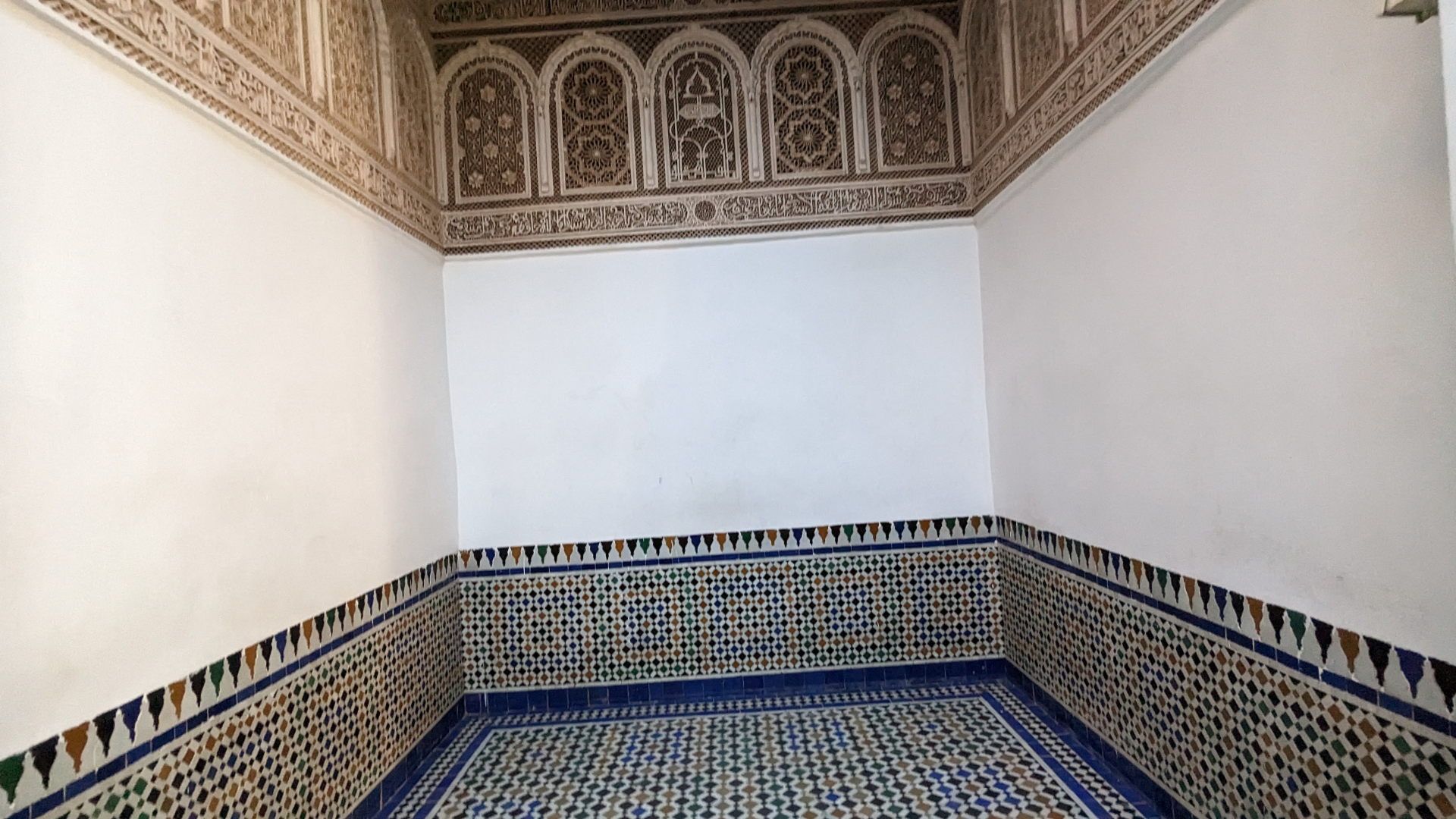
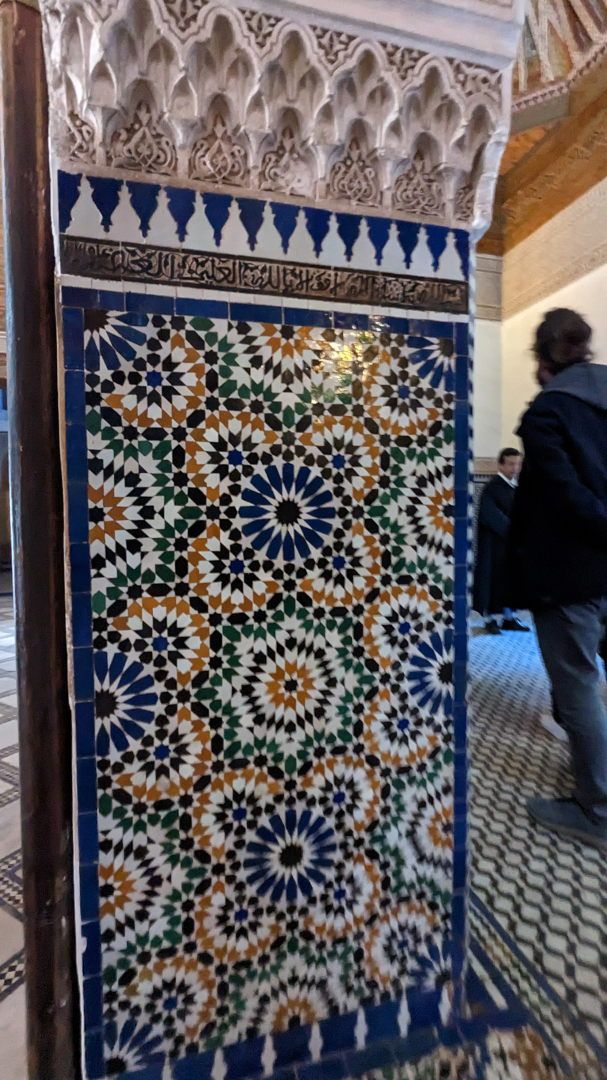
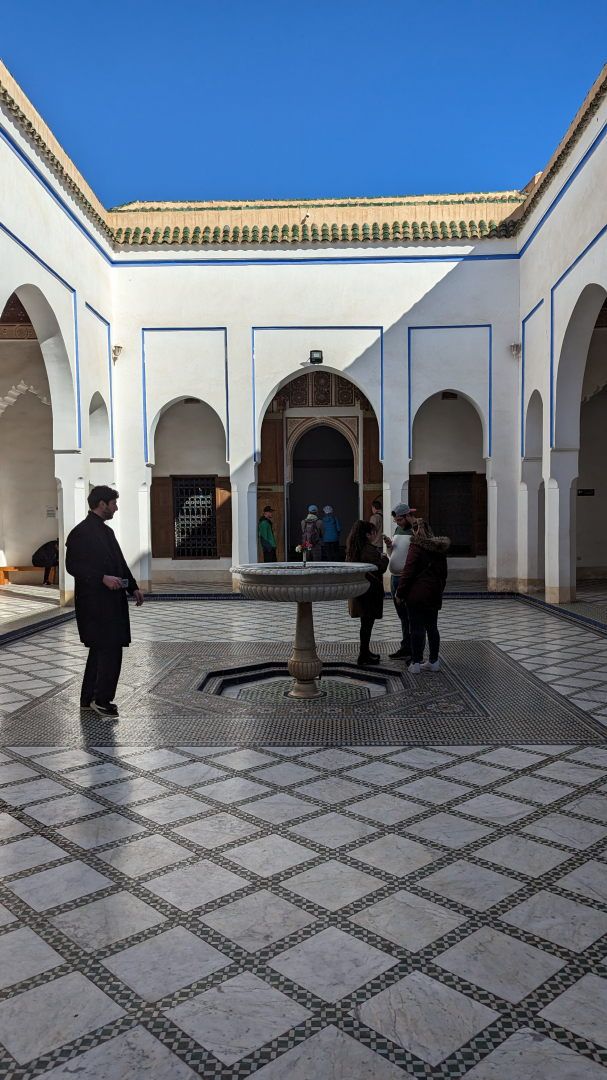
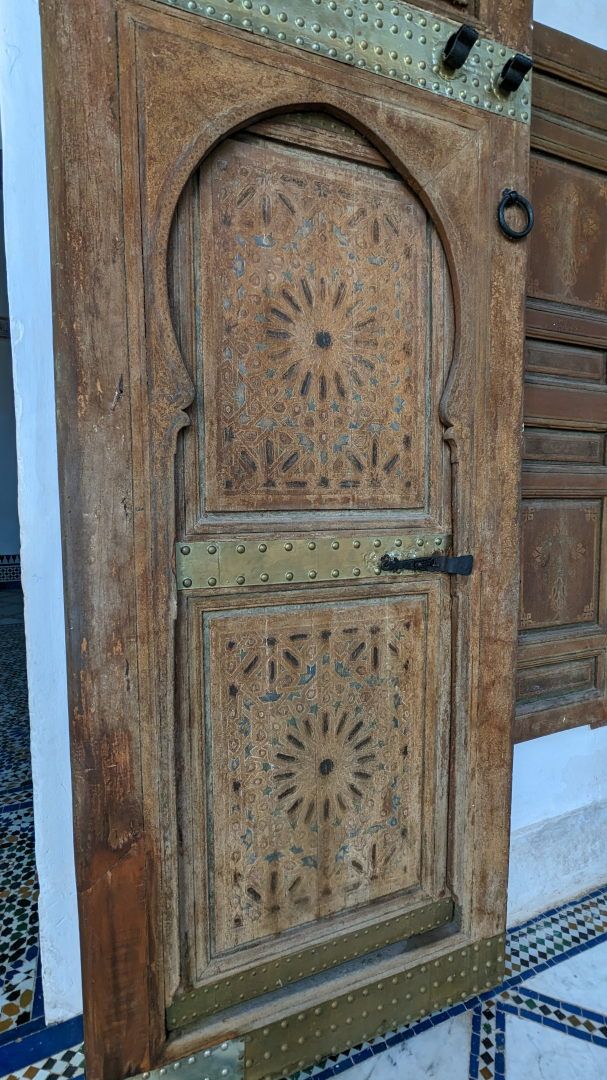
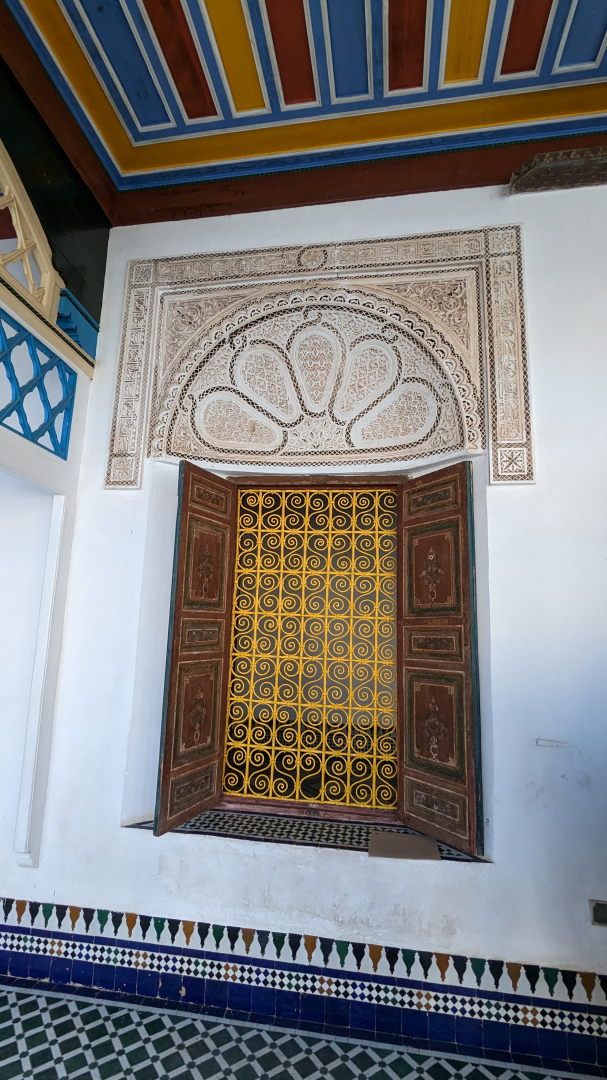
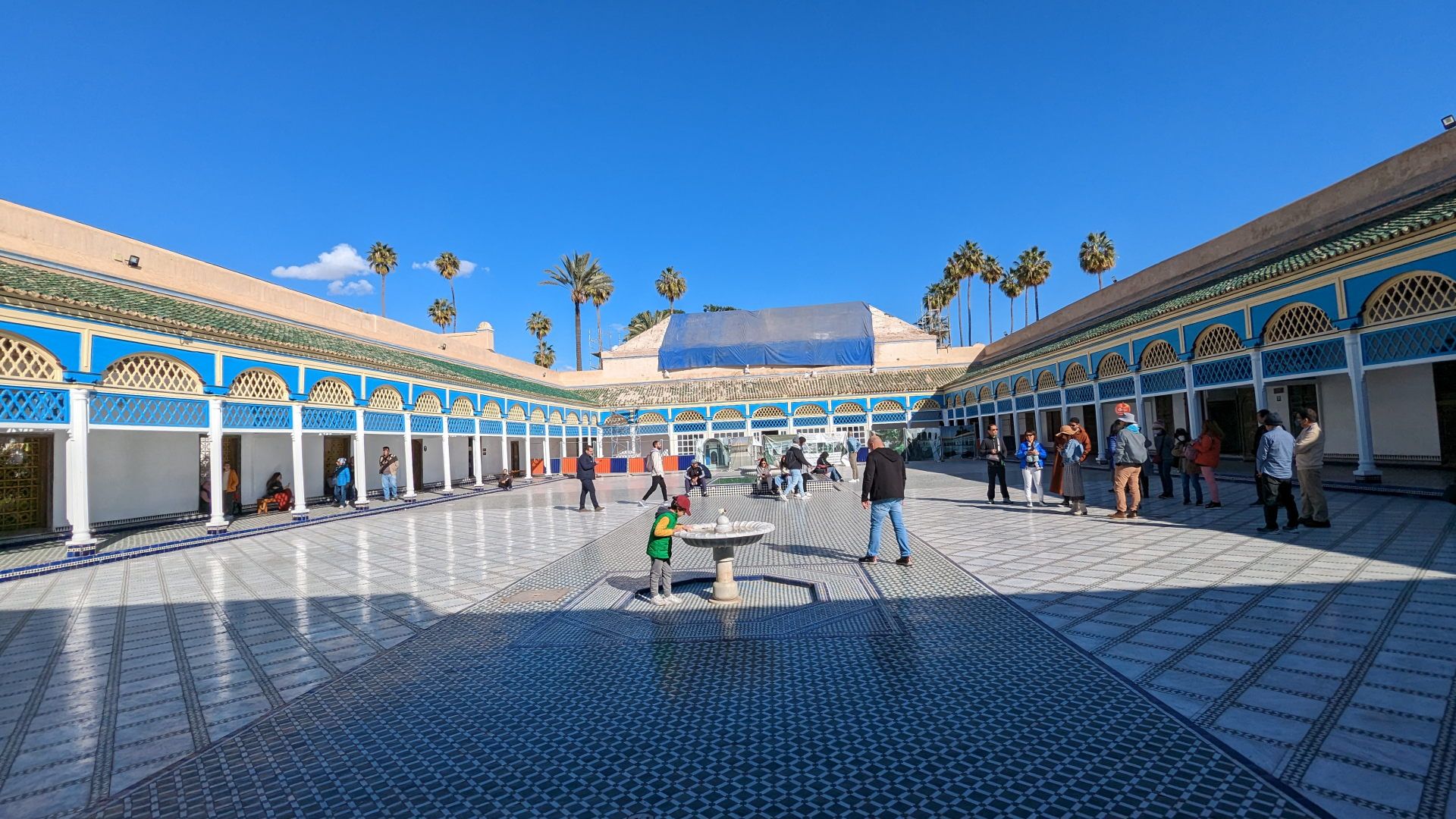
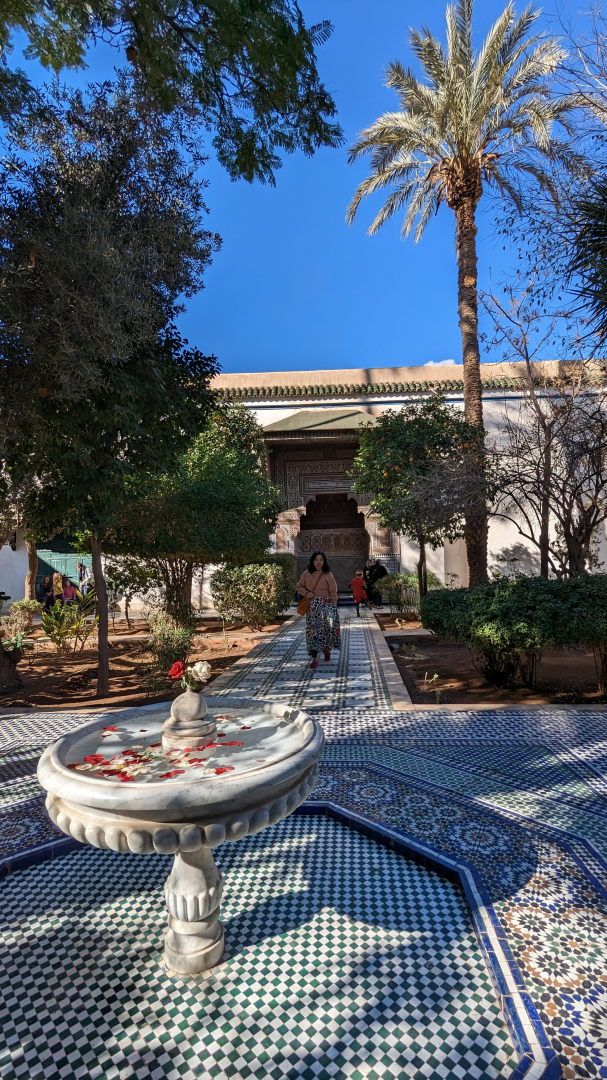
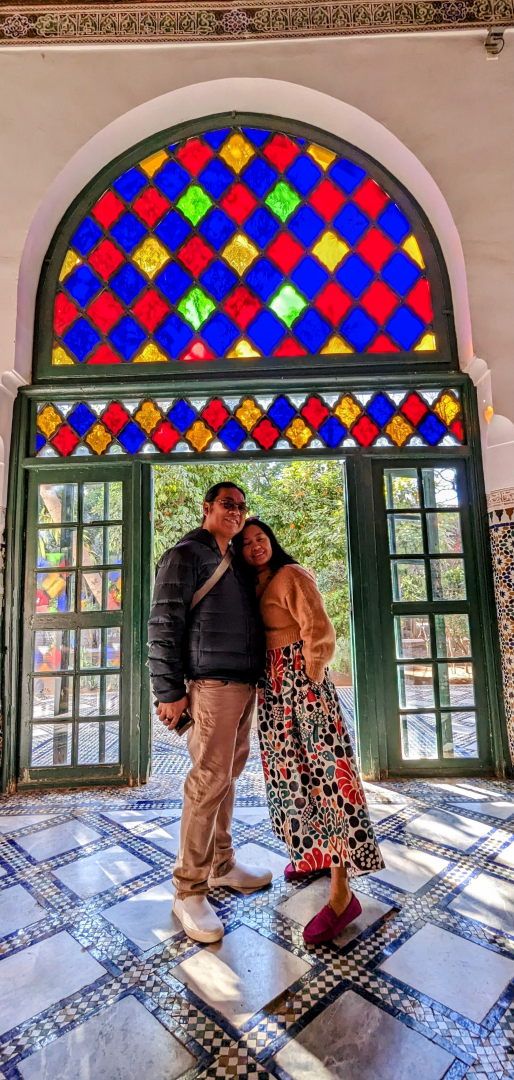
Exquisitely hand-painted ceilings and architectural design show the craft of the times. We noticed that in every room there was a fireplace (not originally part of any Moroccan design) which our guide explained was due to the French occupation and their preference for such things.
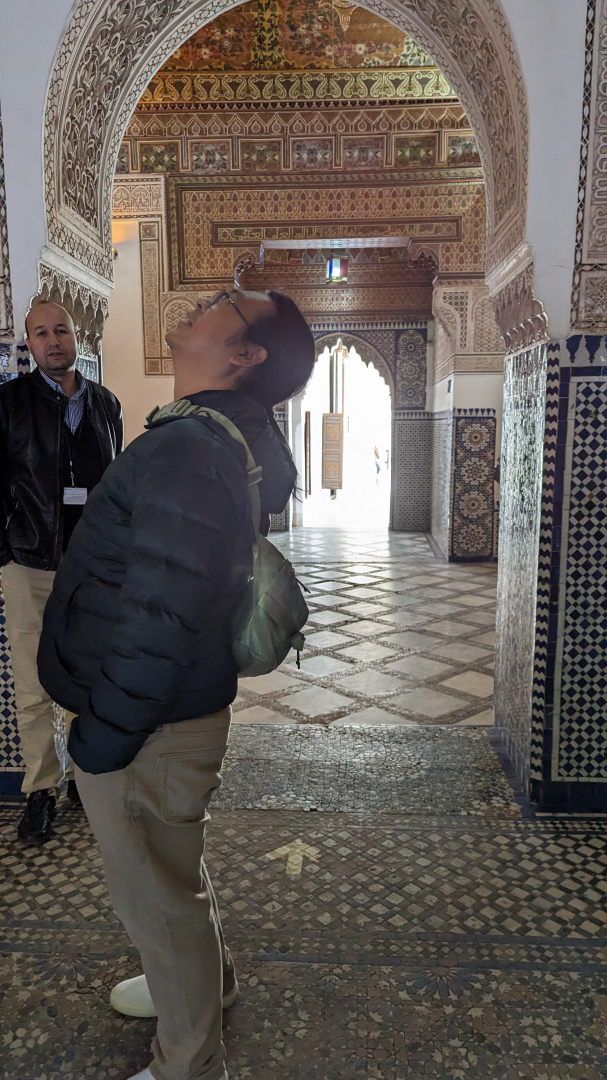

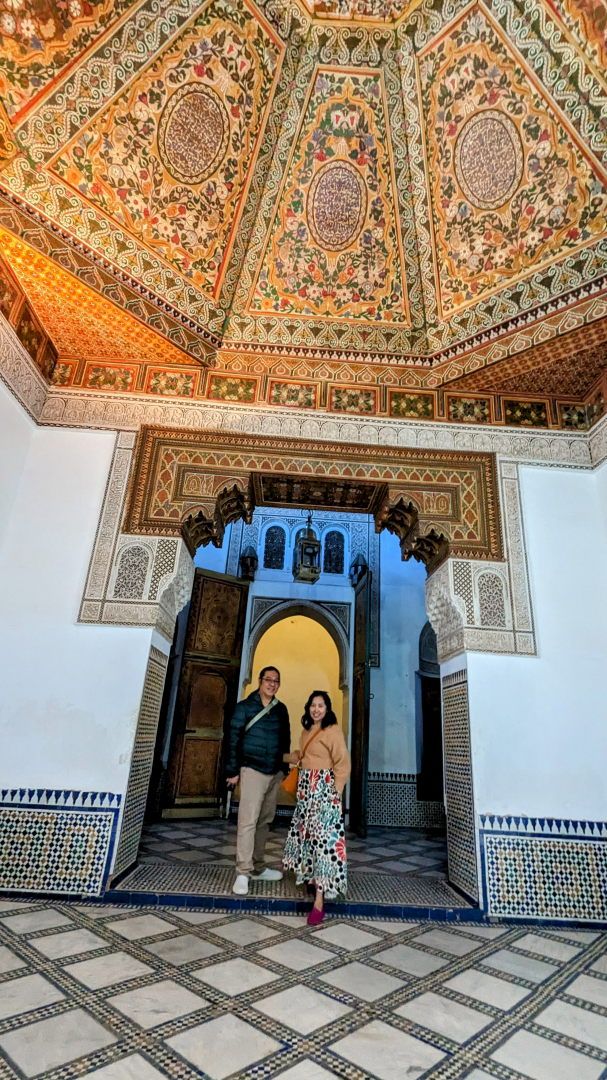
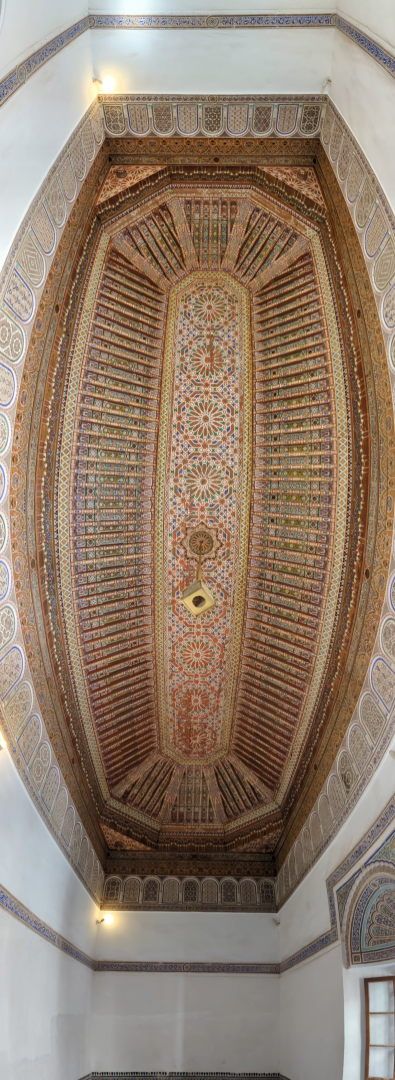

The Medina of Marrakesh (Jemaa el-Fnaa) is a UNESCO World Heritage Site. It was founded in 1070 where it influences trade between North African and Andalusia (south Spain). Around it you can find several architectural gems constructed due to its importance as the "red city" in reference to its buildings and ramparts of beaten clay. It was also the setting for the 25th season of The Amazing Race in 2014. Next to it lies the Mellah, the old Jewish quarter.
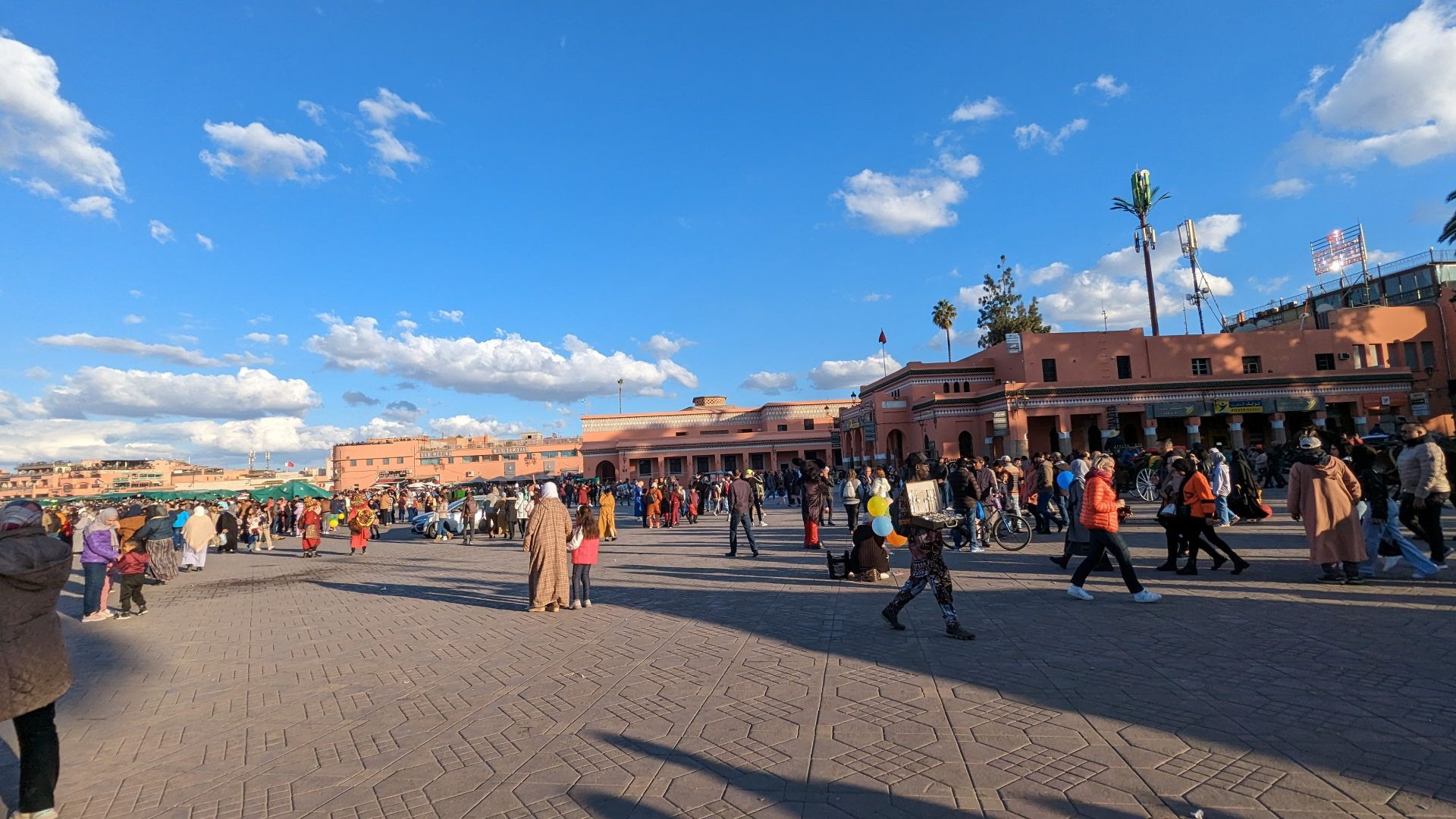
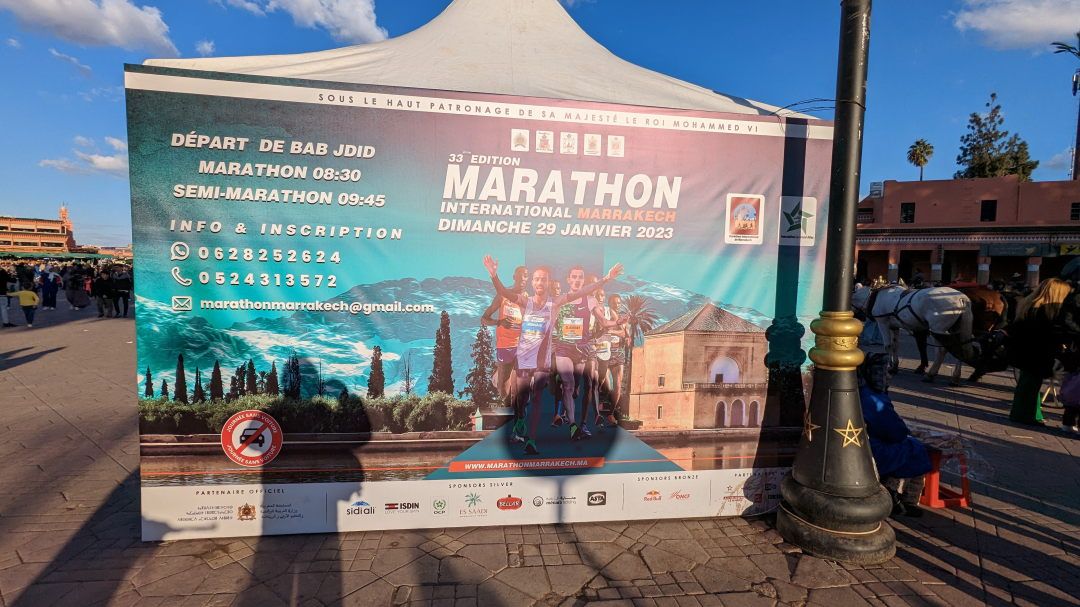

Ali Baba and the Forty Thieves? This is the original title of the Middle-Eastern folktale which is now more often known as Aladdin and the Wonderful Lamp. In the latter, while there seems to be an attempt to make the story even more exotic by changing the setting to "one of the cities of China" the rest of the details mention Maghreb, a sultan, the sultan's daughter Badroulbadour ("full moon of full moons" - moon being a metaphor for female beauty), and other inconsistencies. However, needs to understand that in story telling one doesn't have to use exact facts. It is, however, a fact that several ethnic Chinese groups are Islam given the Silk Road trading routes would have made the spread of Islam and other religions easier by extension.
Where am I going with this? Well, if you start walking around the souks at Jemaa el-Fnaa and haven't shaven a few days you might just be called one in friendly banter or greeting. Smile and use it as a conversation starter and start haggling, which is the national past time!
Excursion 2
Having gotten our bearings we spotted a desert exerience that was hard to pass-up on. Unfortunately, I hadn't planned for the desert which would be deathly freezing cold in January. Since the first part of the trip was to start at the market I was sadly mistaken to find out that it would be 7am in the morning and most of the clothing shops would still be closed. Ah, well, upon discussion with our tour guide and driver he promised to stop-by a Berber coat store to get us prepared before reaching the desert proper.
Here's something to play while reading up the rest of this section:
Excursion 2: Day 1

Tizi n'Tichka is the mount pass entrance across the Atlas Mountains to the Sahara desert. We stopped-by for some hot mint tea (no less!) and take-in the view and enjoy the slightly thinner air up top.

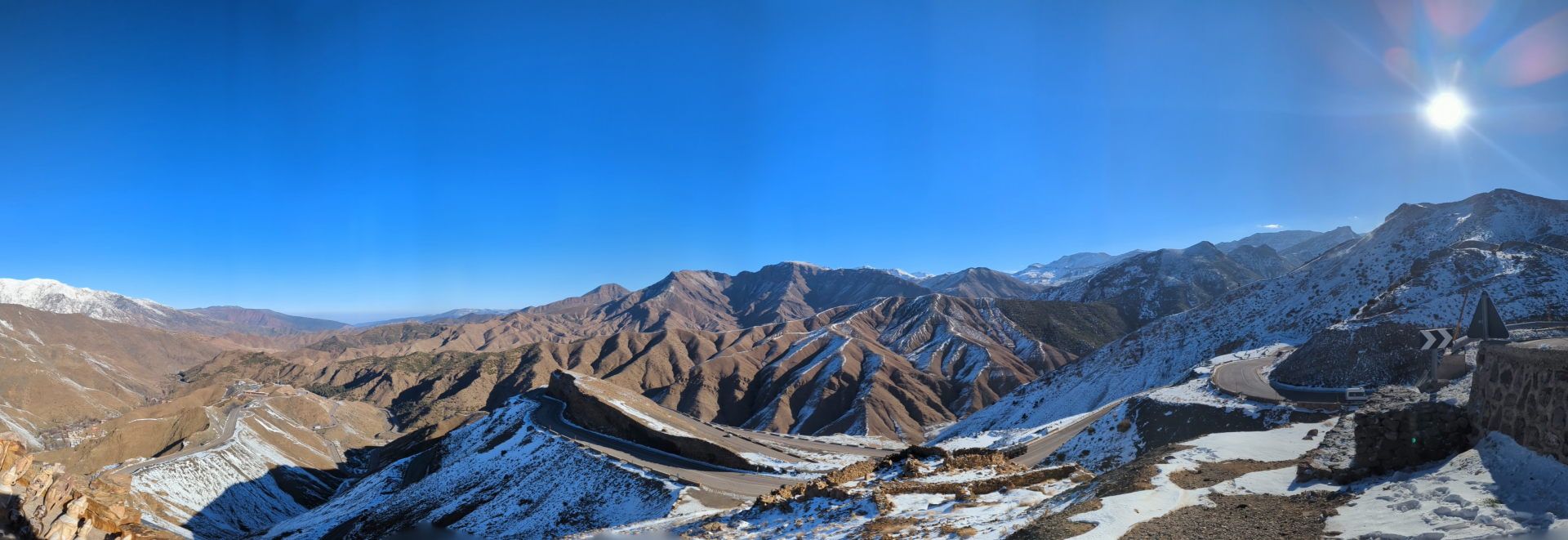
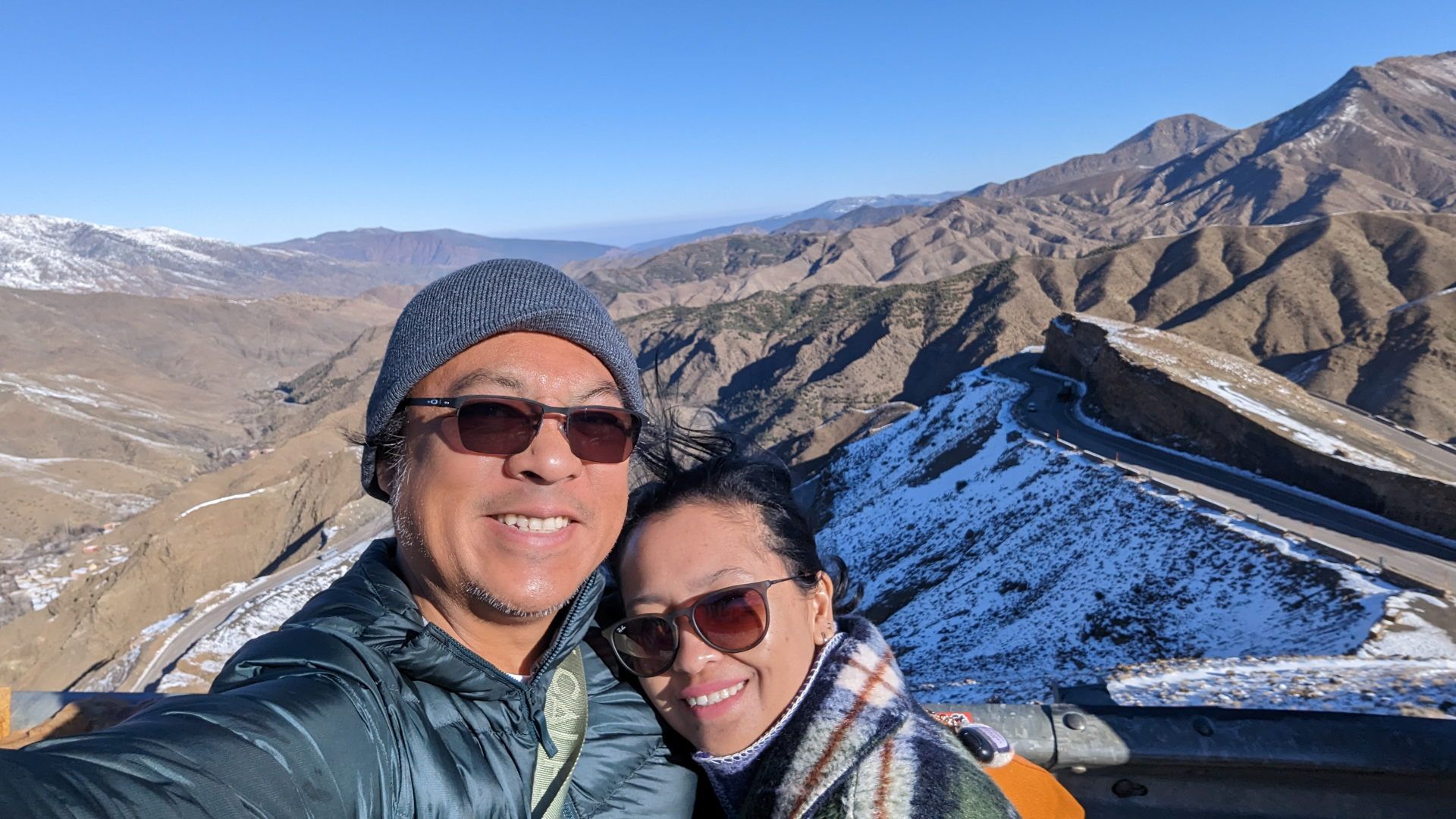

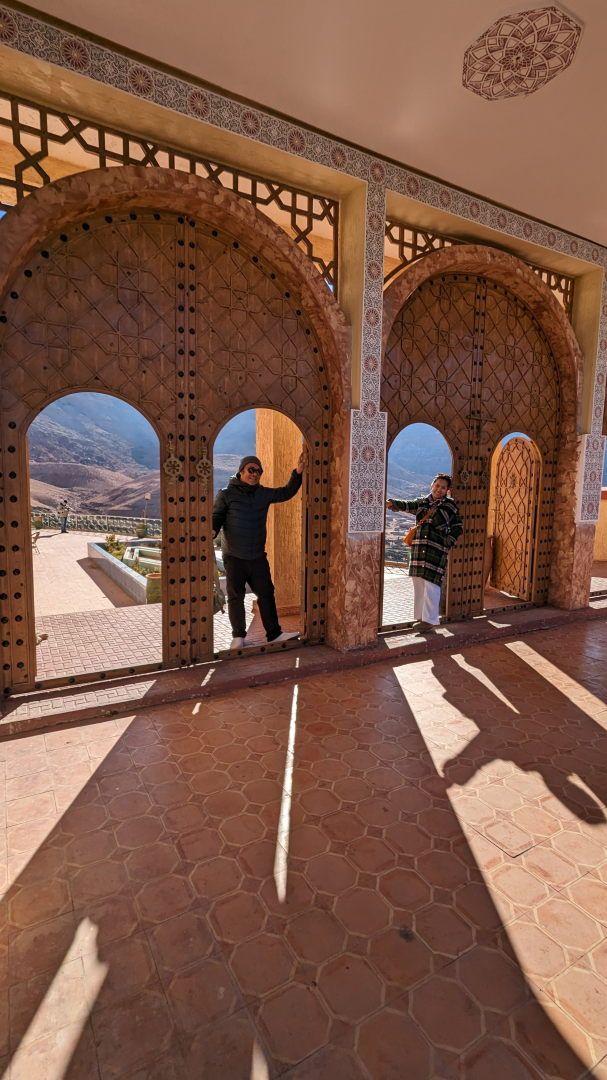

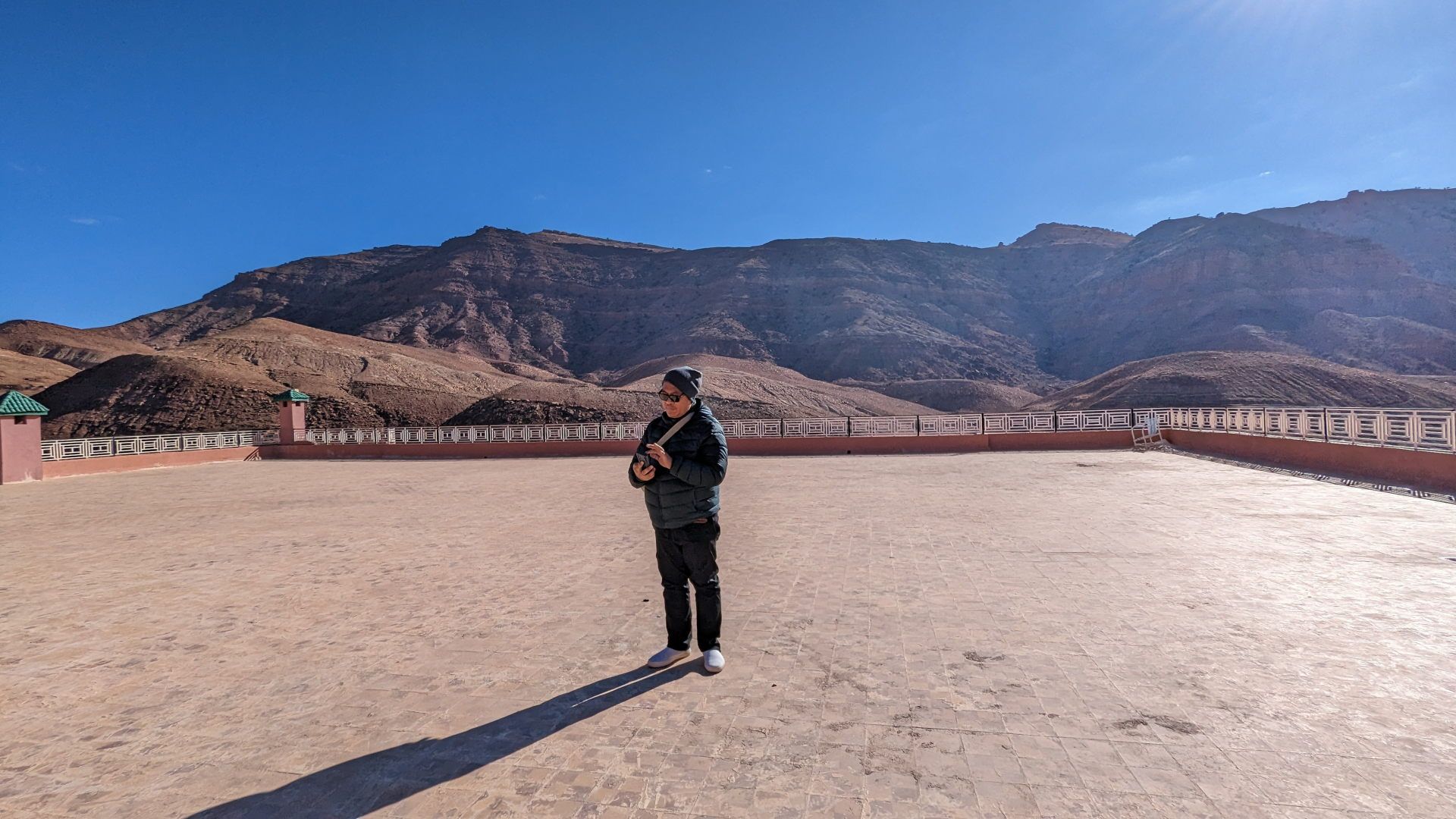
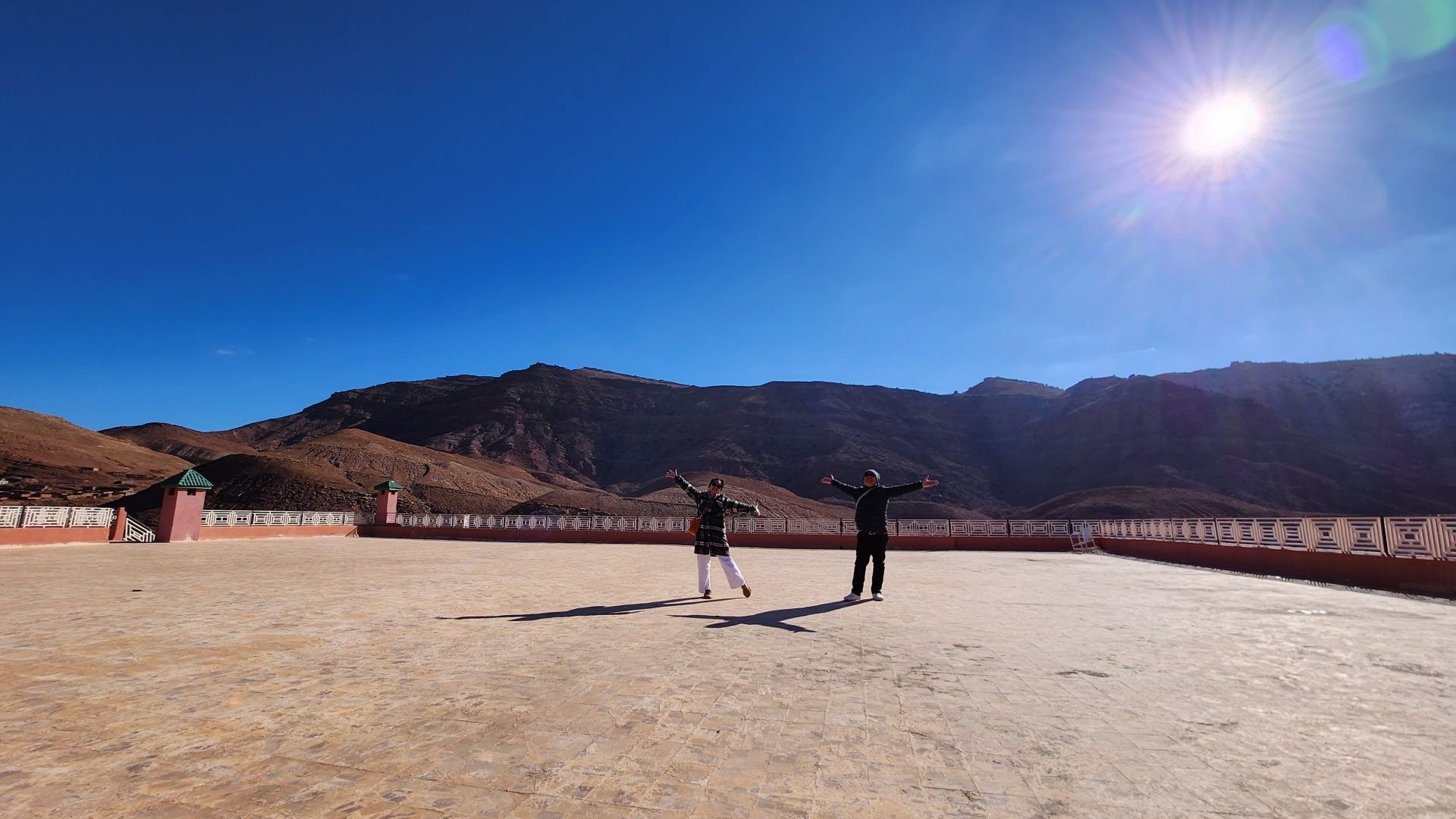
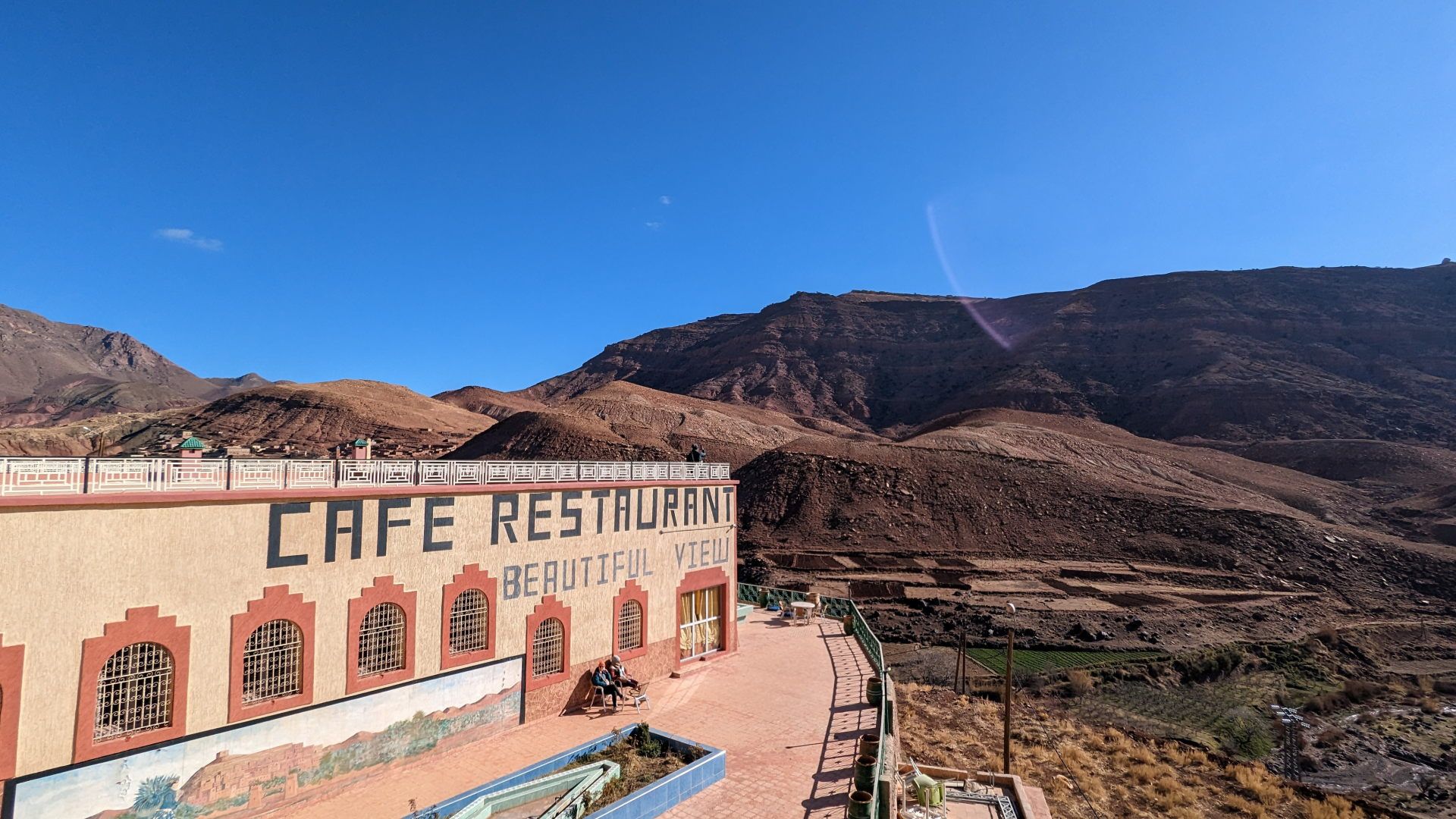
Ksar of Ait-Ben-Haddou is, also, a UNESCO World Heritage site. This fortified group of dwellings overlooks the Asif Ounila river and the Kasbah Tebi hotel which, accordingly, is built differently using the Jewish outward looking design. The structures up on the hills are said to be prepping for a Transformers movie shot.
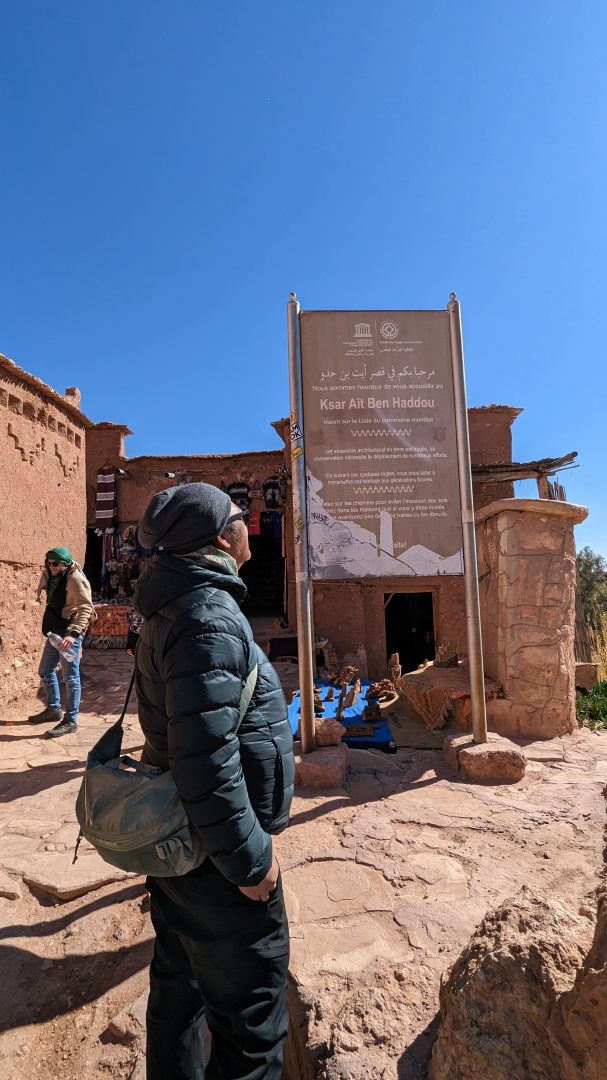


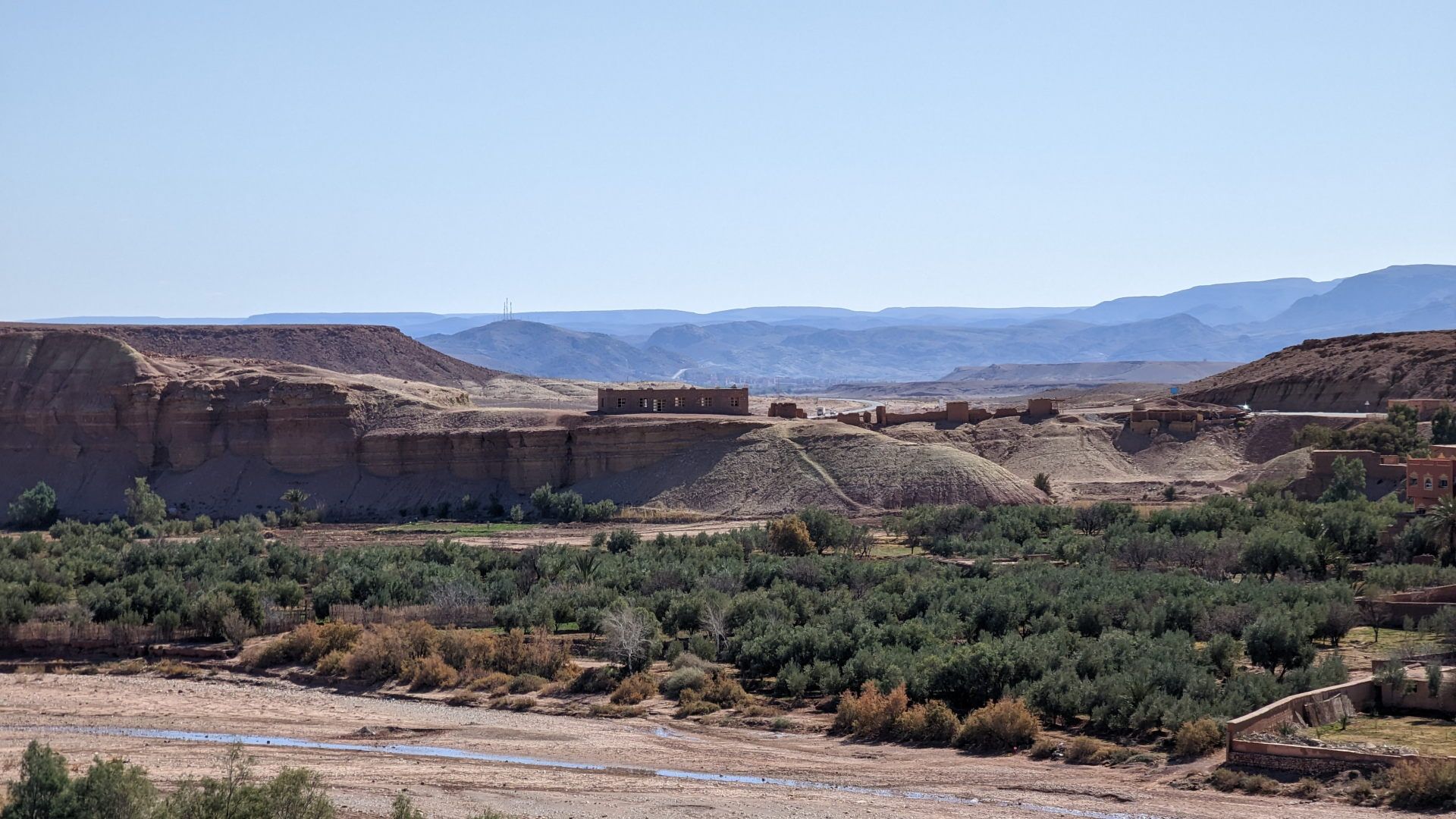


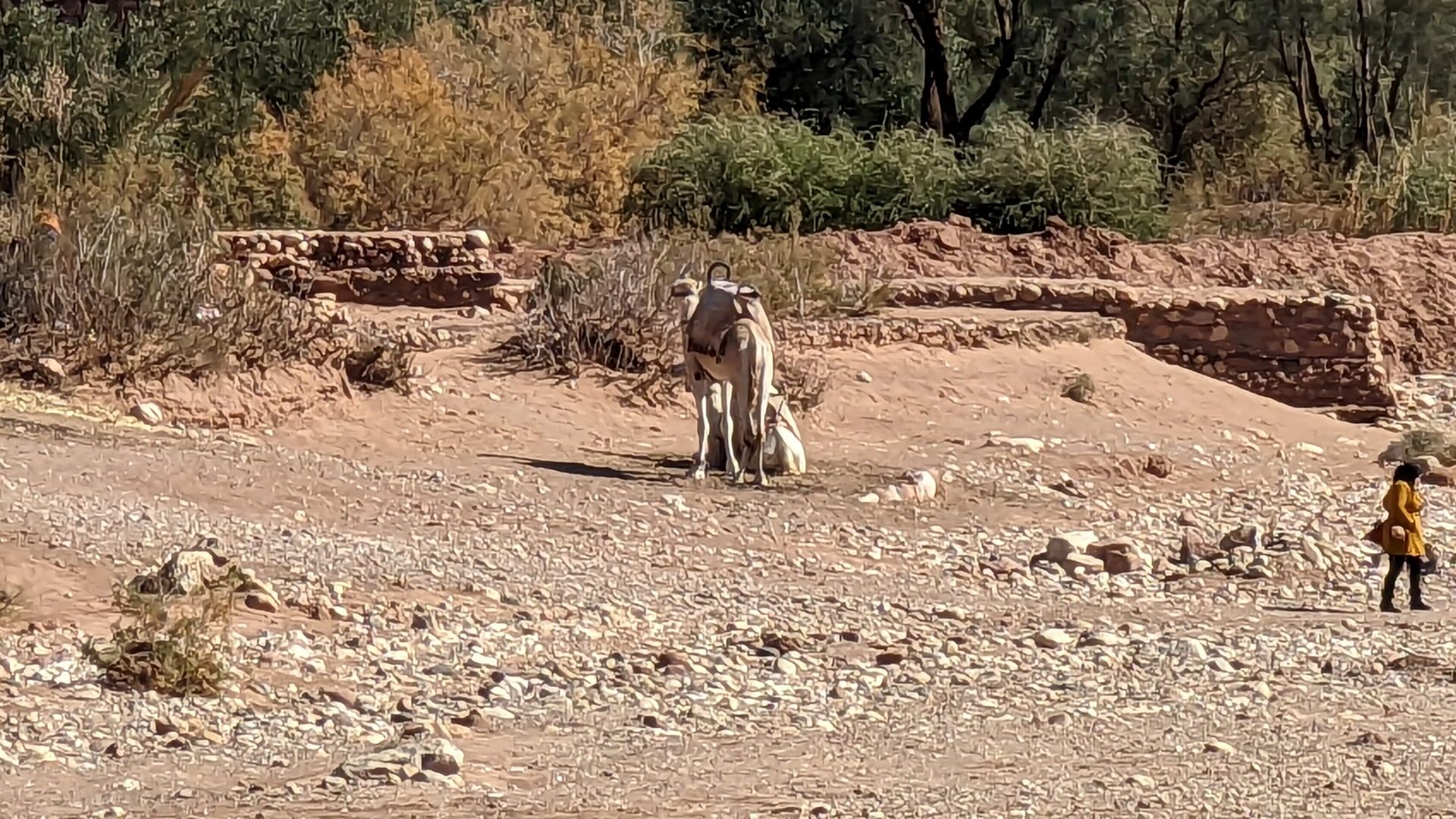
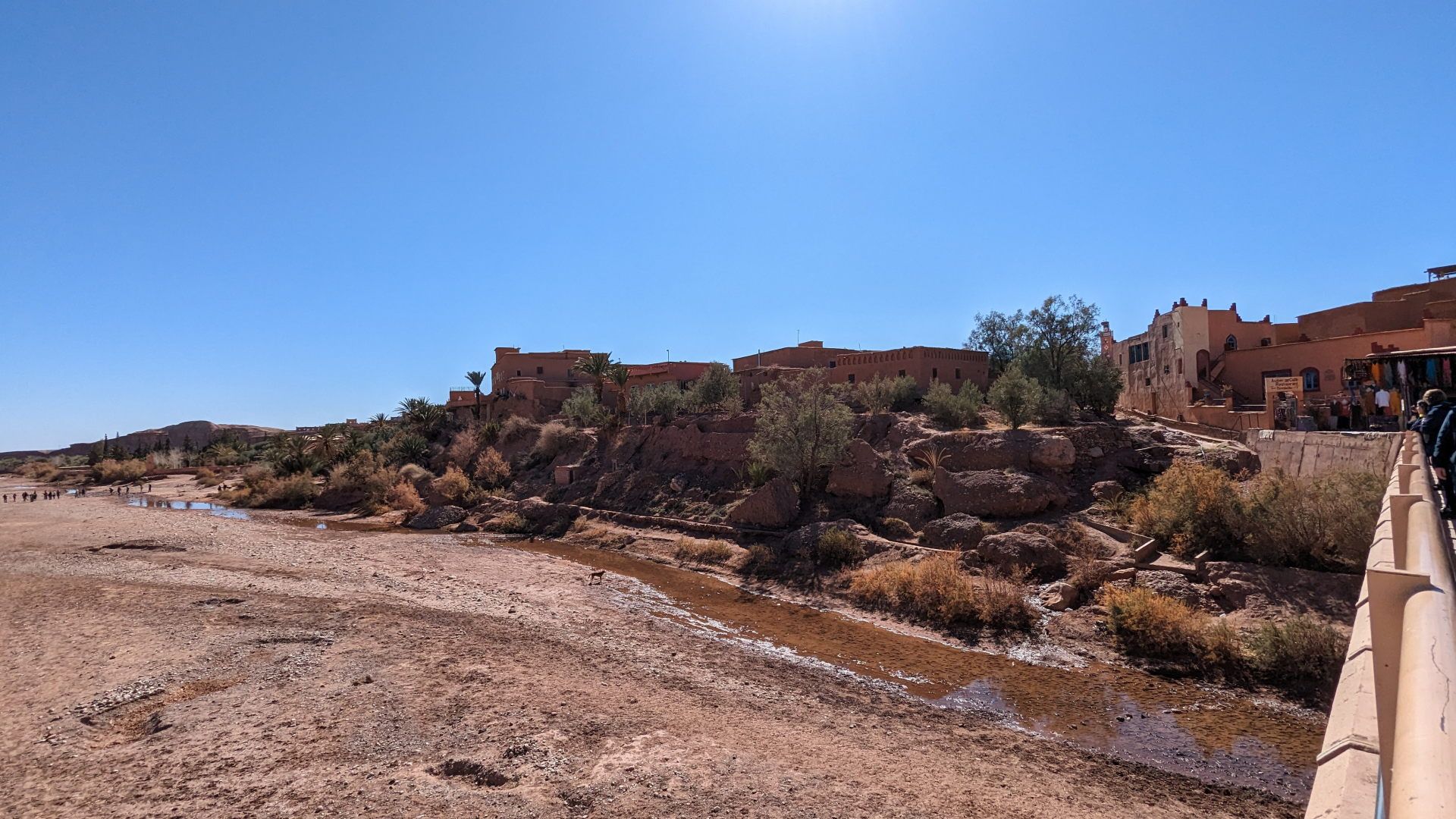
Where the streets have no names. Though, there seem to be numbers if you're expecting snail mail or a package.
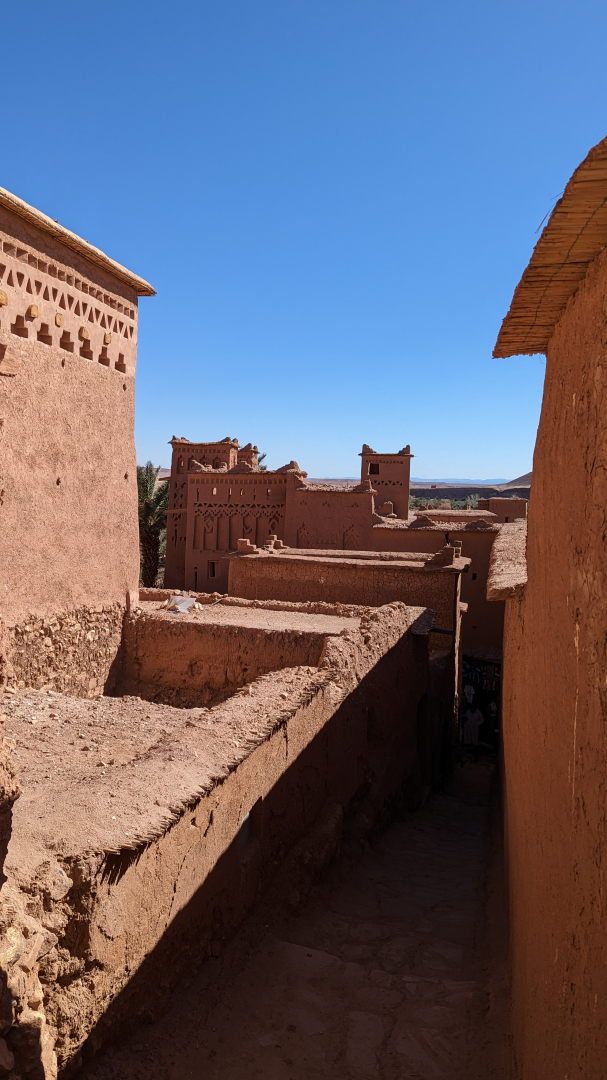
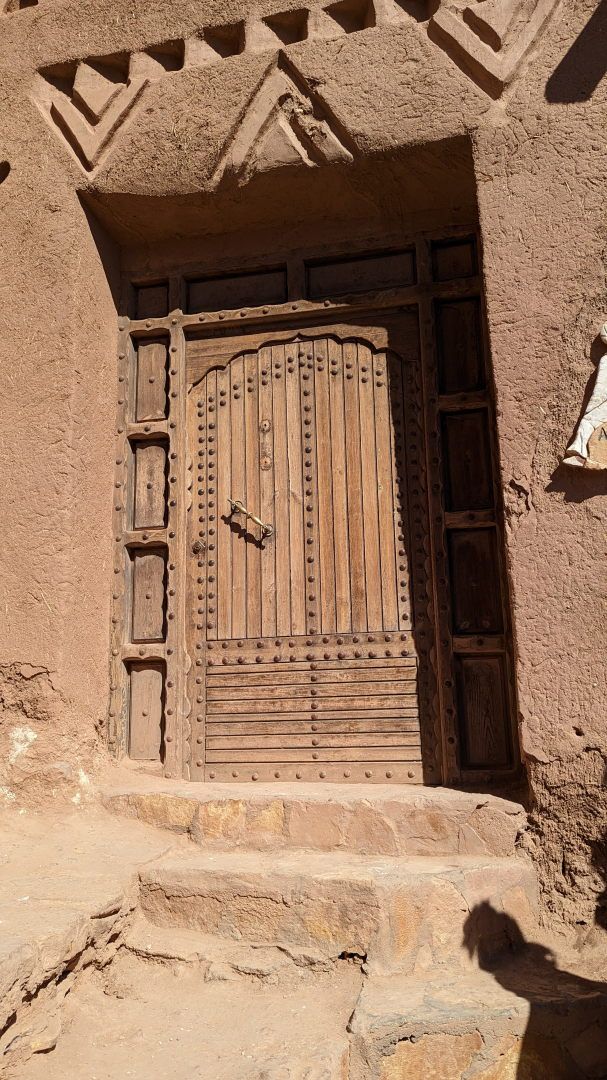
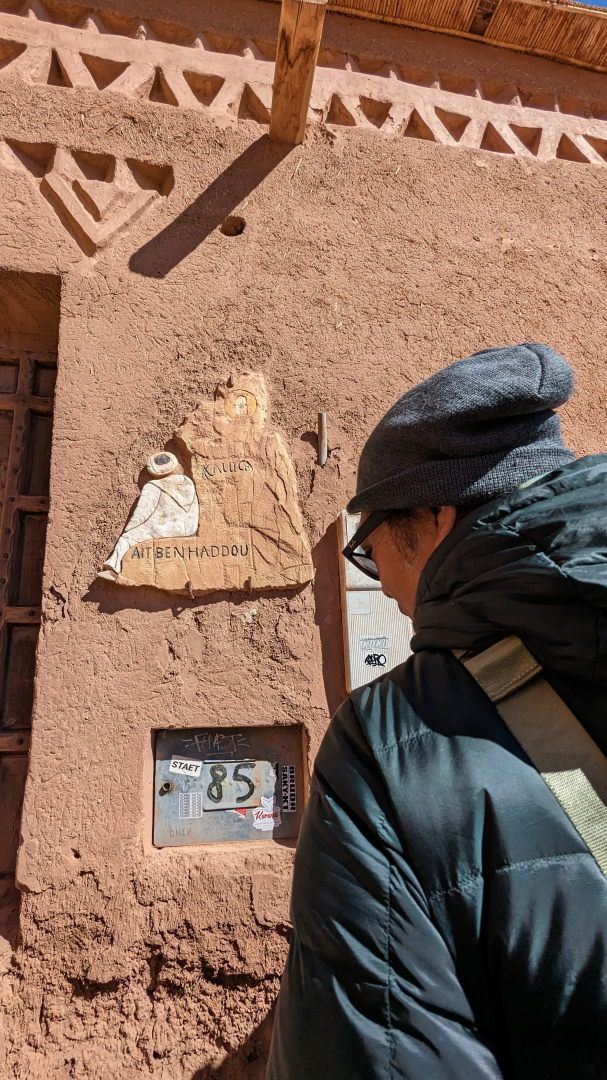
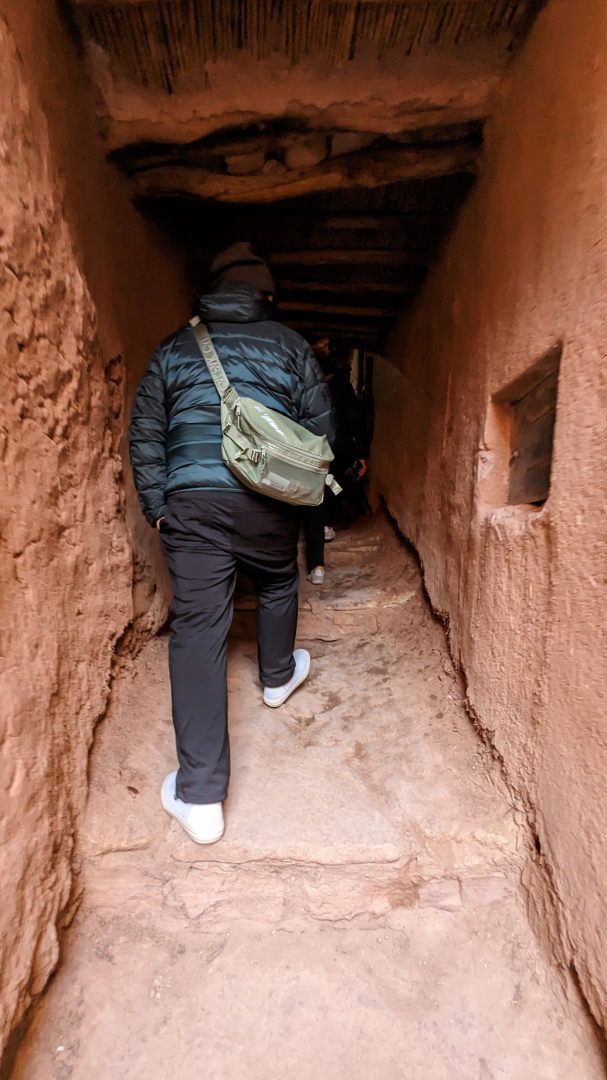
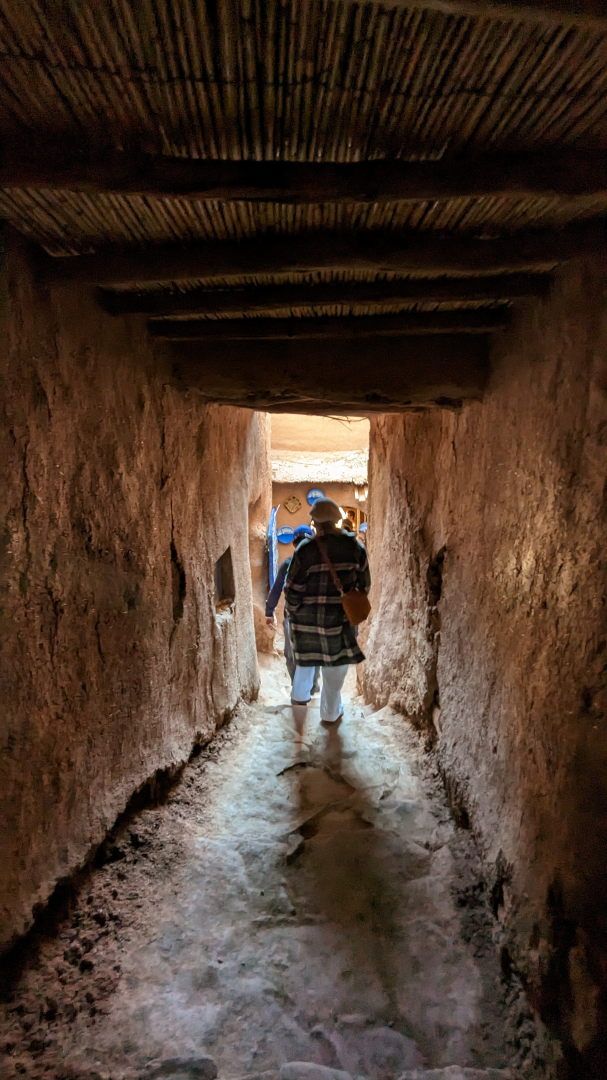
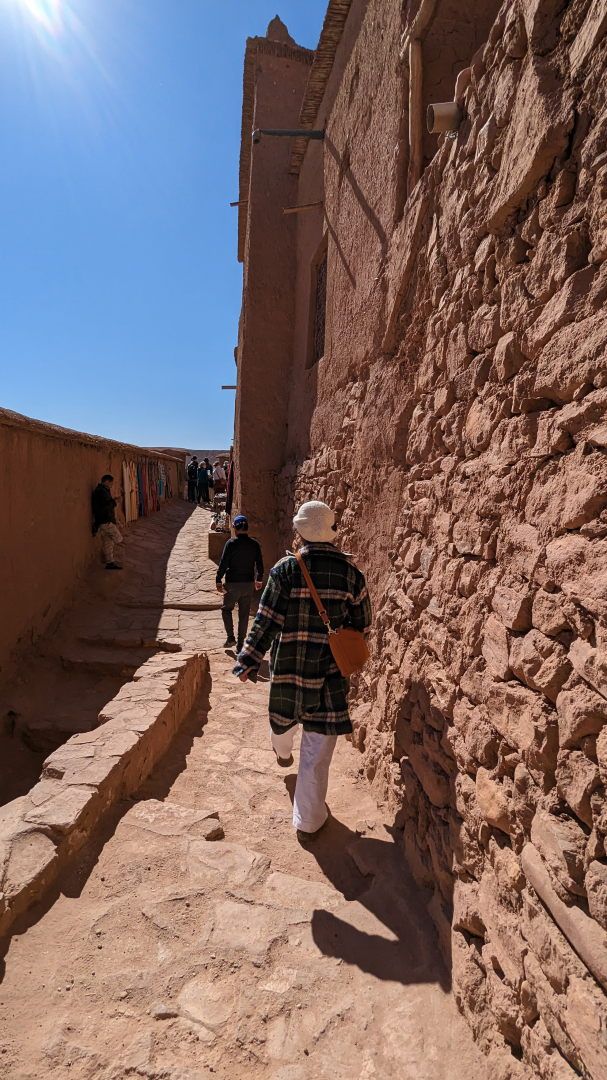
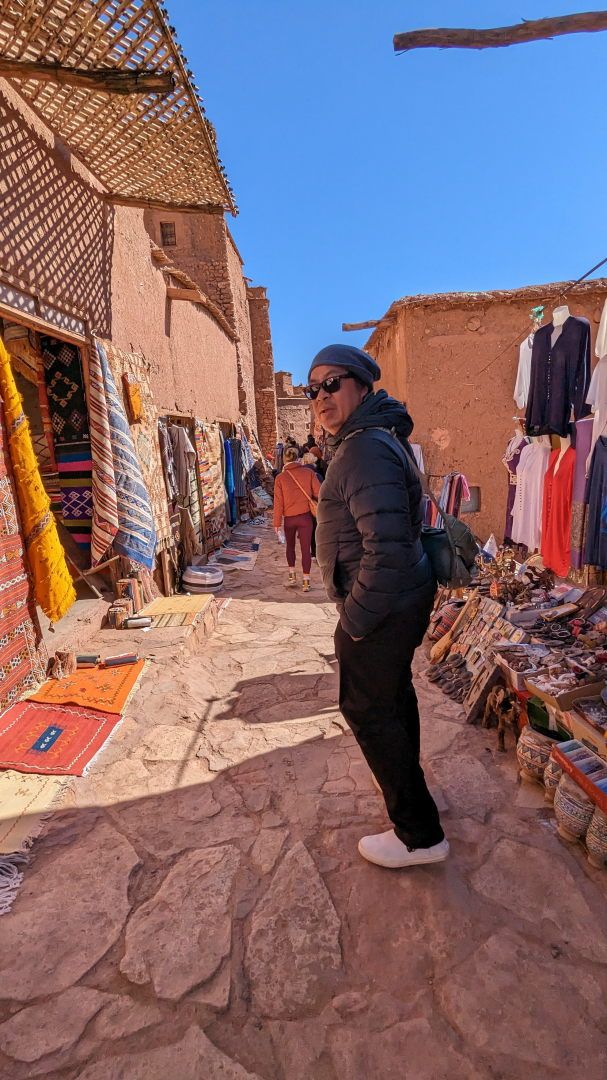
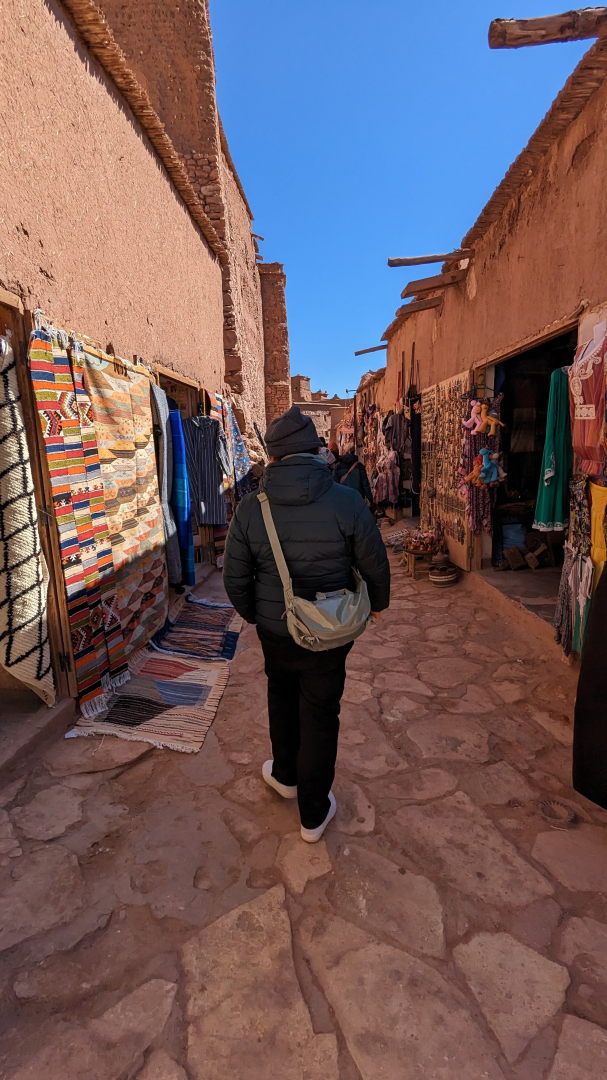

Local art gallery and shops with a list of movies that have been filmed in the immediate vicinity. Do you recognize some of them?

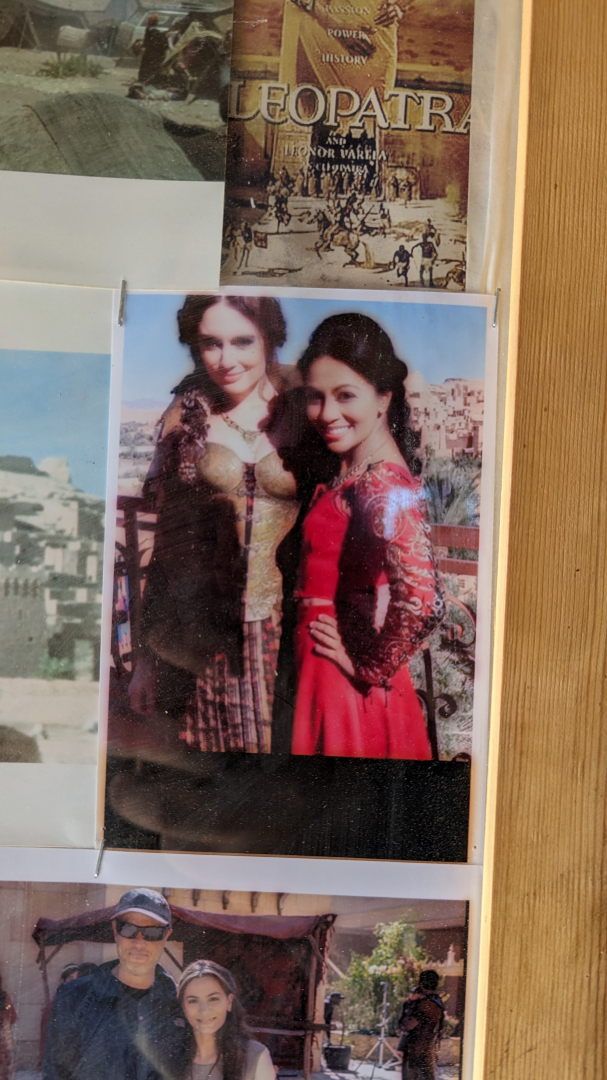
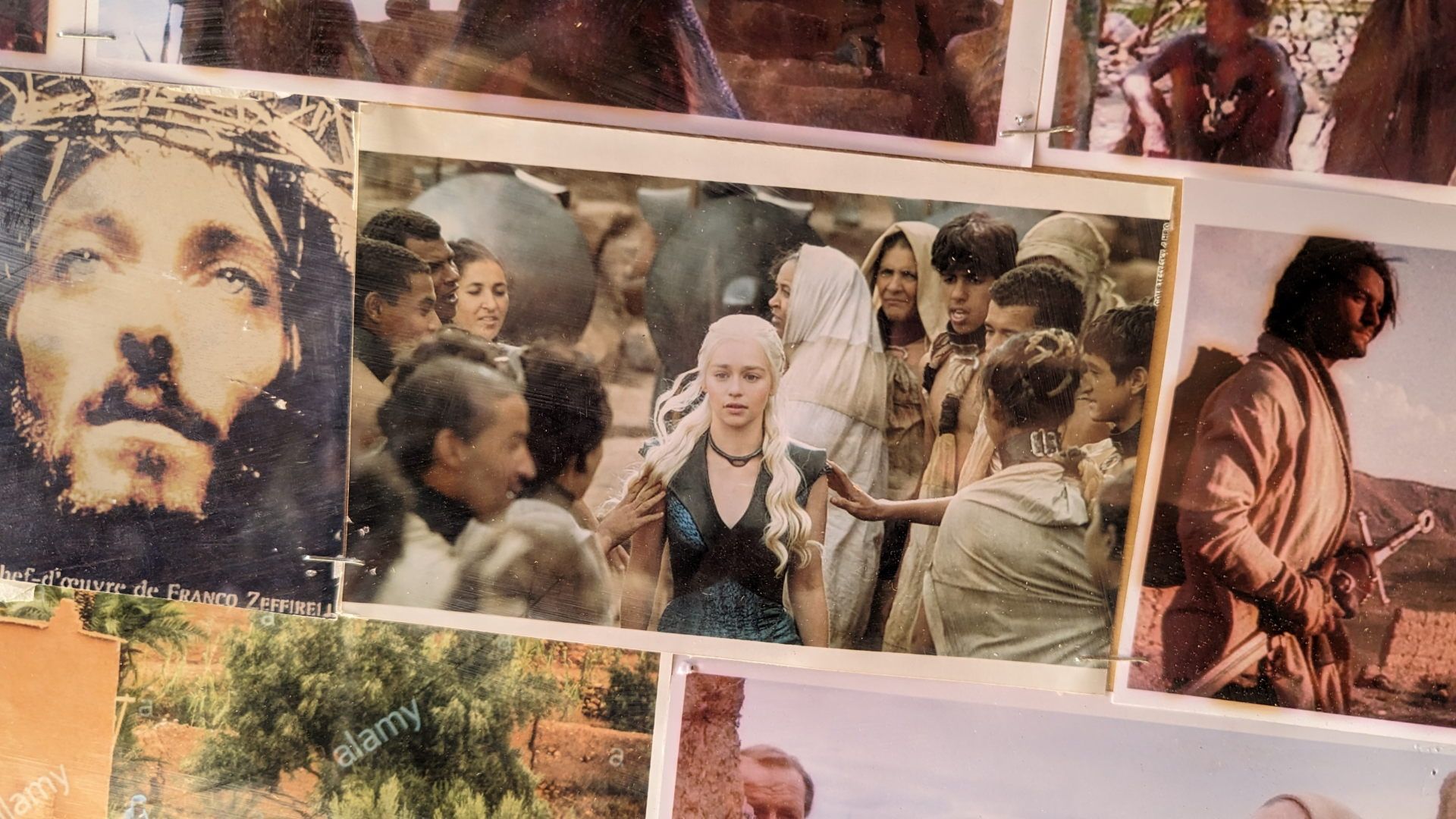
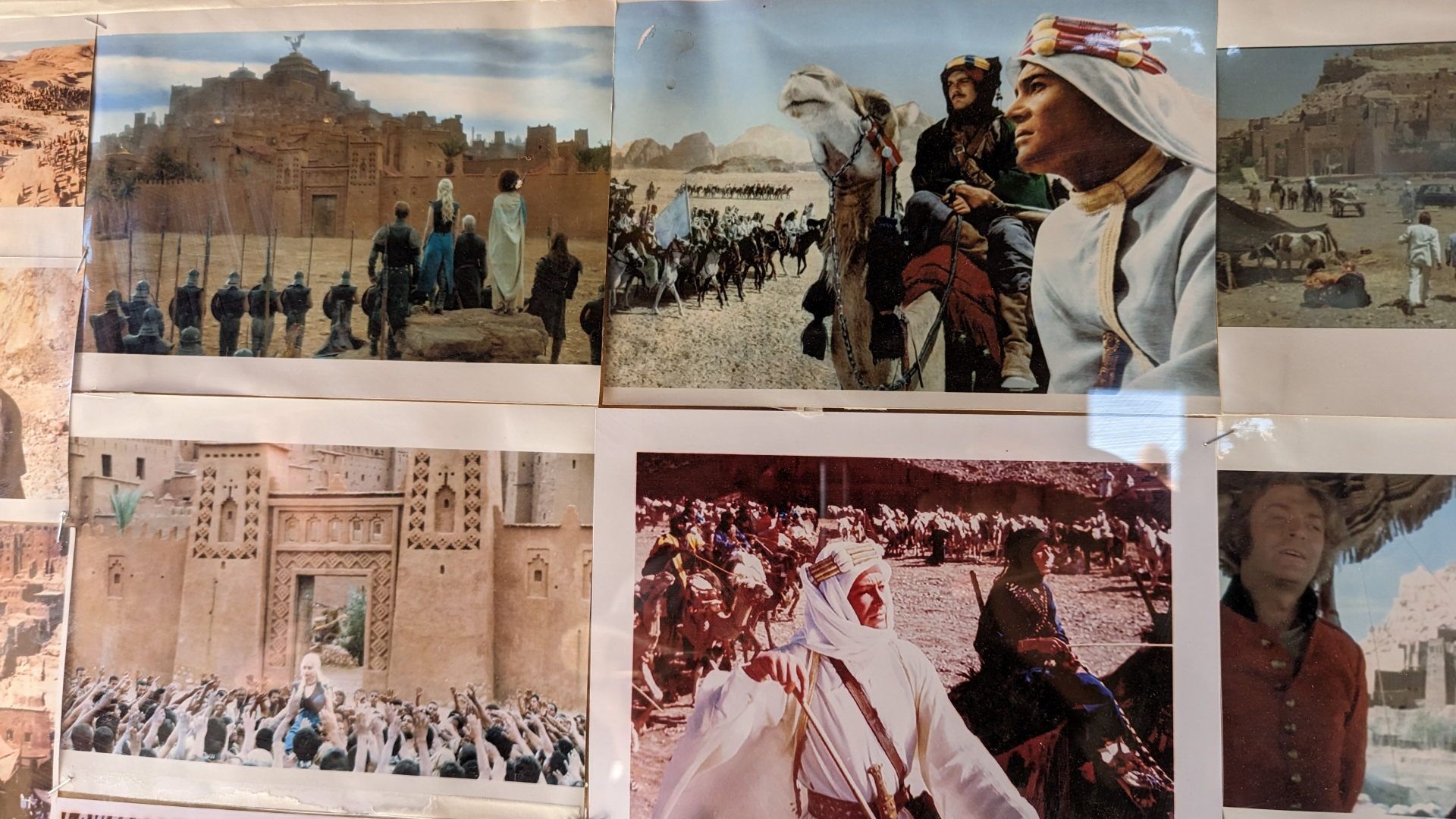

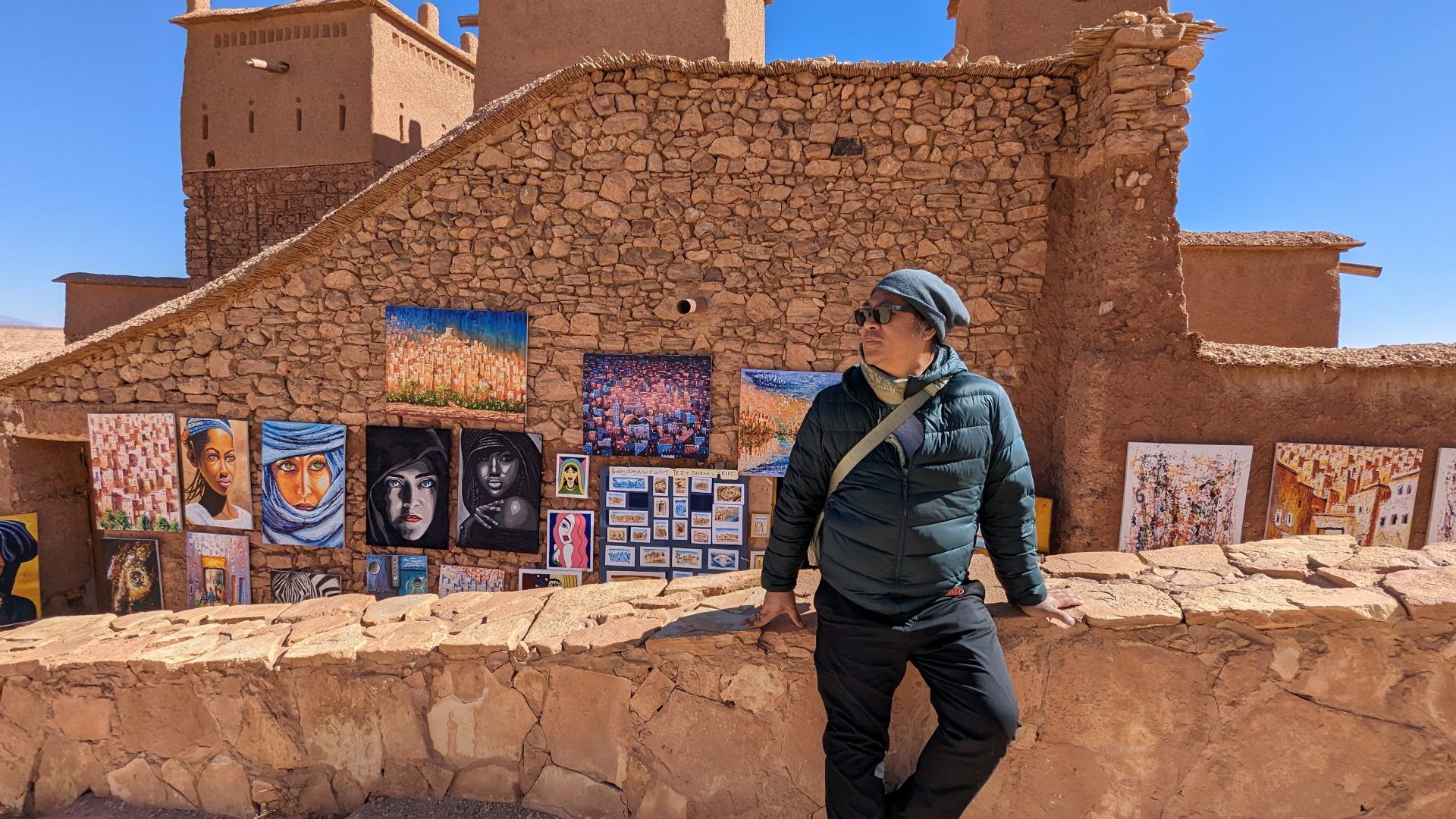

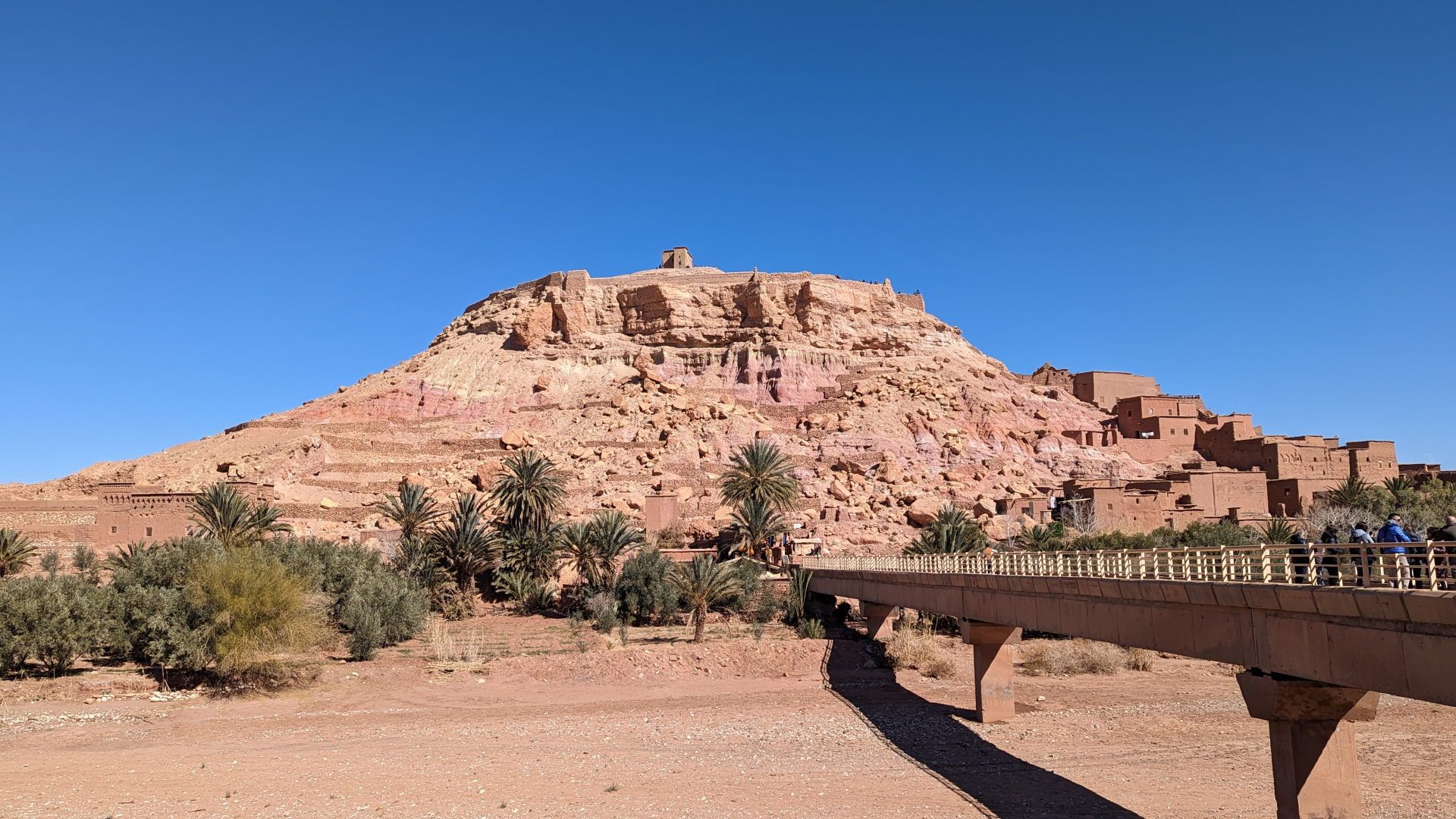
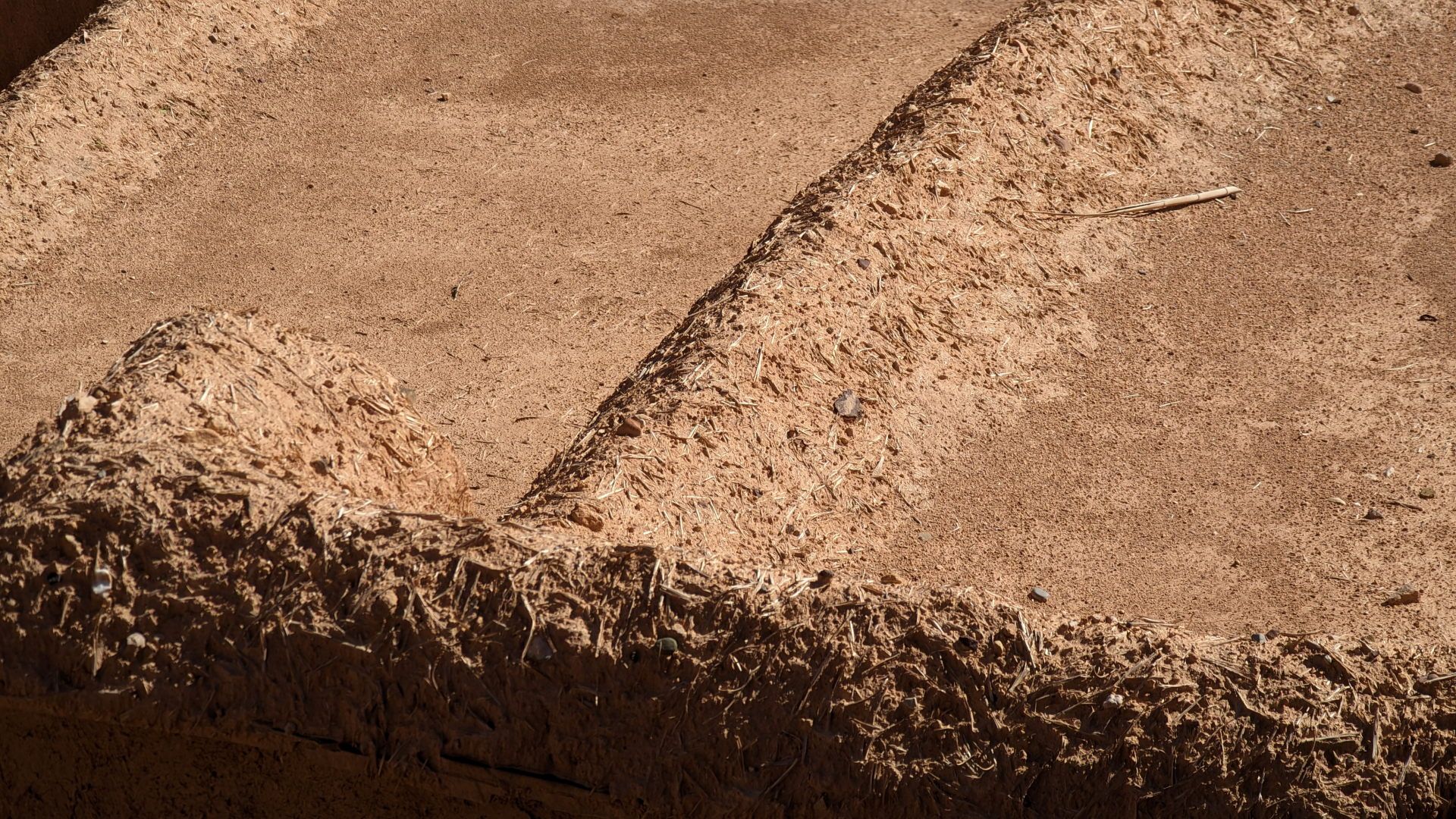
View from the top. This place used to be the main caravan stopping point before crossing the Atlas Mountains. Most inhabitants of the area live across the river on more modern housing. As a UNESCO site there isn't any electricity allowed to be installed.
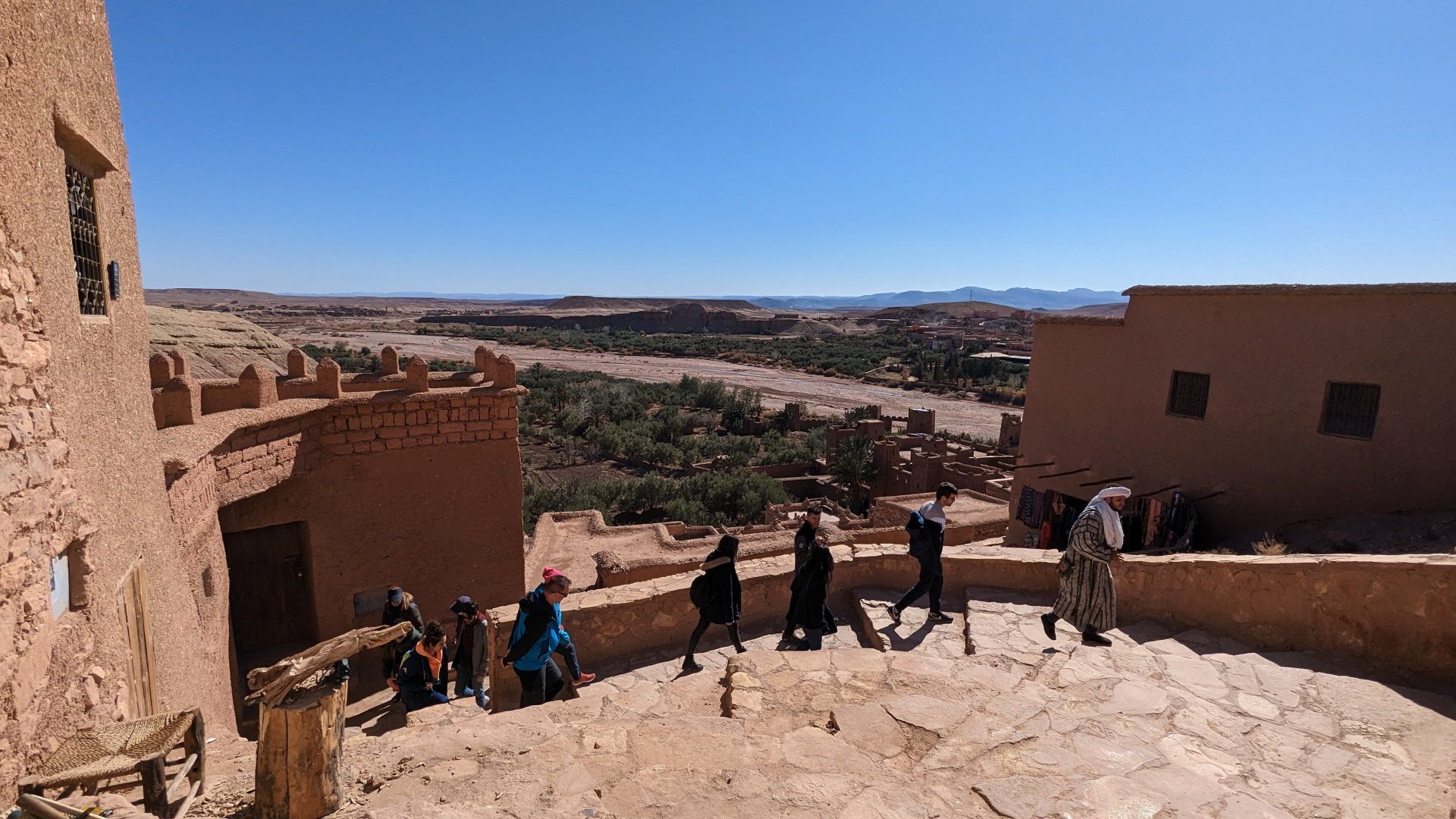
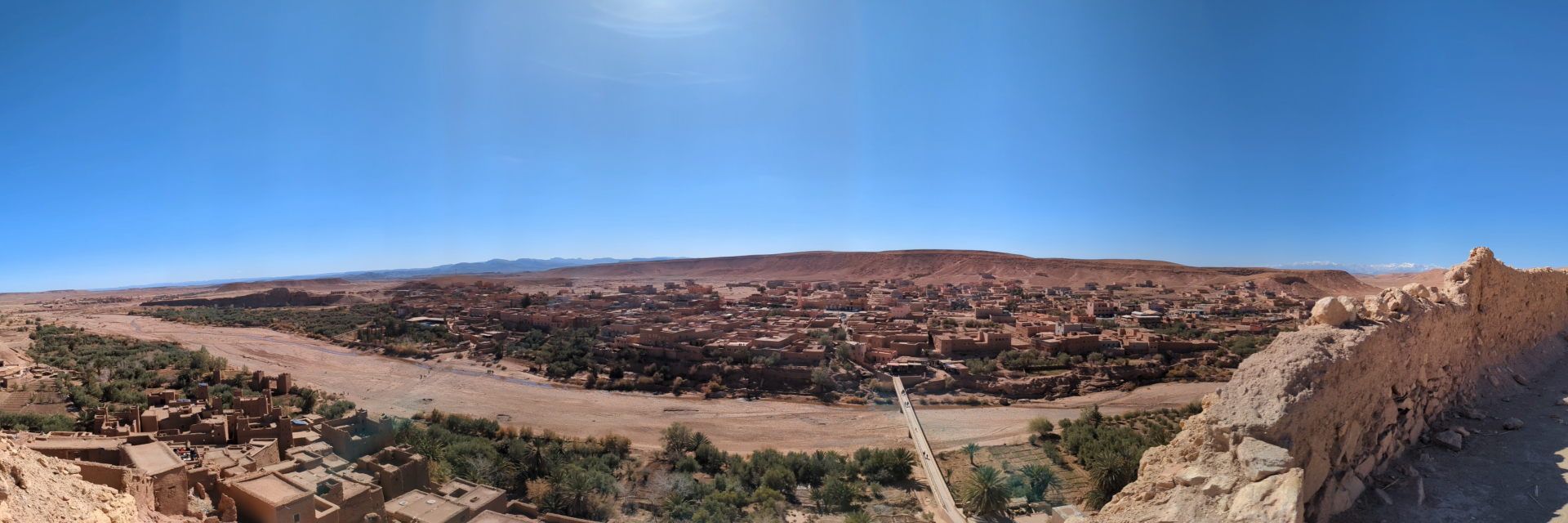


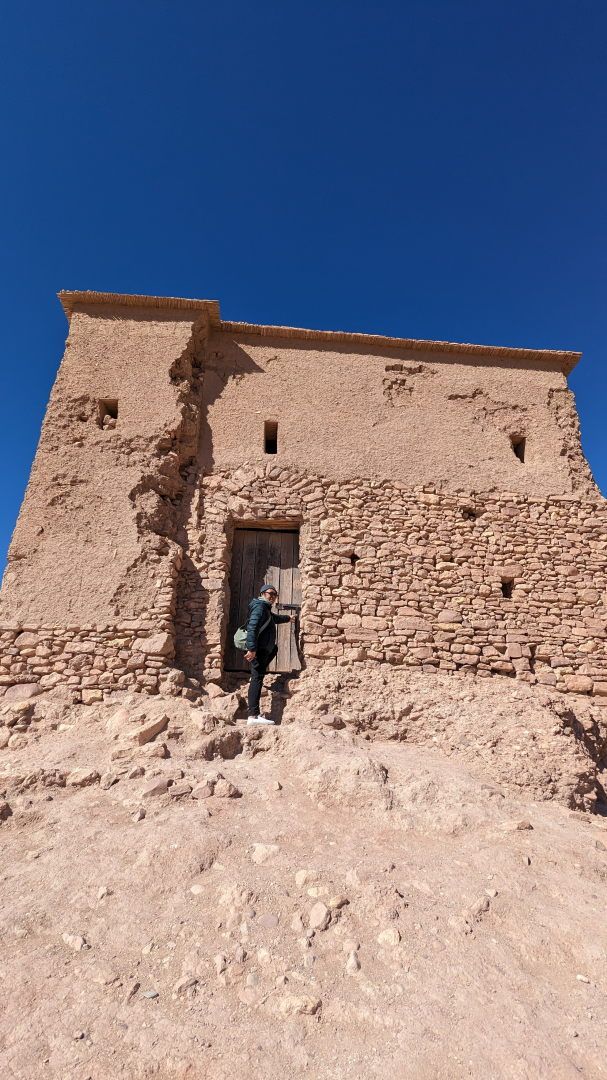
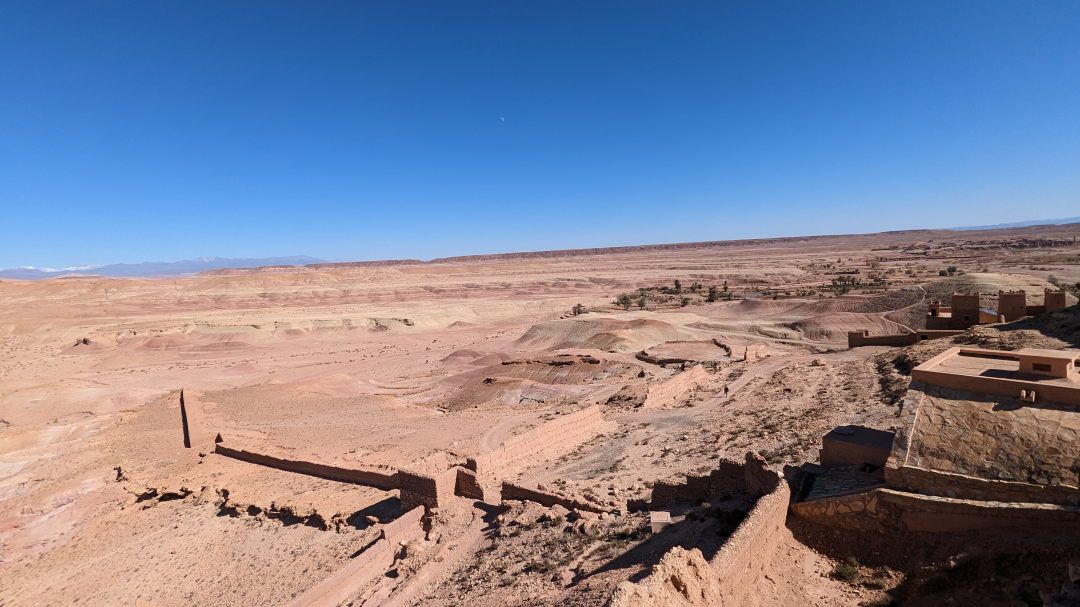

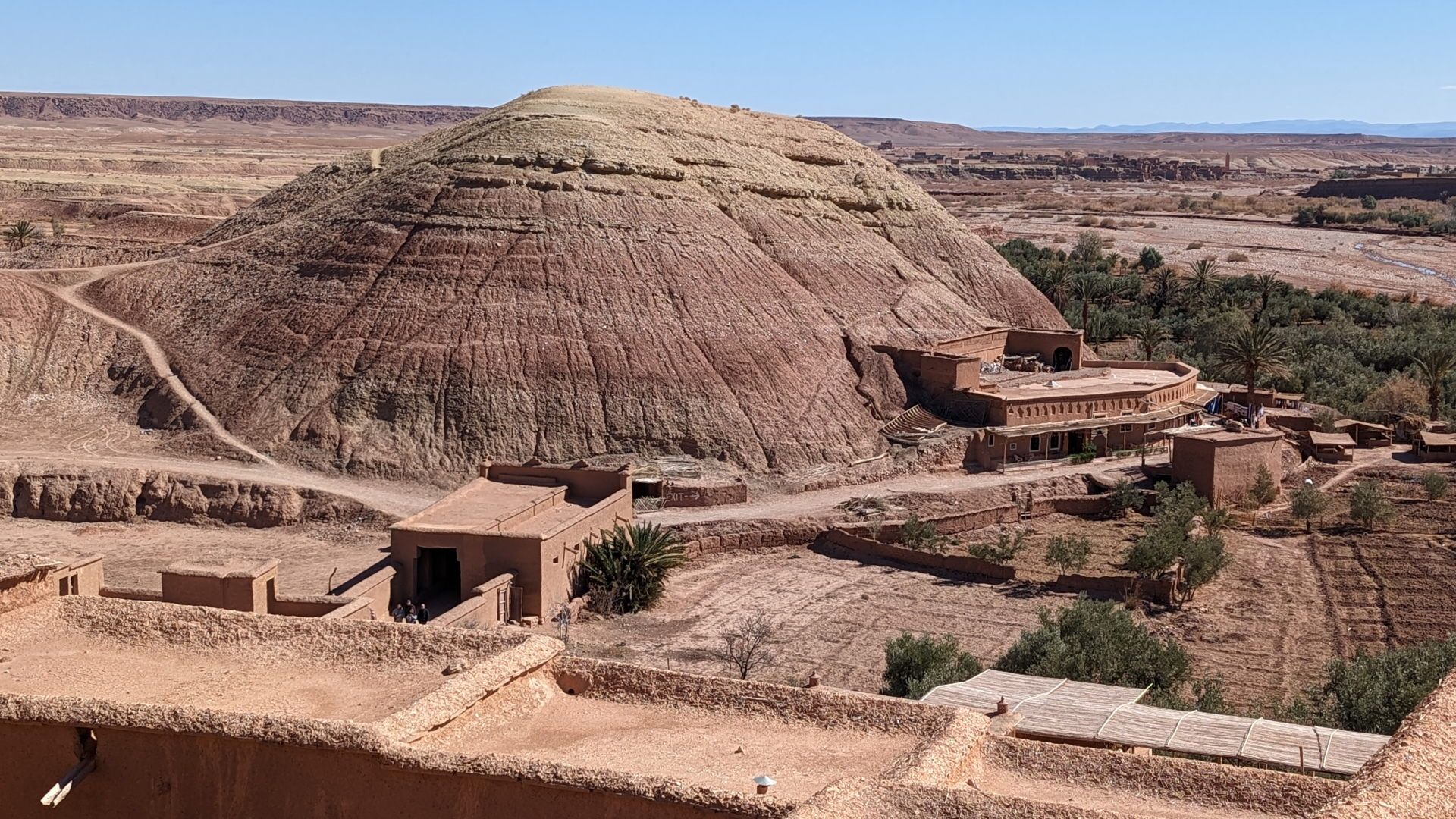
Atlas Studios. If you guessed some of the movies in the previous galleries you'll note that Game of Thrones and Vikings were some of the scenes filmed nearby.
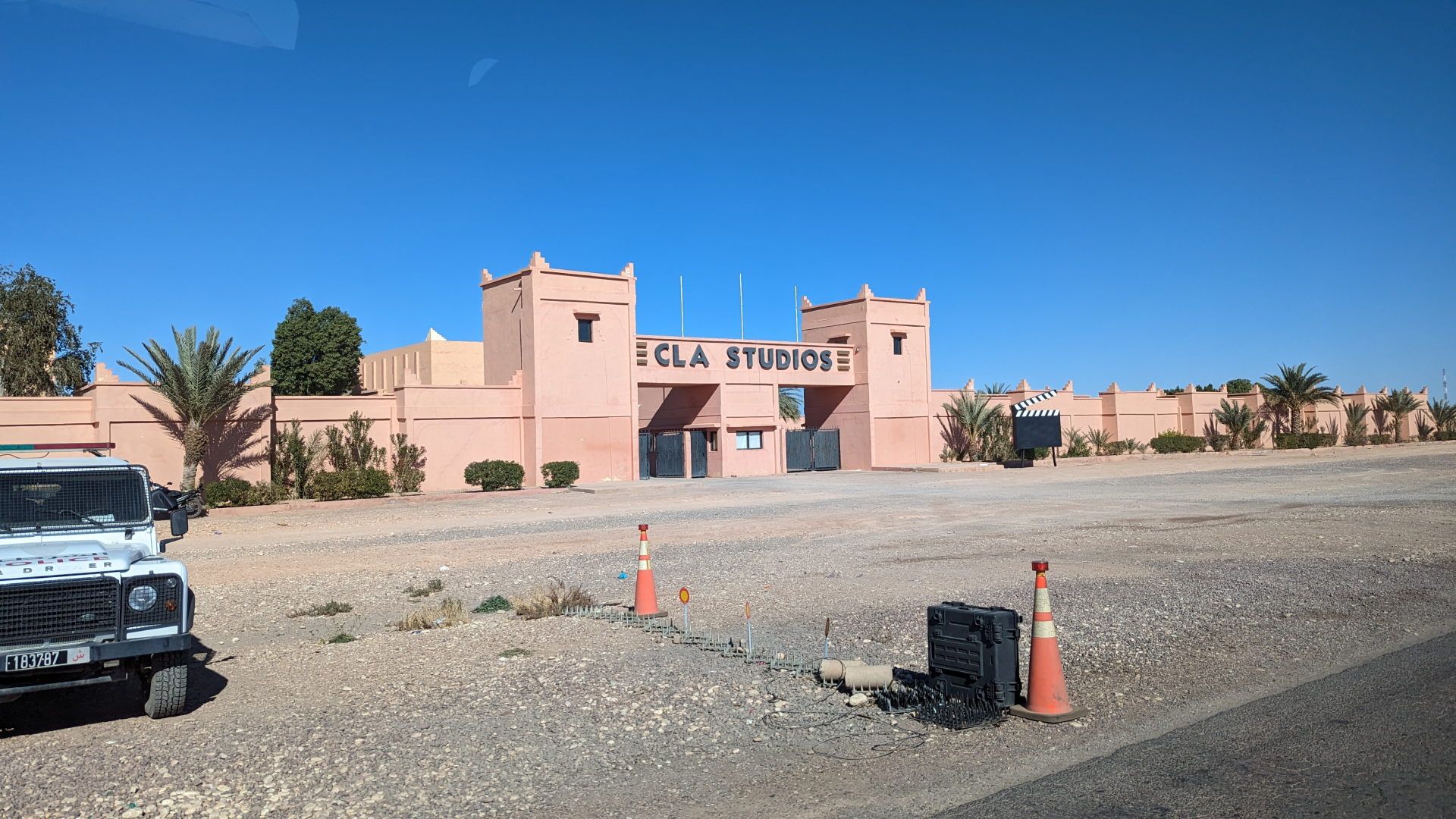
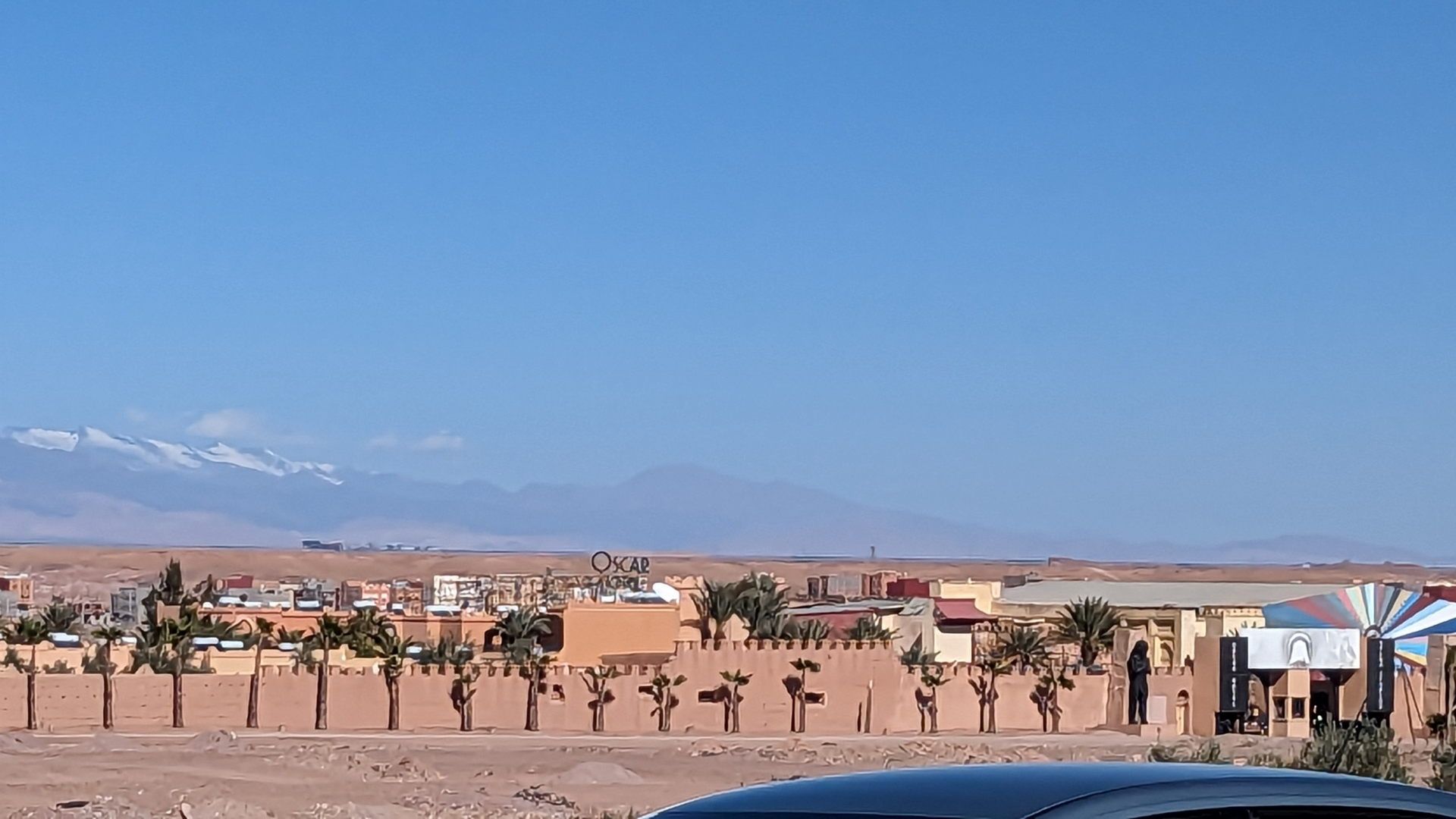
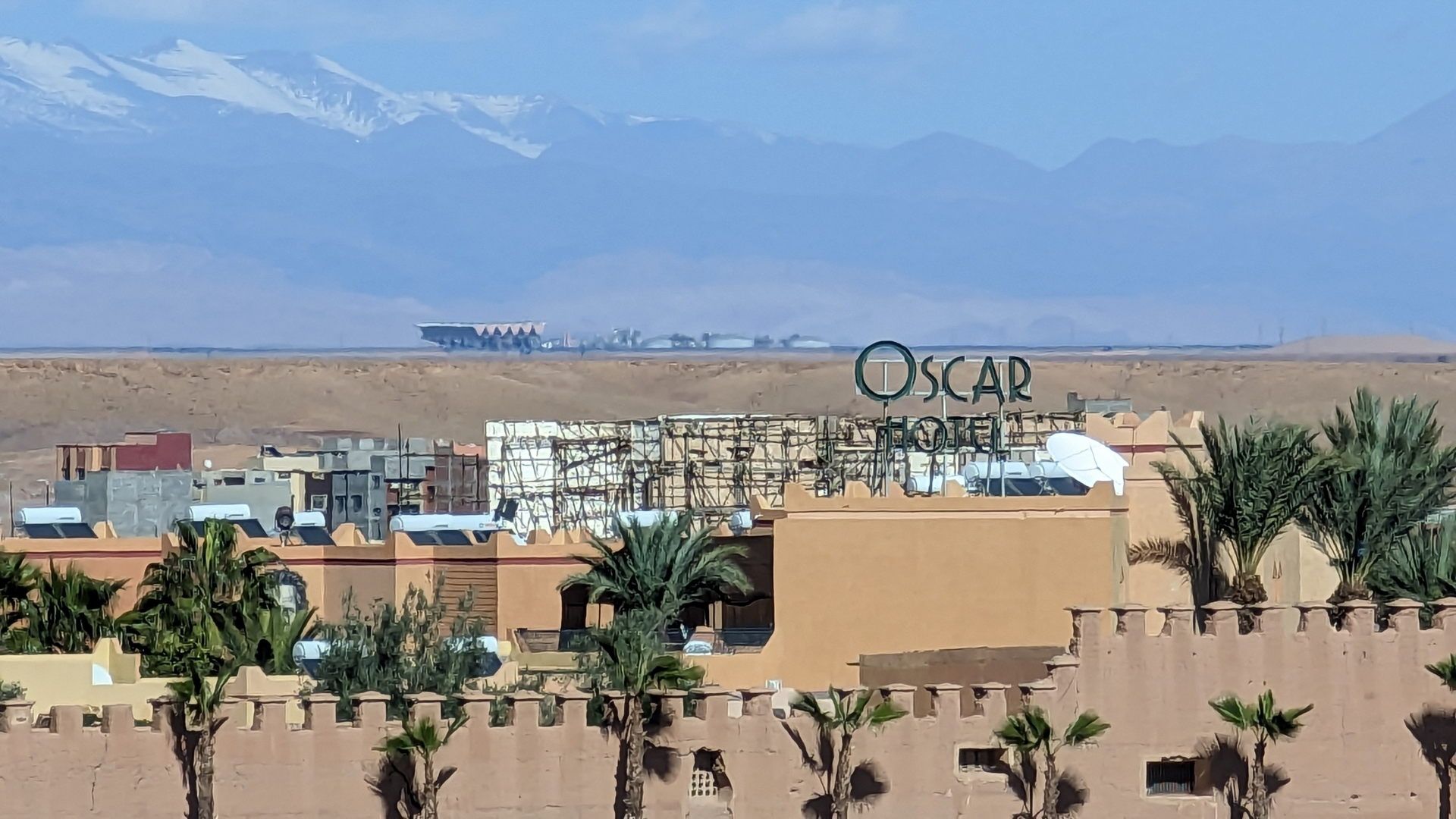
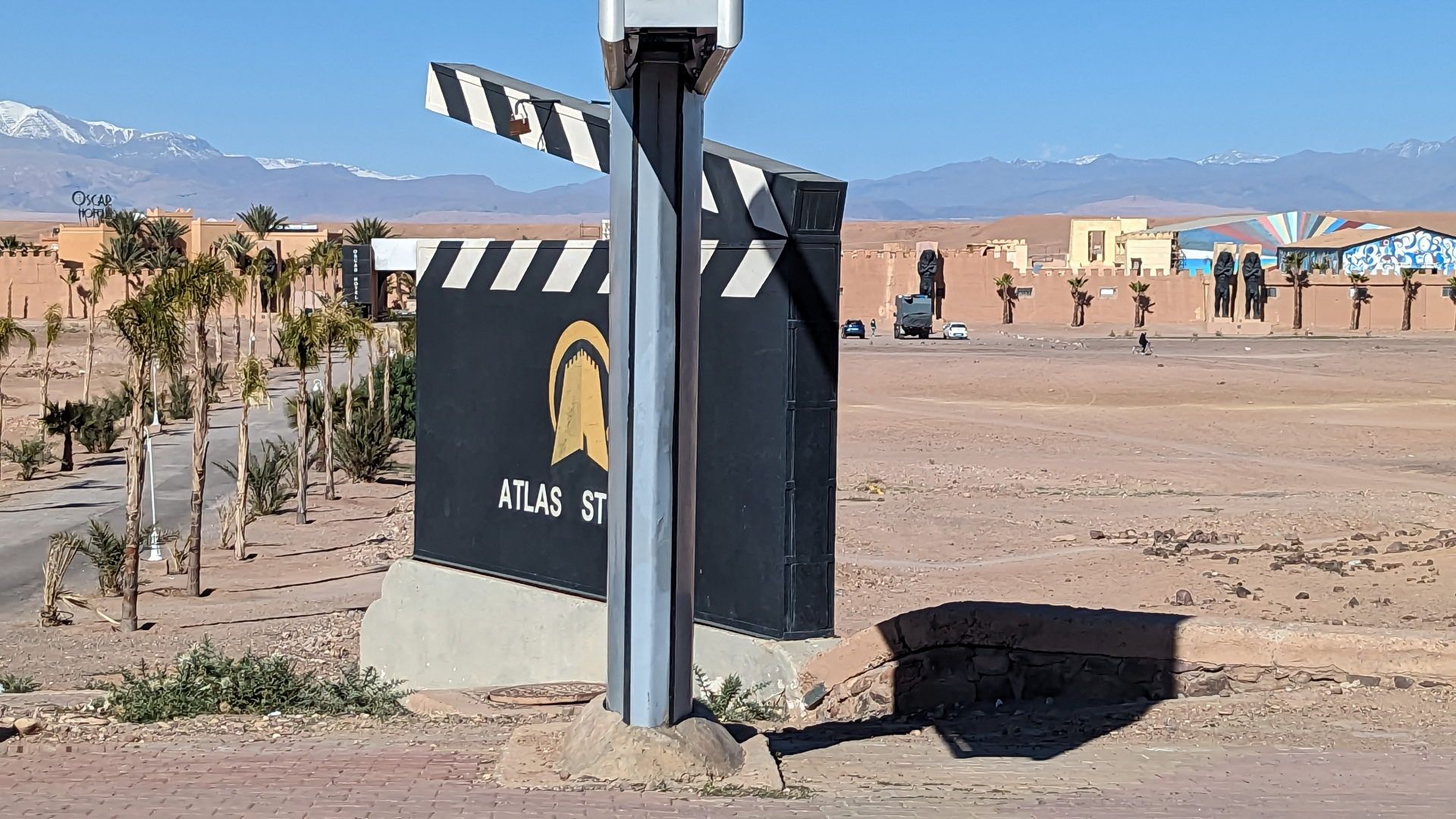
Kalaat M'Gouna (Valley of the Roses) is known for its festival during the month of May.
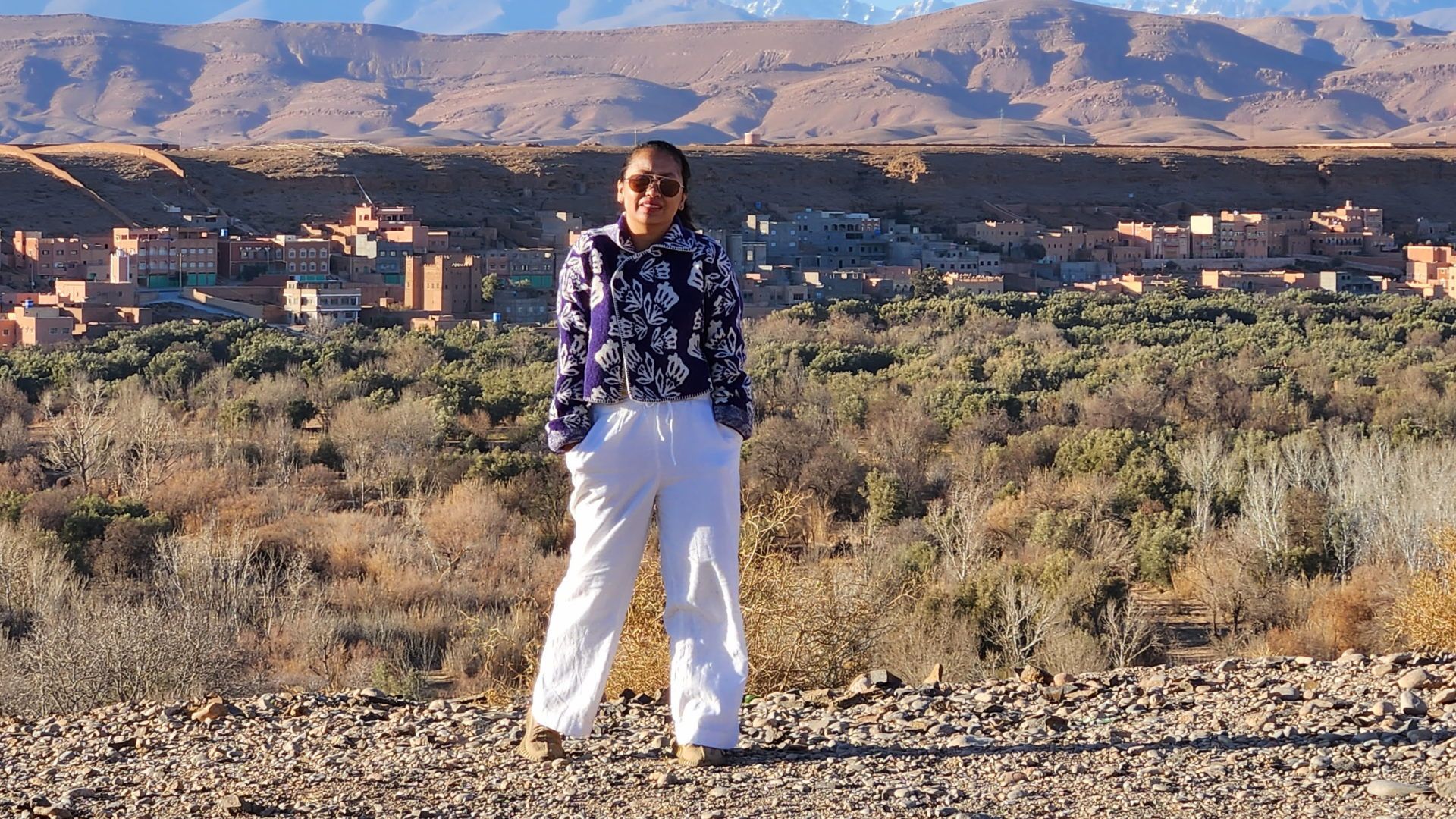
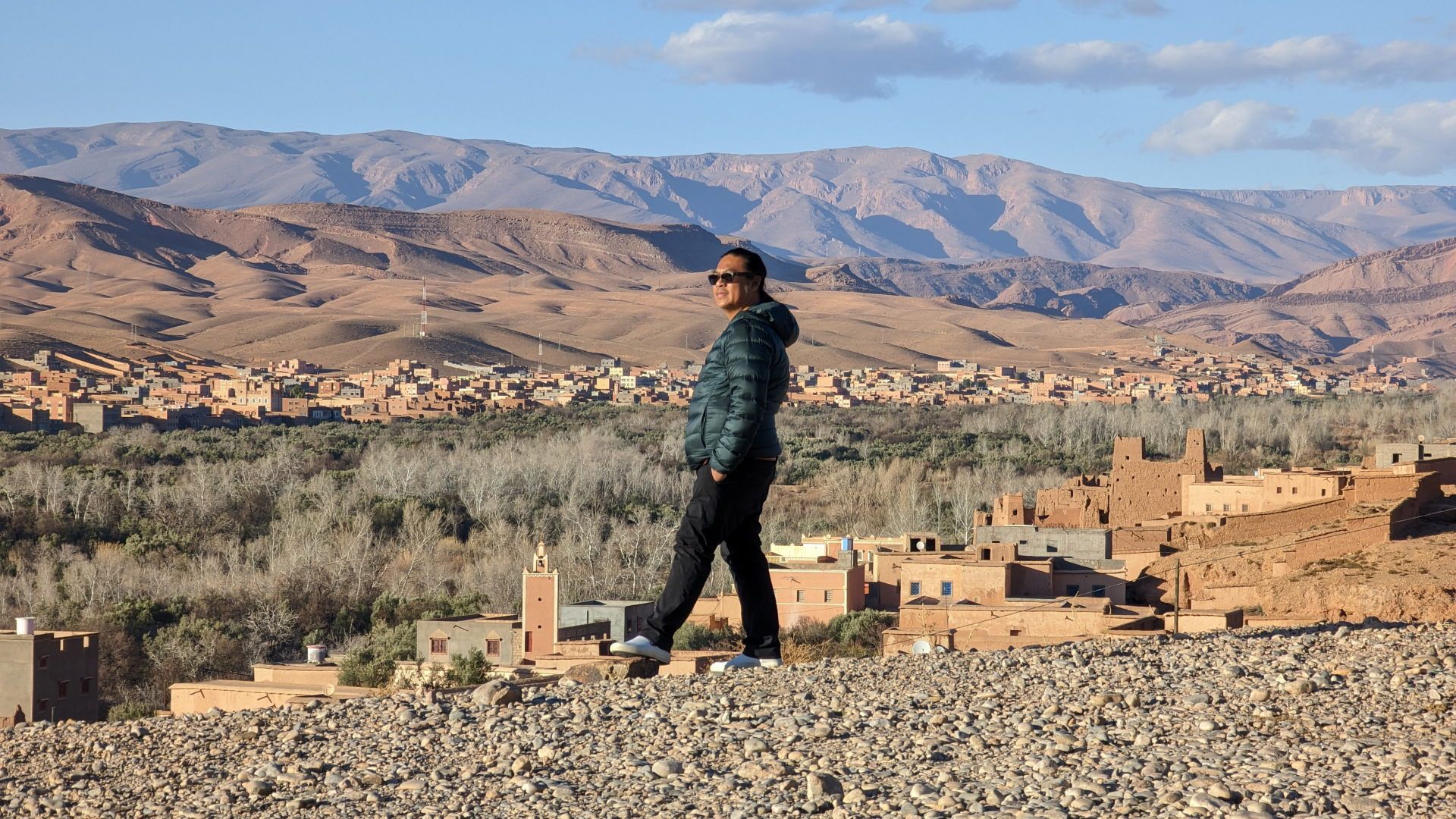
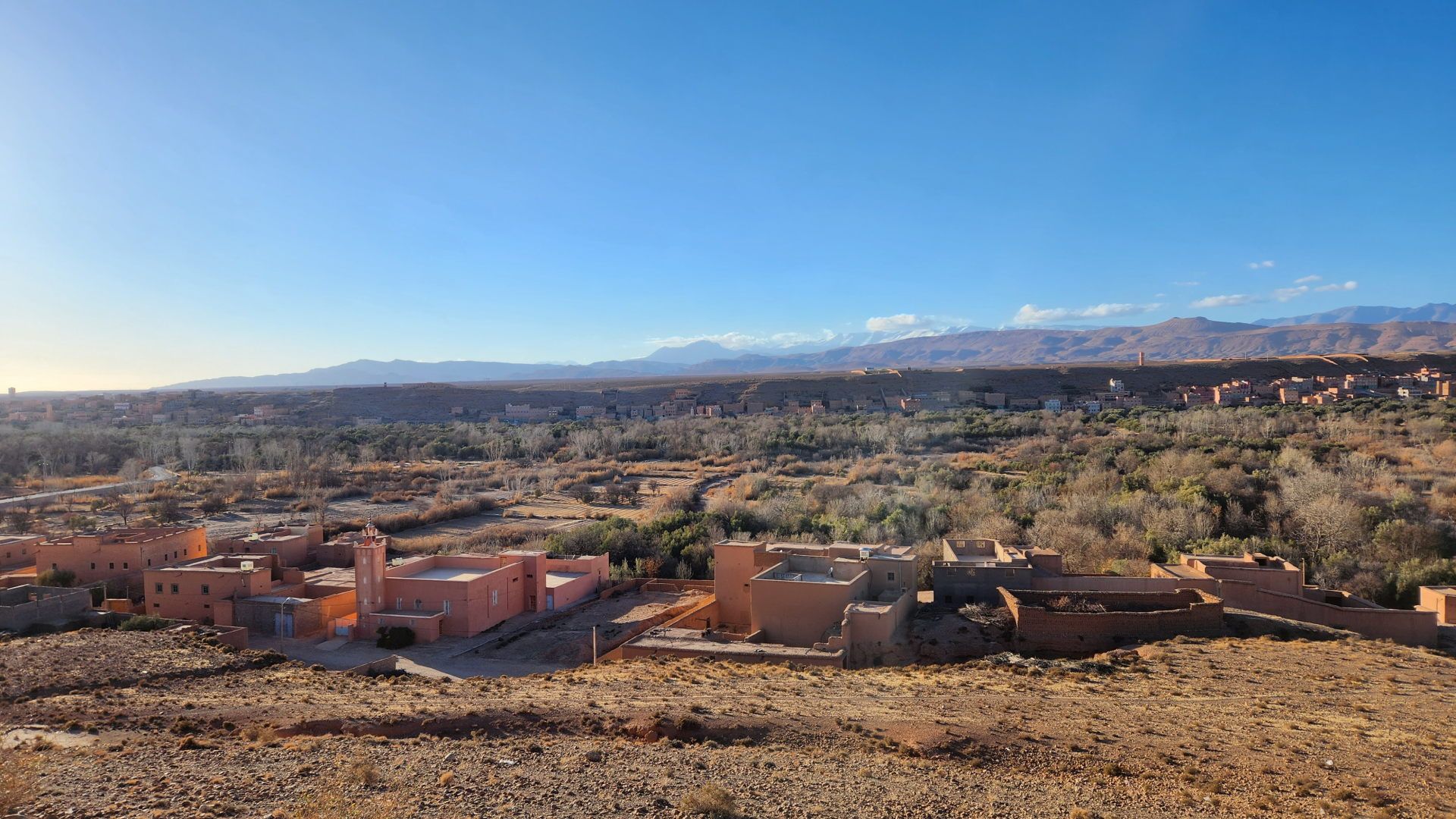

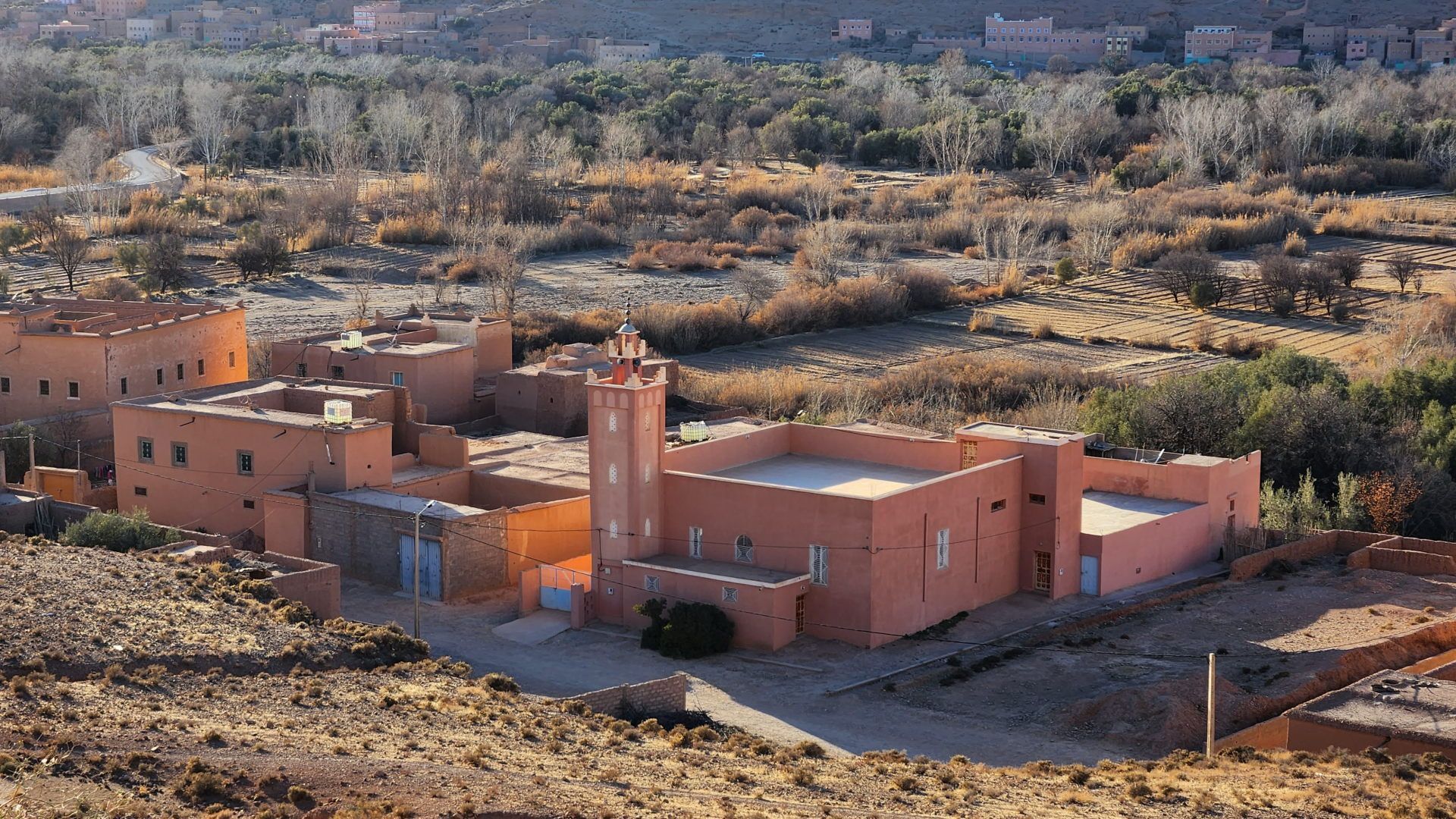
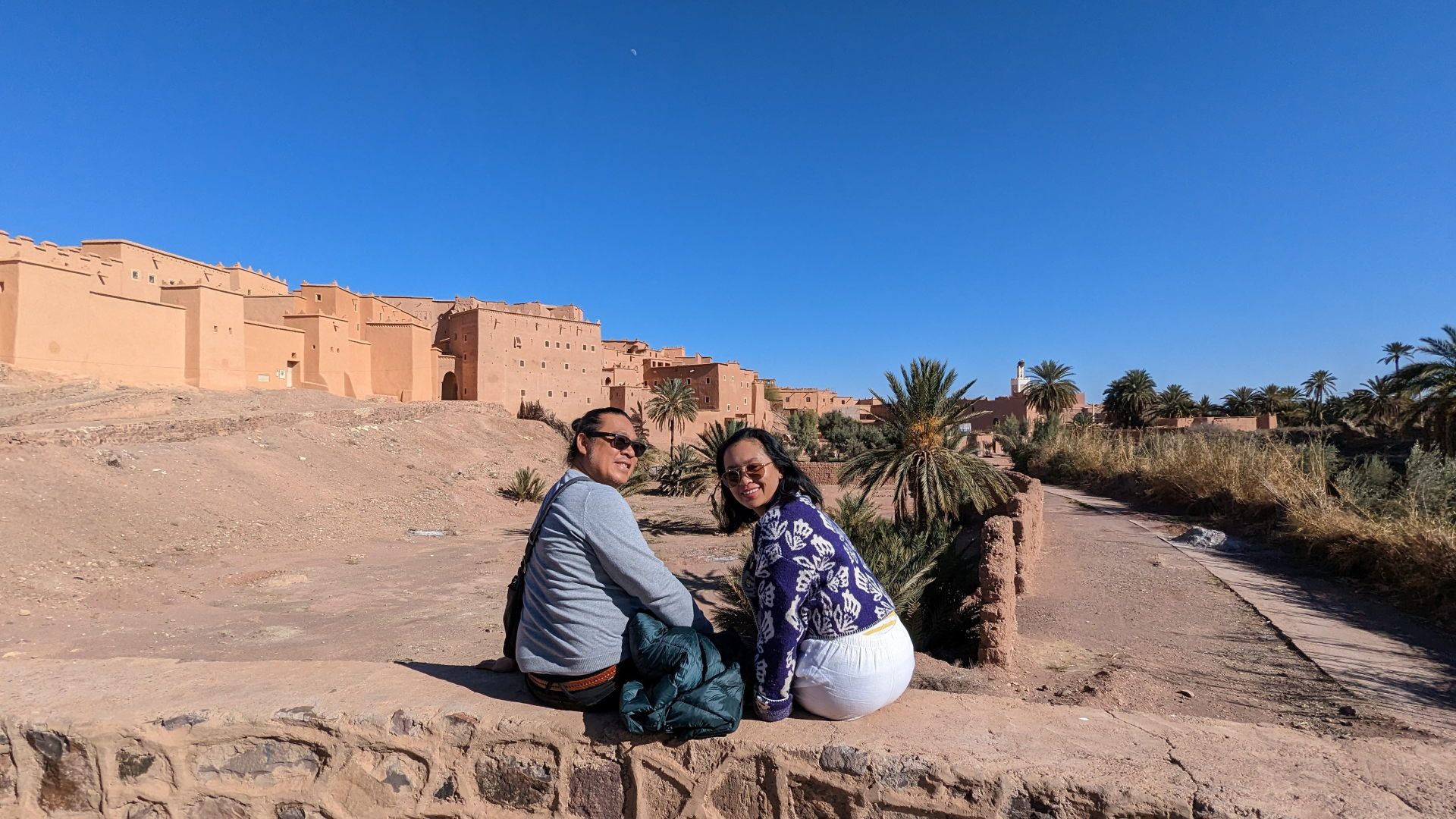
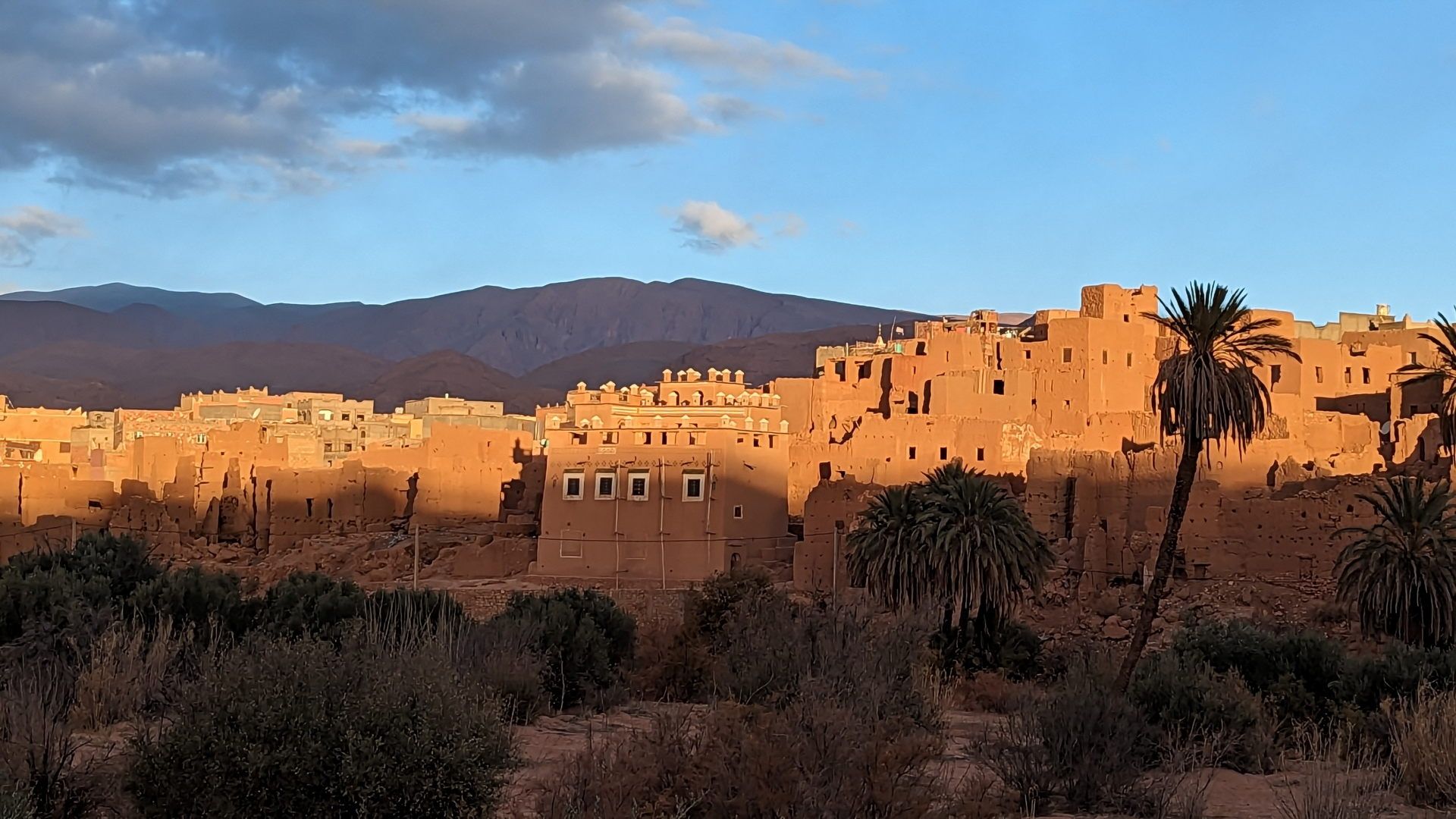
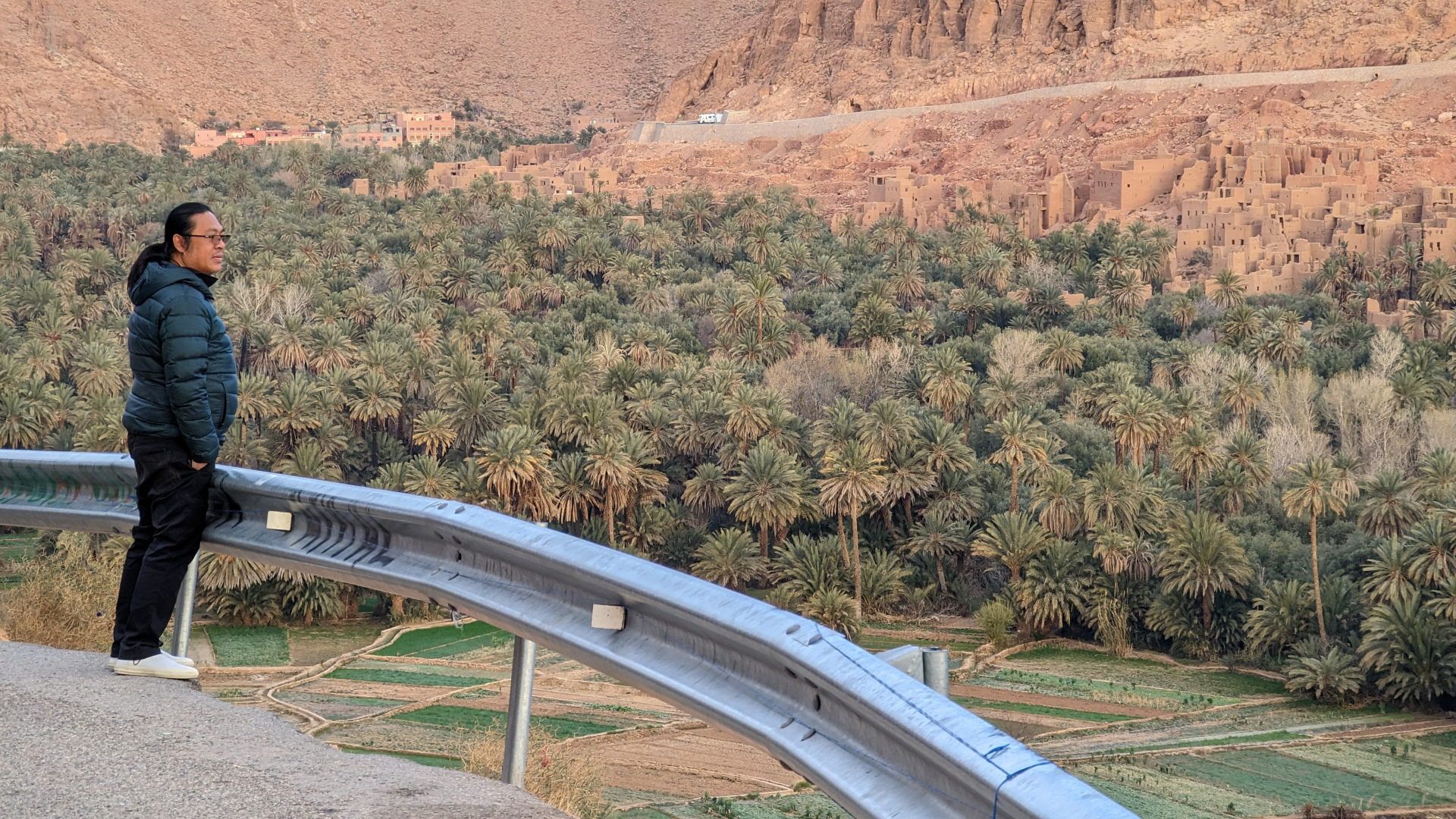


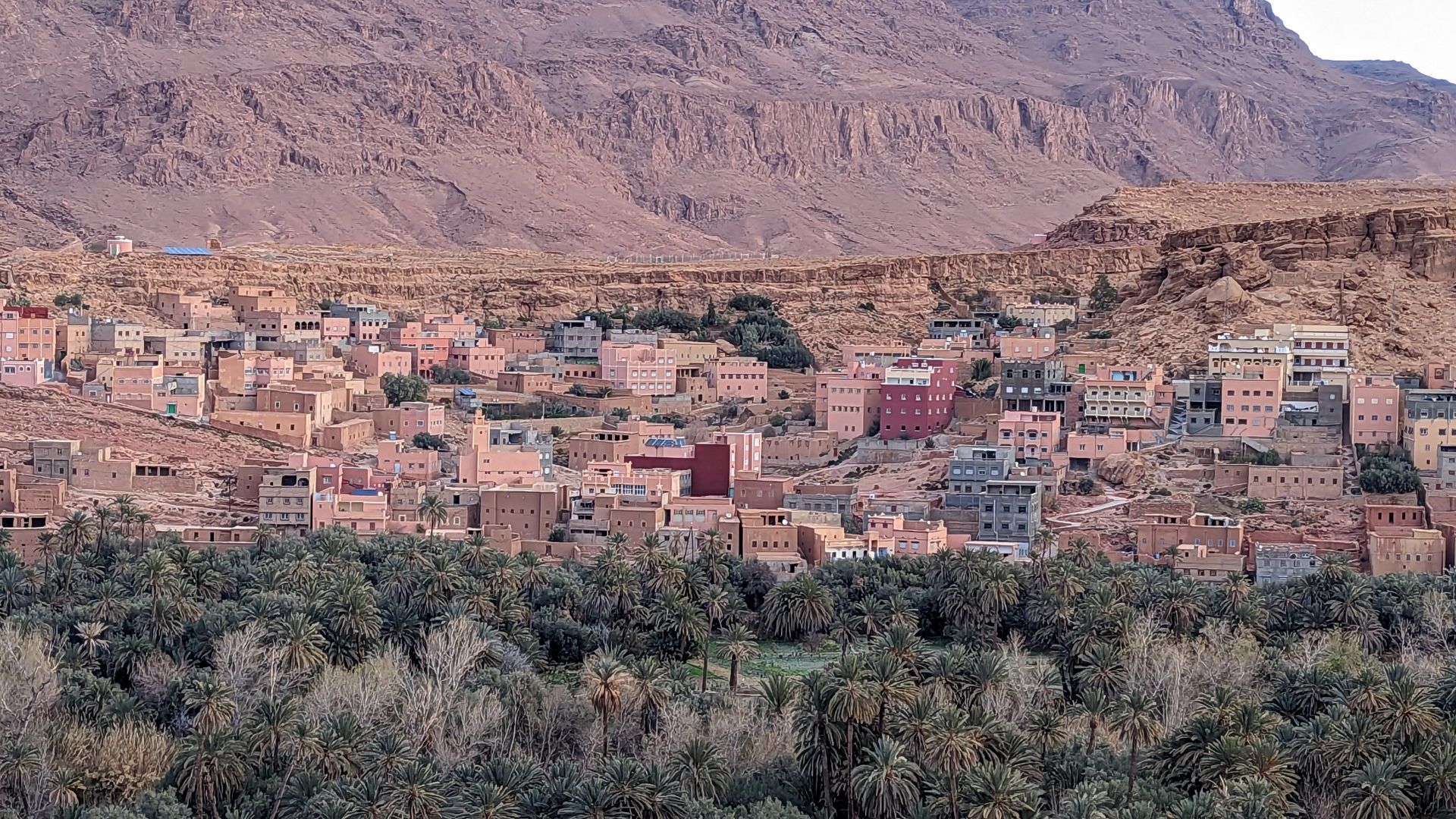

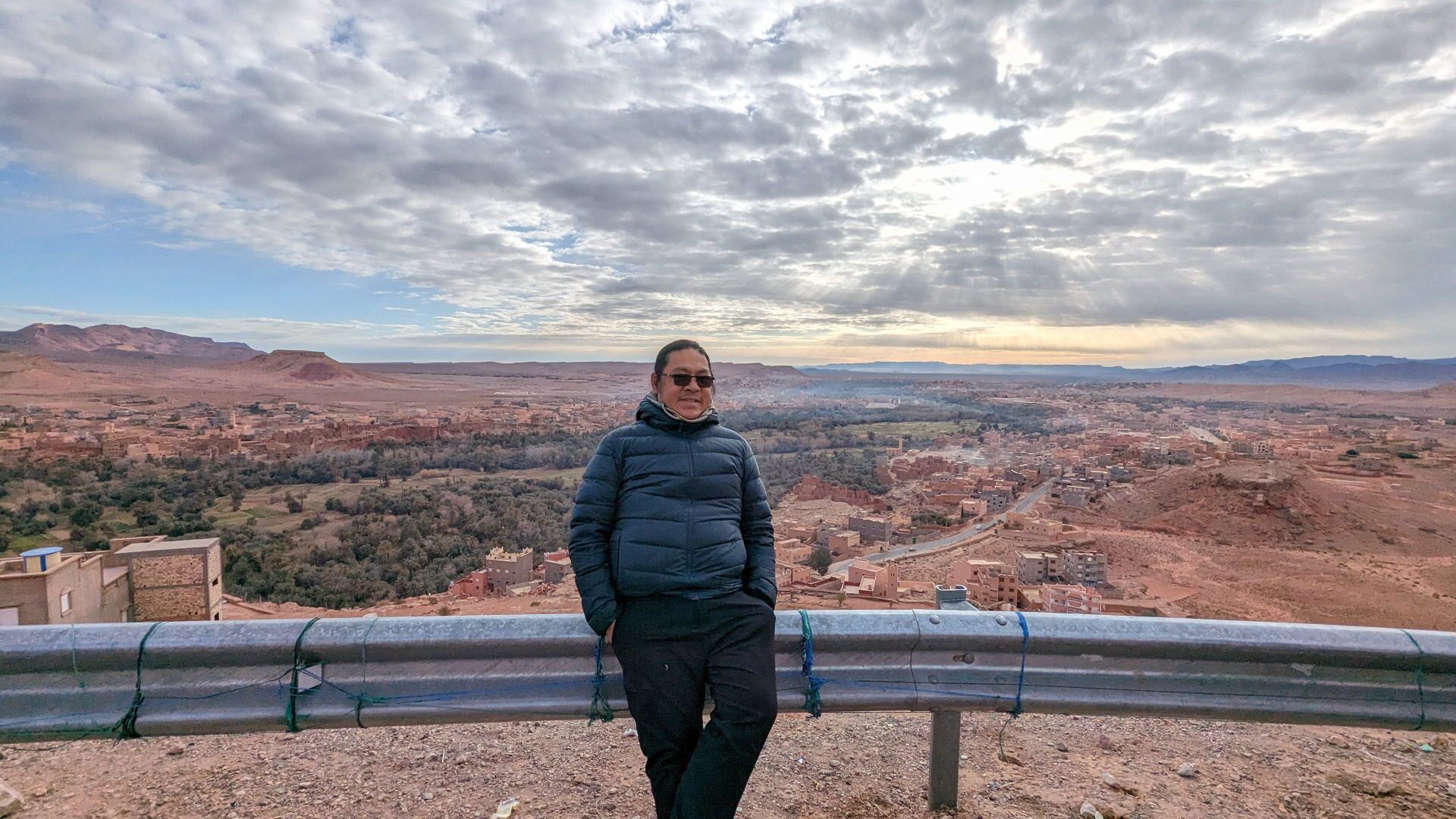
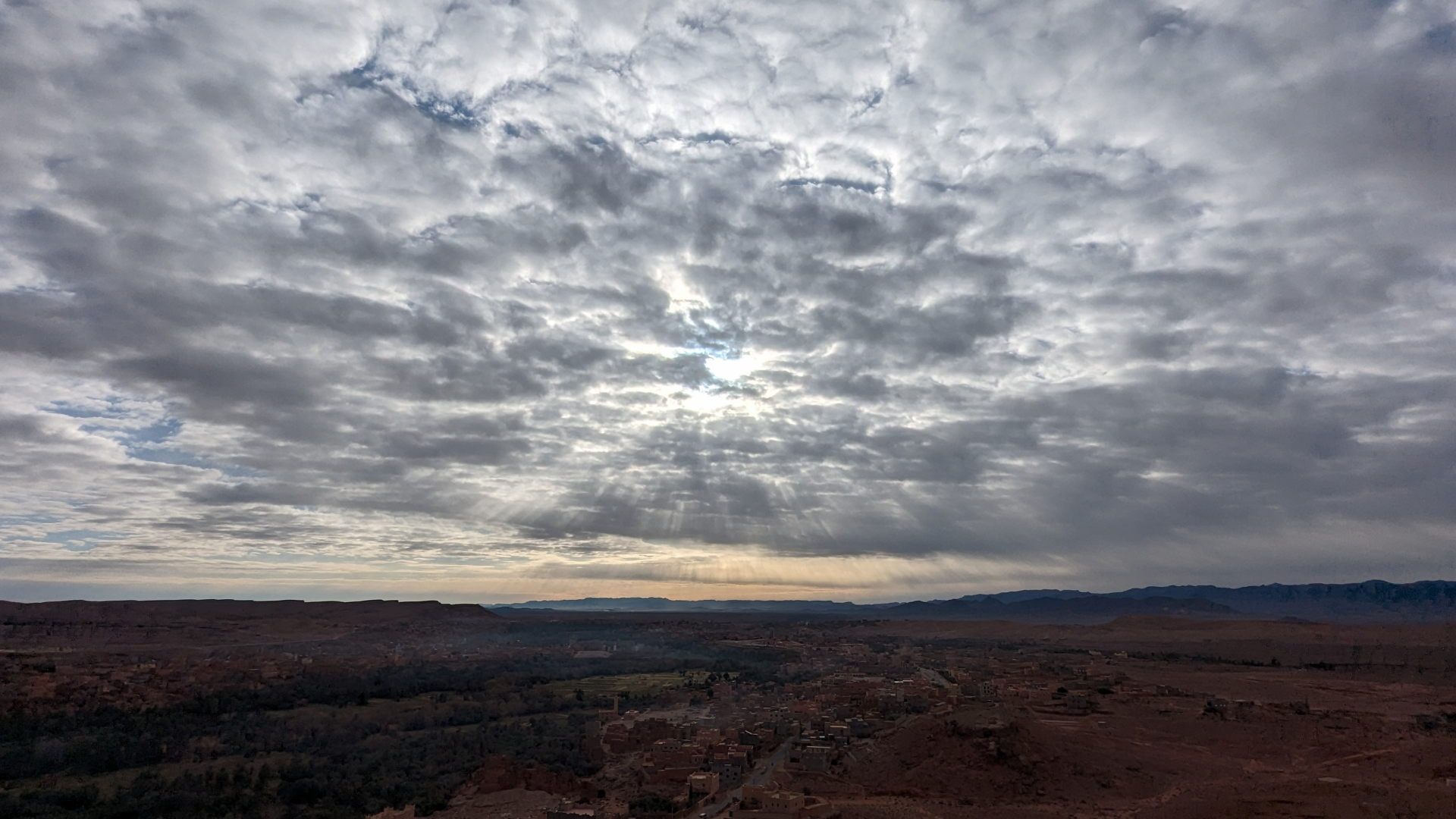
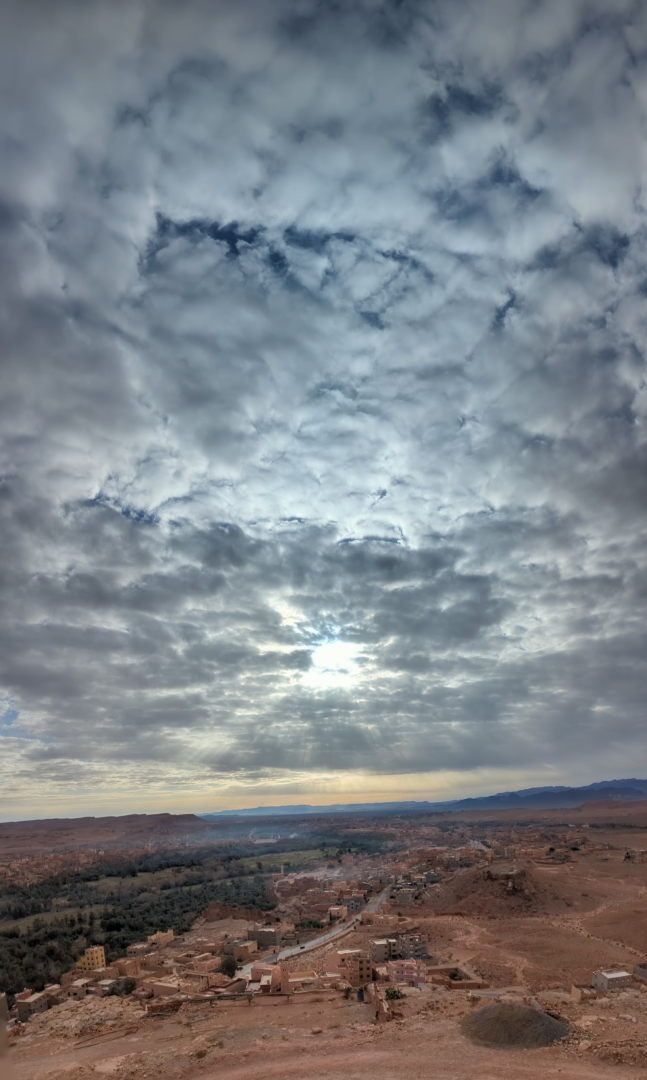
Overnight at Hotel Bougafer in Tinghir. This place is probably better staffed during busy months but it was really poorly run during the time we spent the night. Most of the lights in the halls were off. I'm not sure its worth traveling to again to find out, though. First impressions and all that.
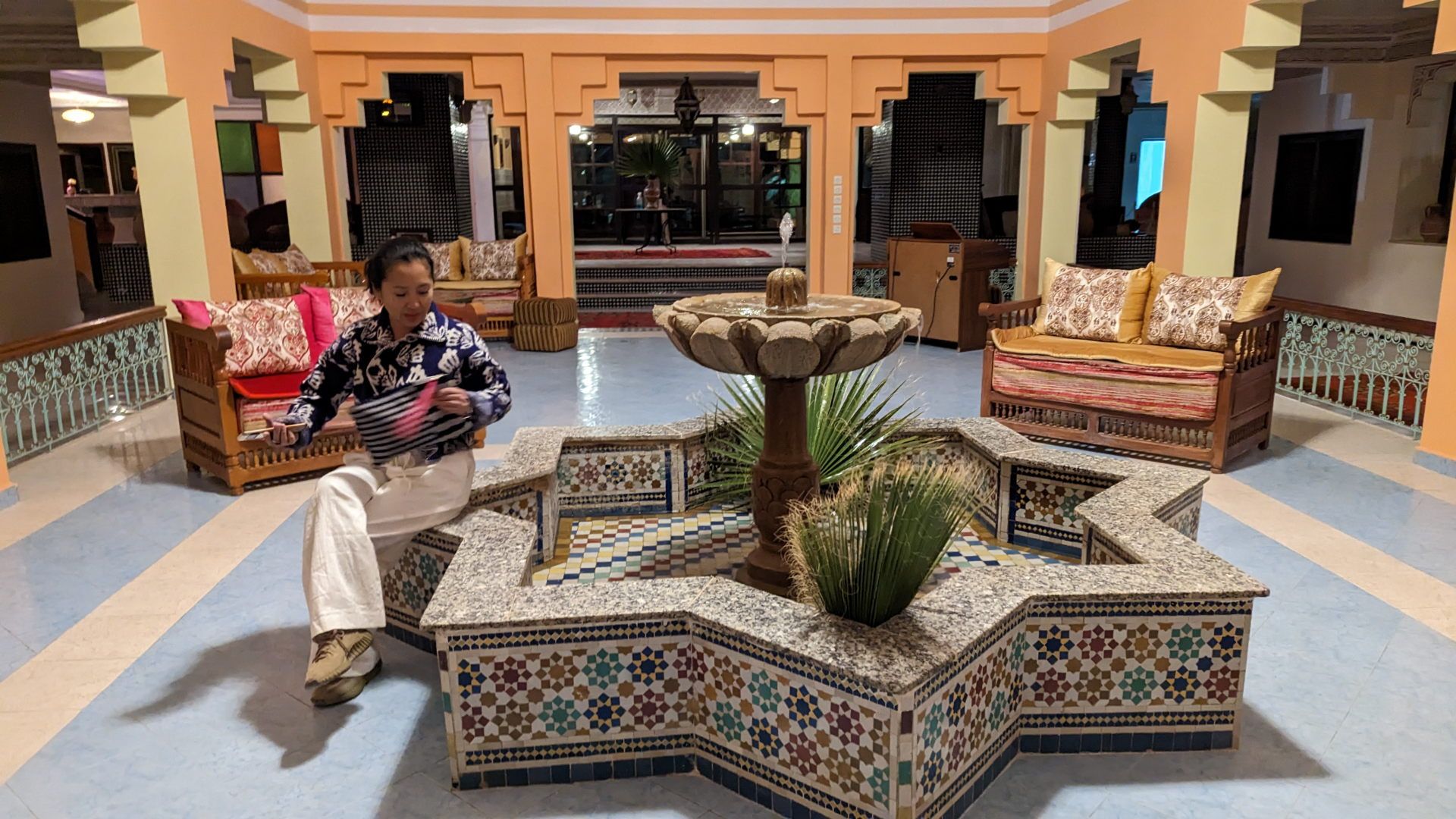

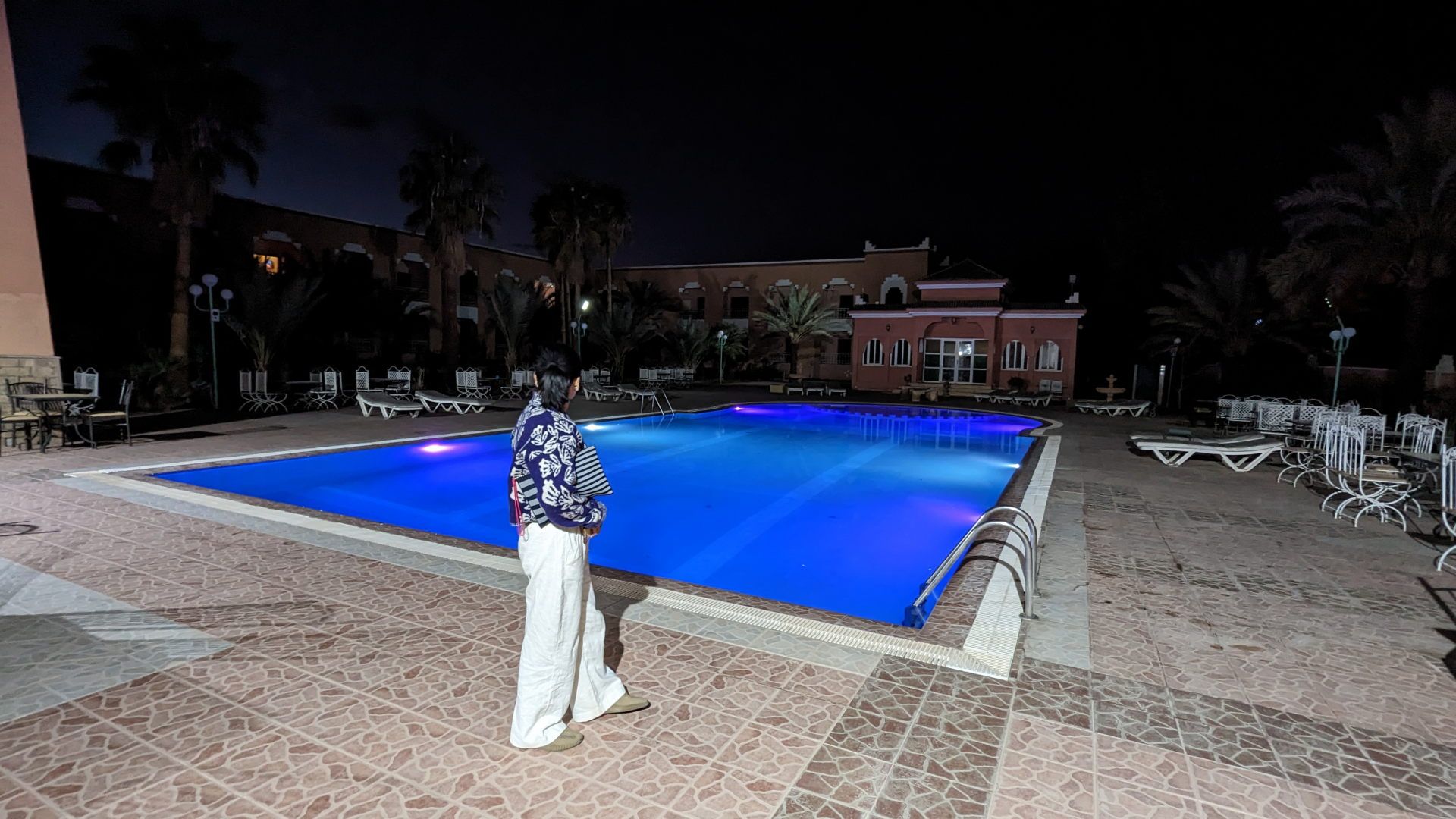
Excursion 2: Day 2

Traditional Berber village and carpet weavers

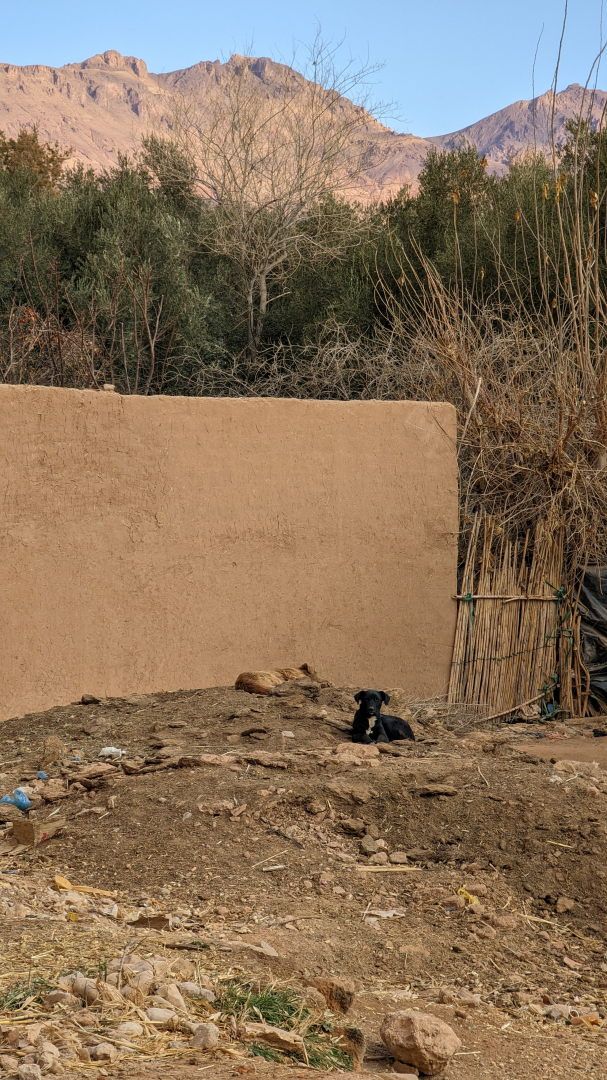
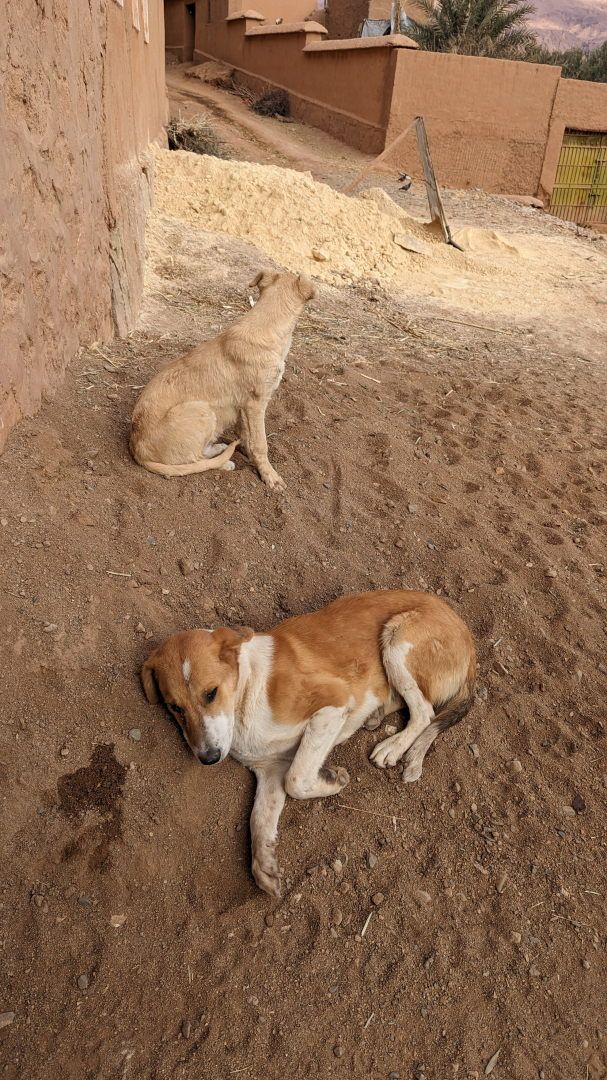
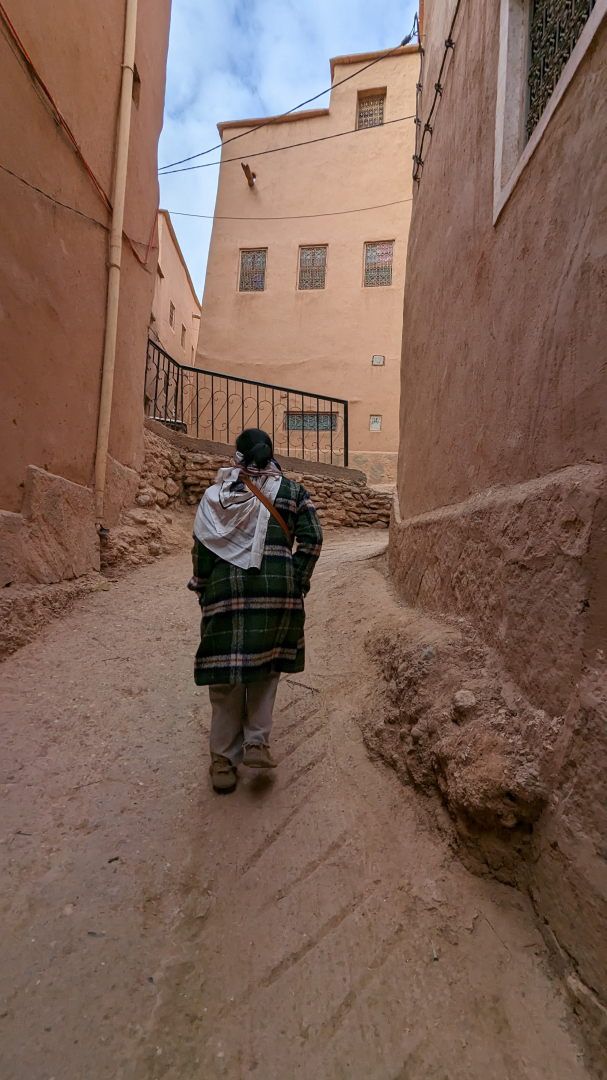

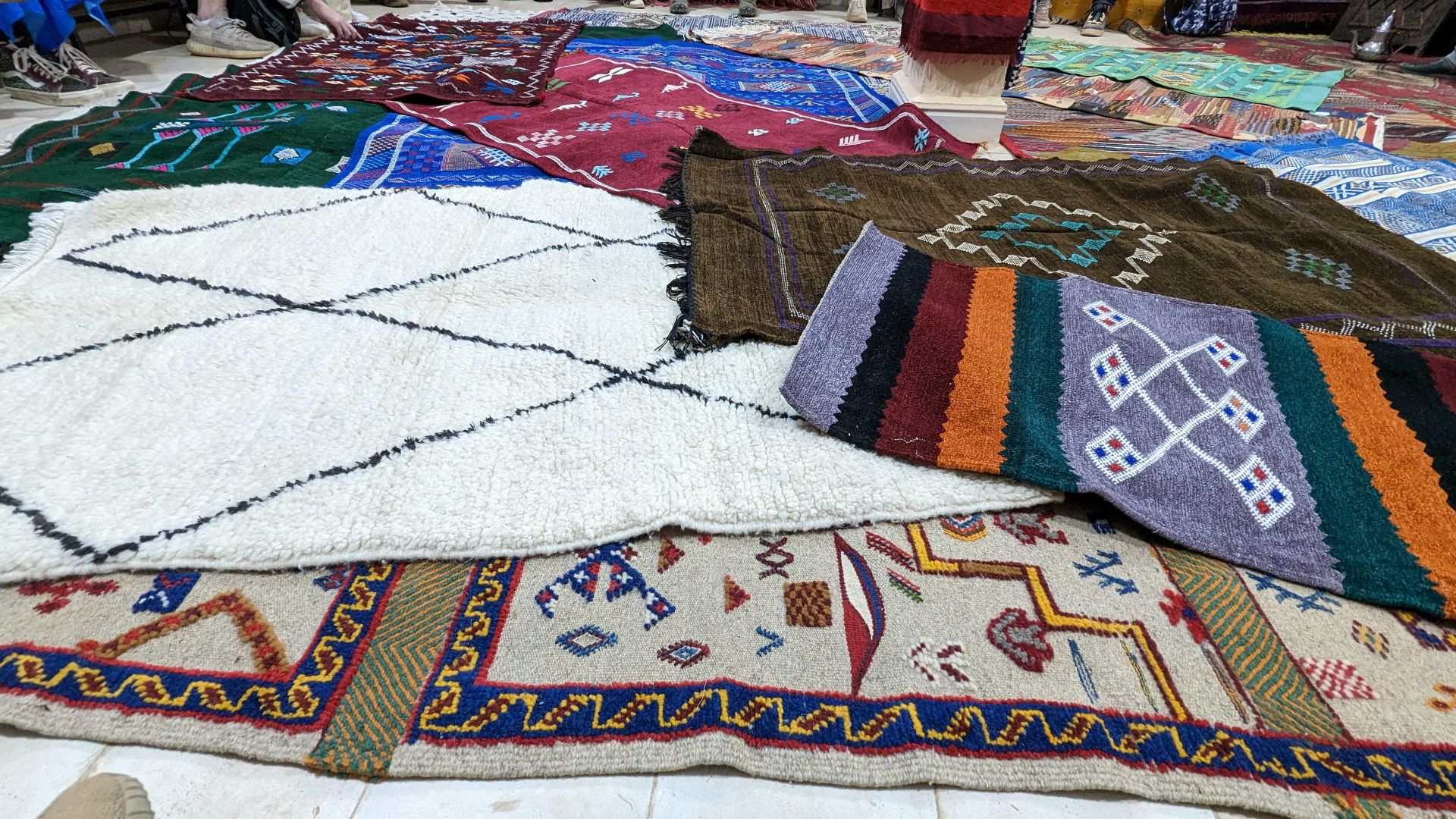
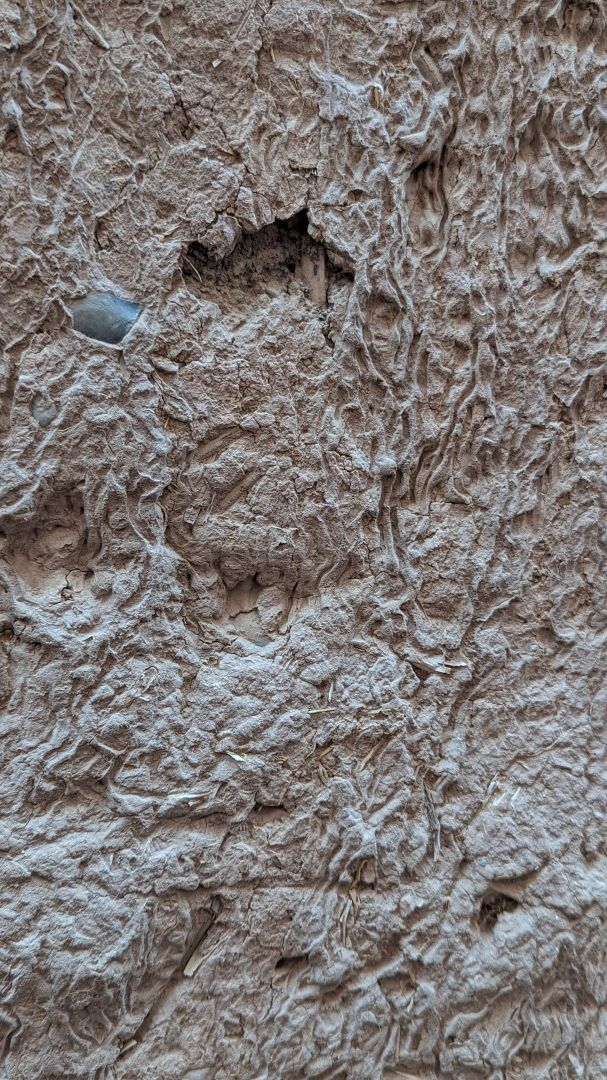
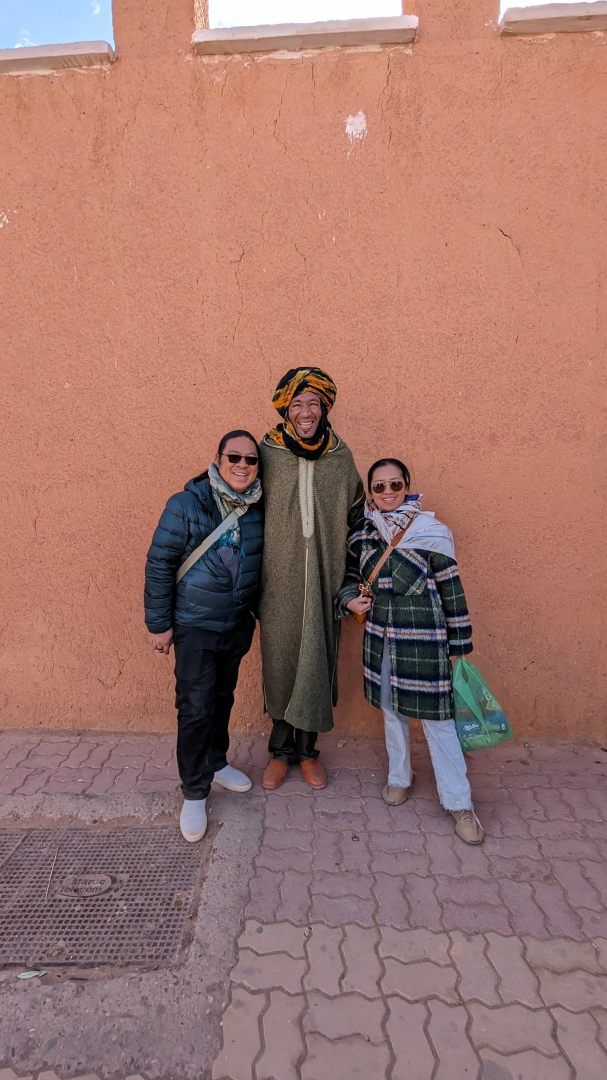
The Todghra Gorge (also called Todra) are limestone river canyons near Tenehir (aka Tinghir). They are quite popular for mountain climbing. It was the setting of Expedition Impossible S1:E4, an Amazing Race clone. Instead, we found this cute doggie who was trying to catch some of the swimming fish.
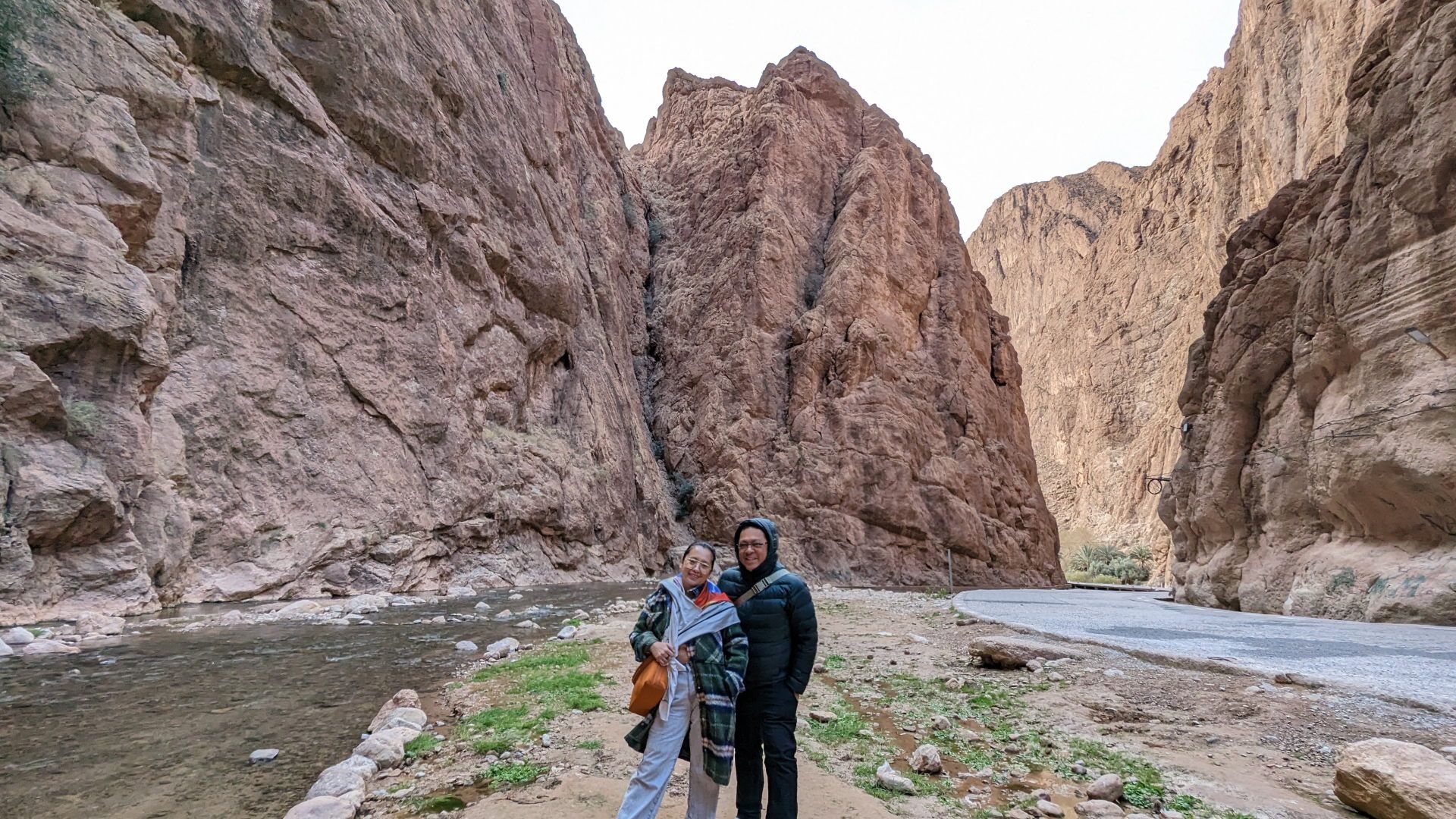
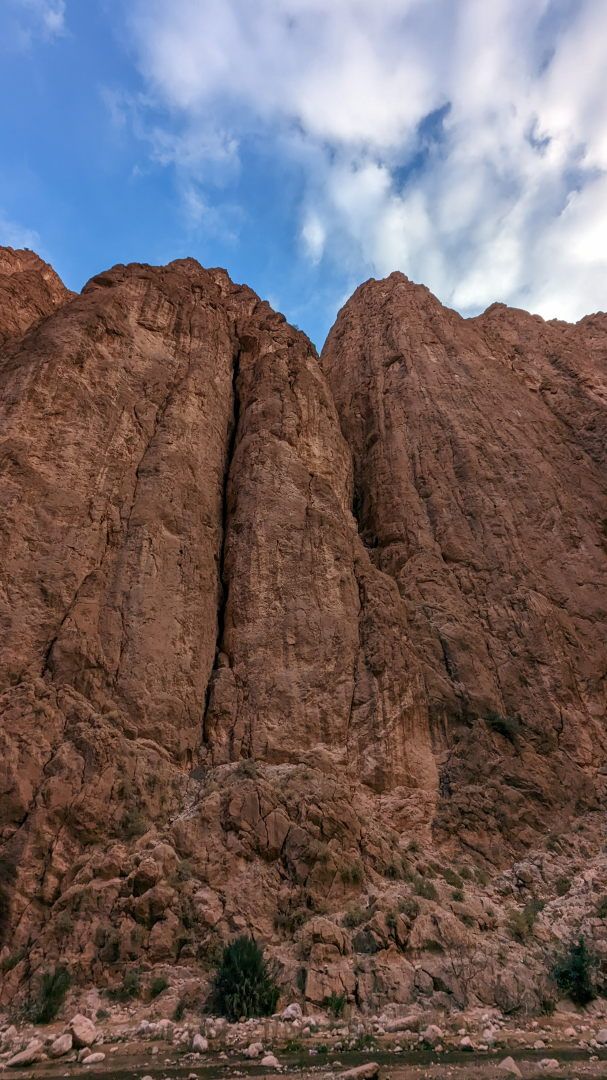

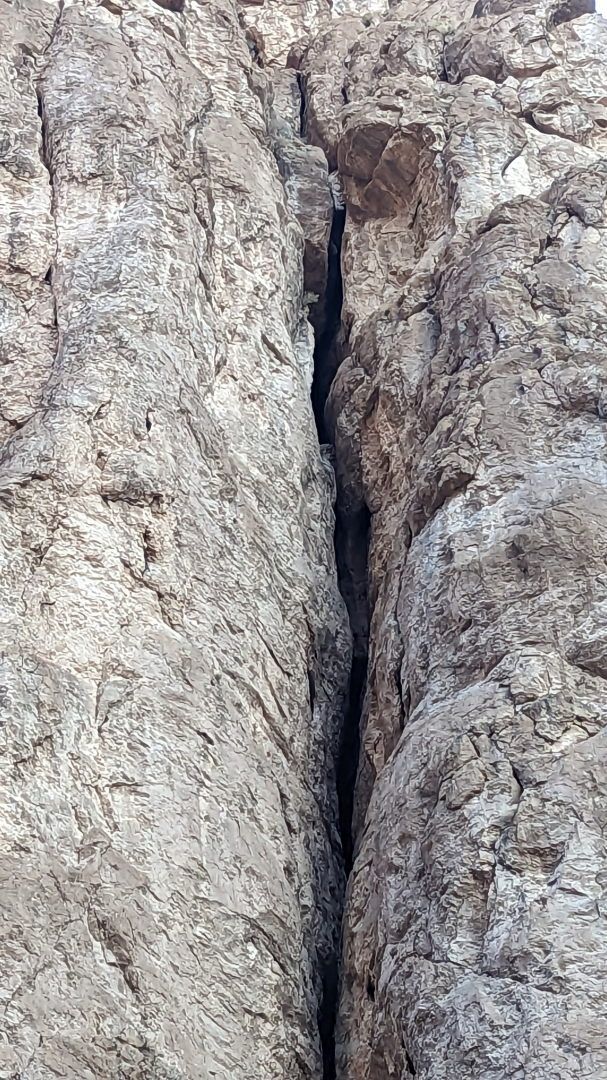

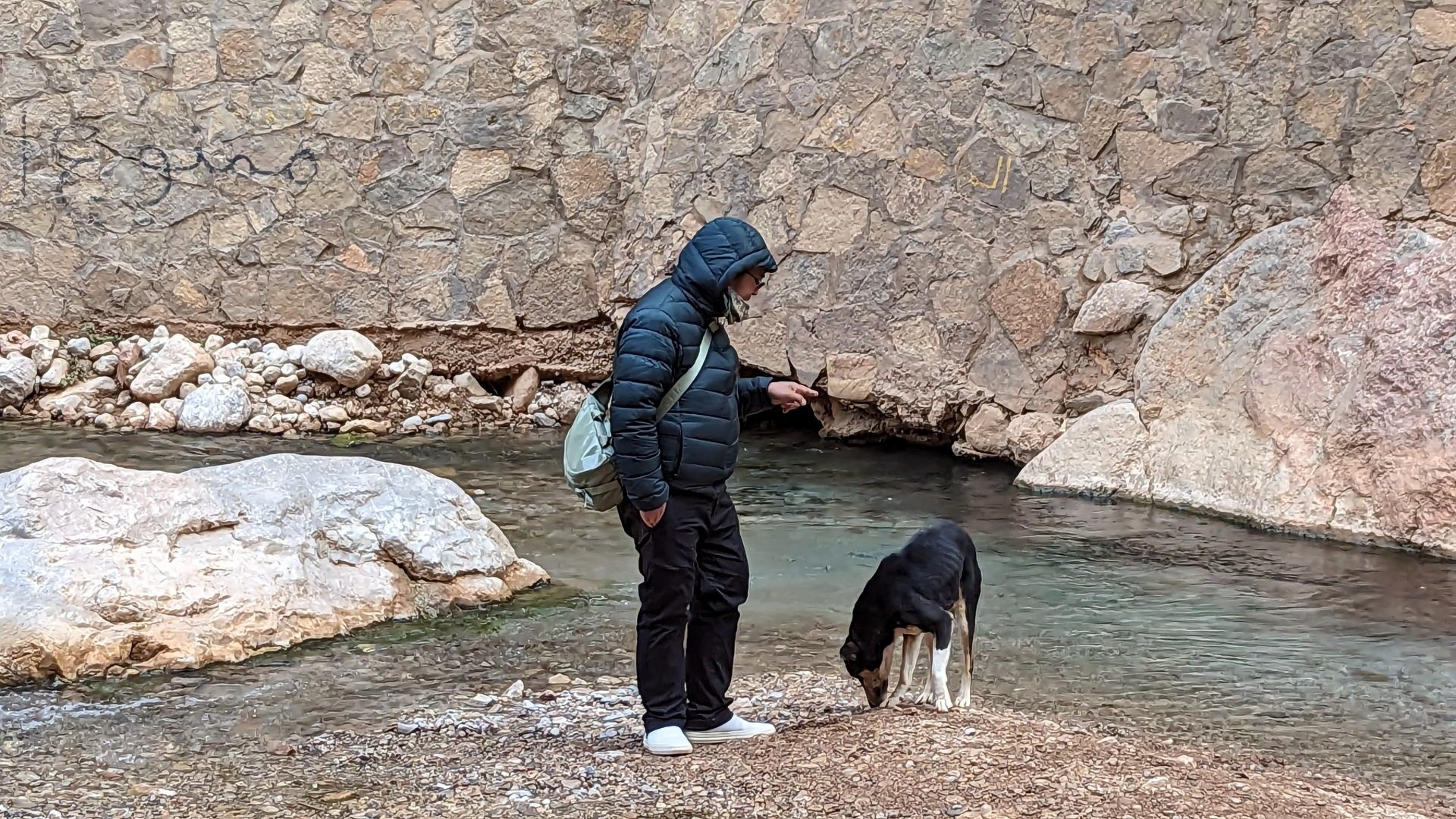
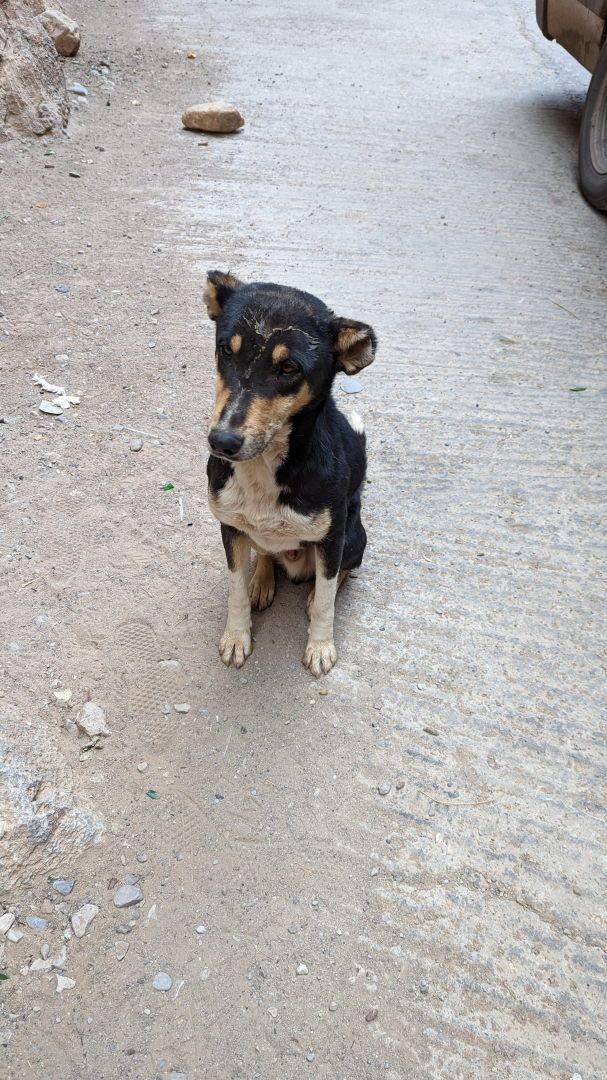
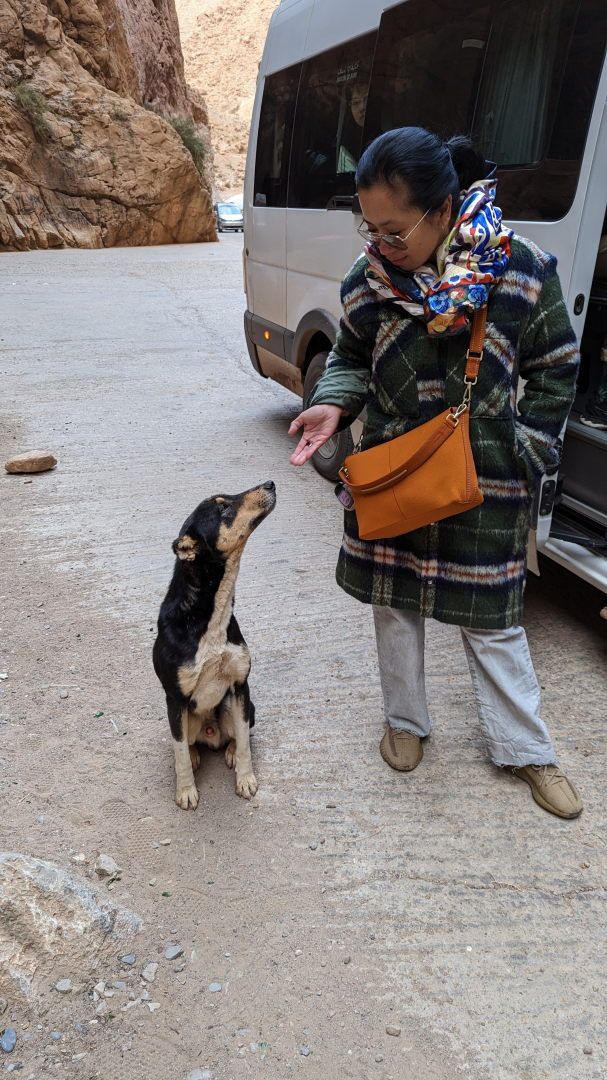
Dressed for success with the crew! Finally, got myself a traditional Berber djellaba and learned to tie my own head-scarf which should help keep me warm in the evening.


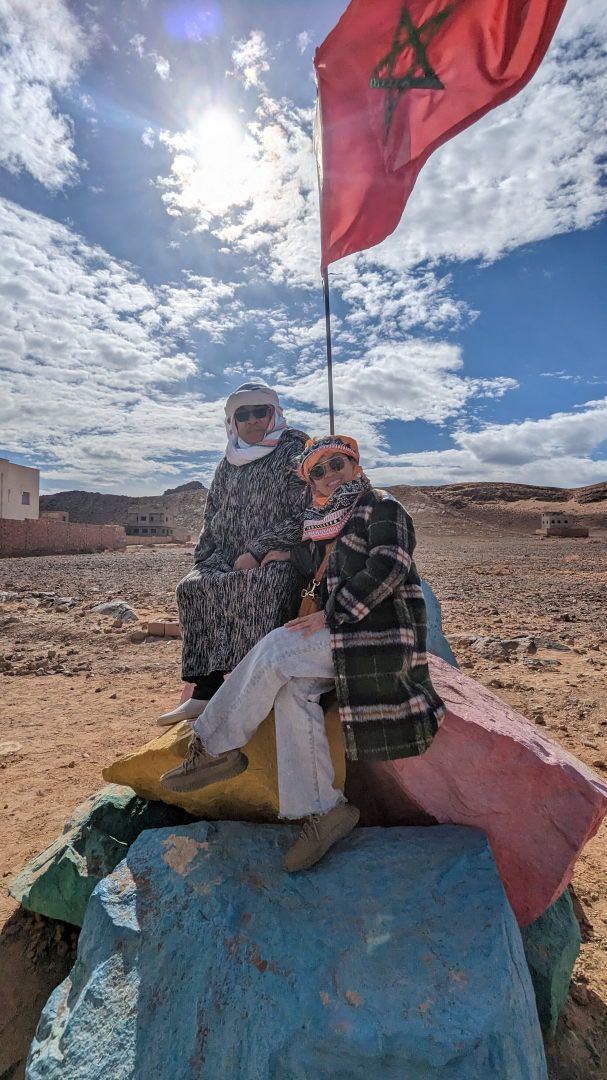
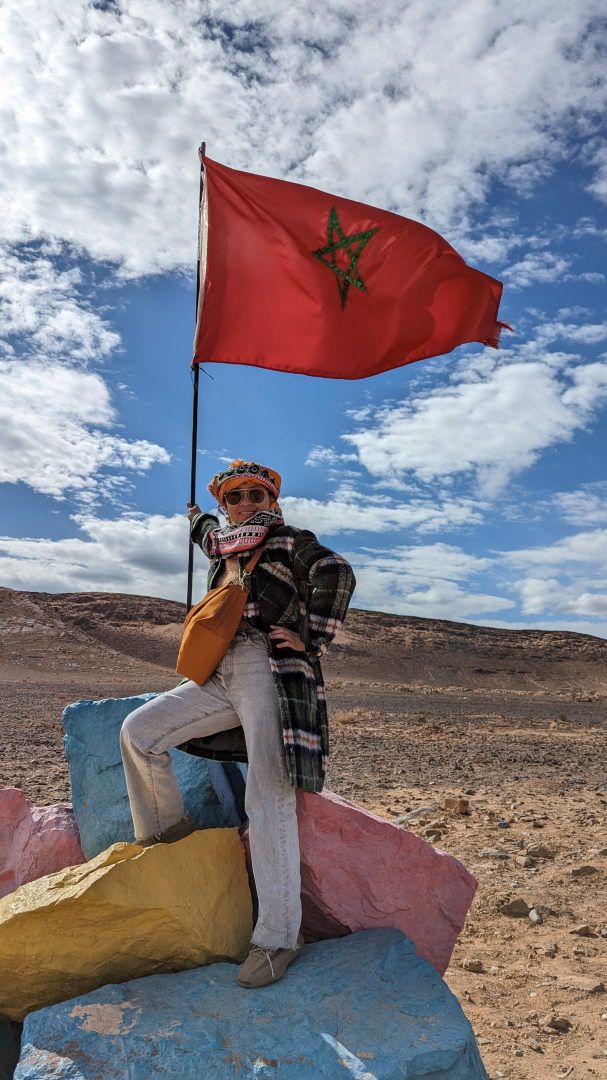
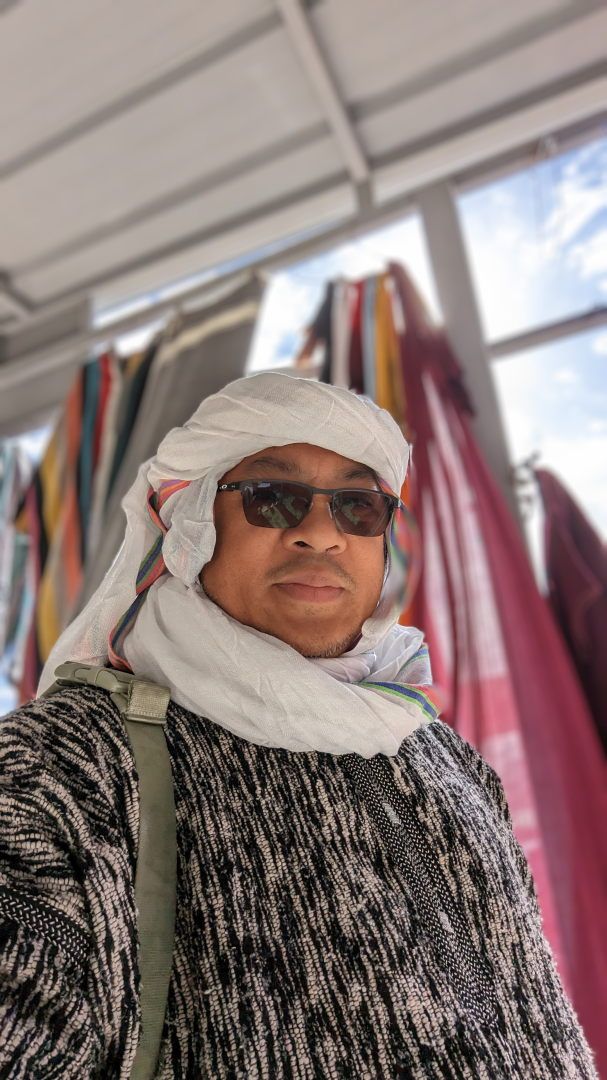
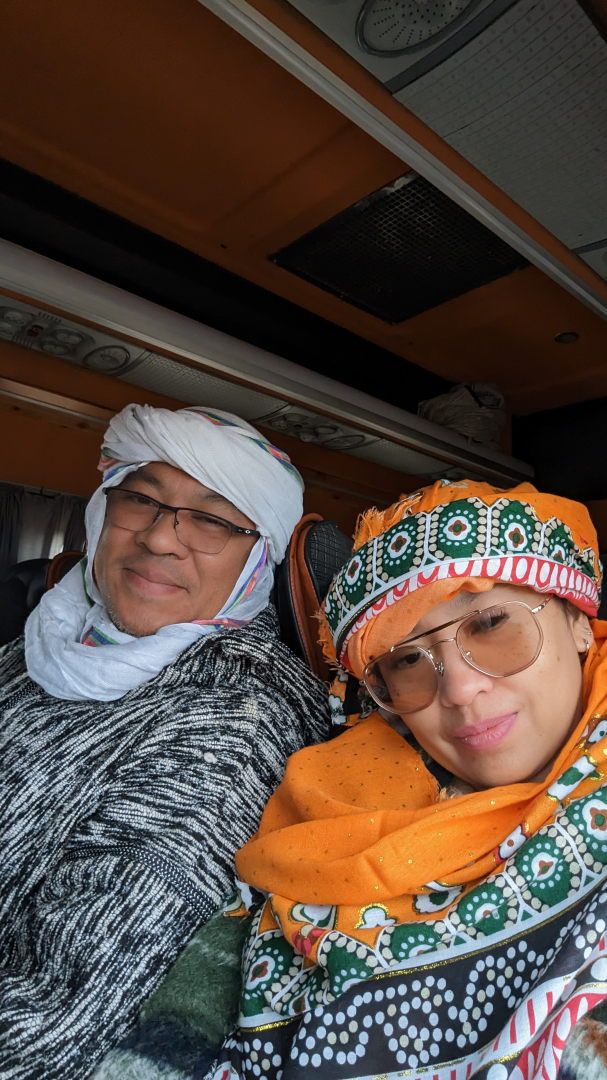
Acequias of Errachidia. This was an interesting man-made waterway deep underground which connected the various tribes in the area. Each tribe was in charge their path and it was easy to know who wasn't pulling their weight when water didn't come down the line.
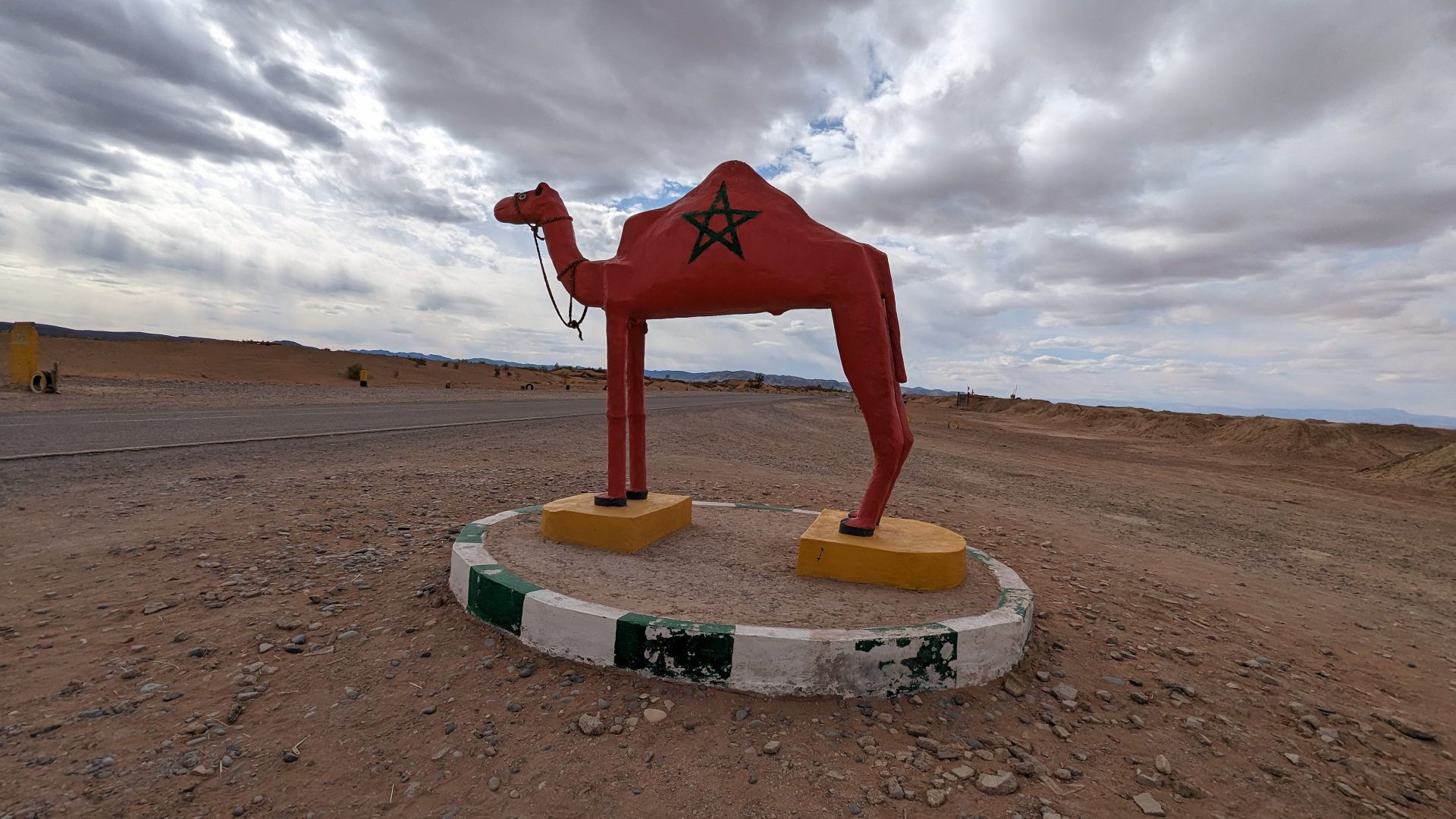
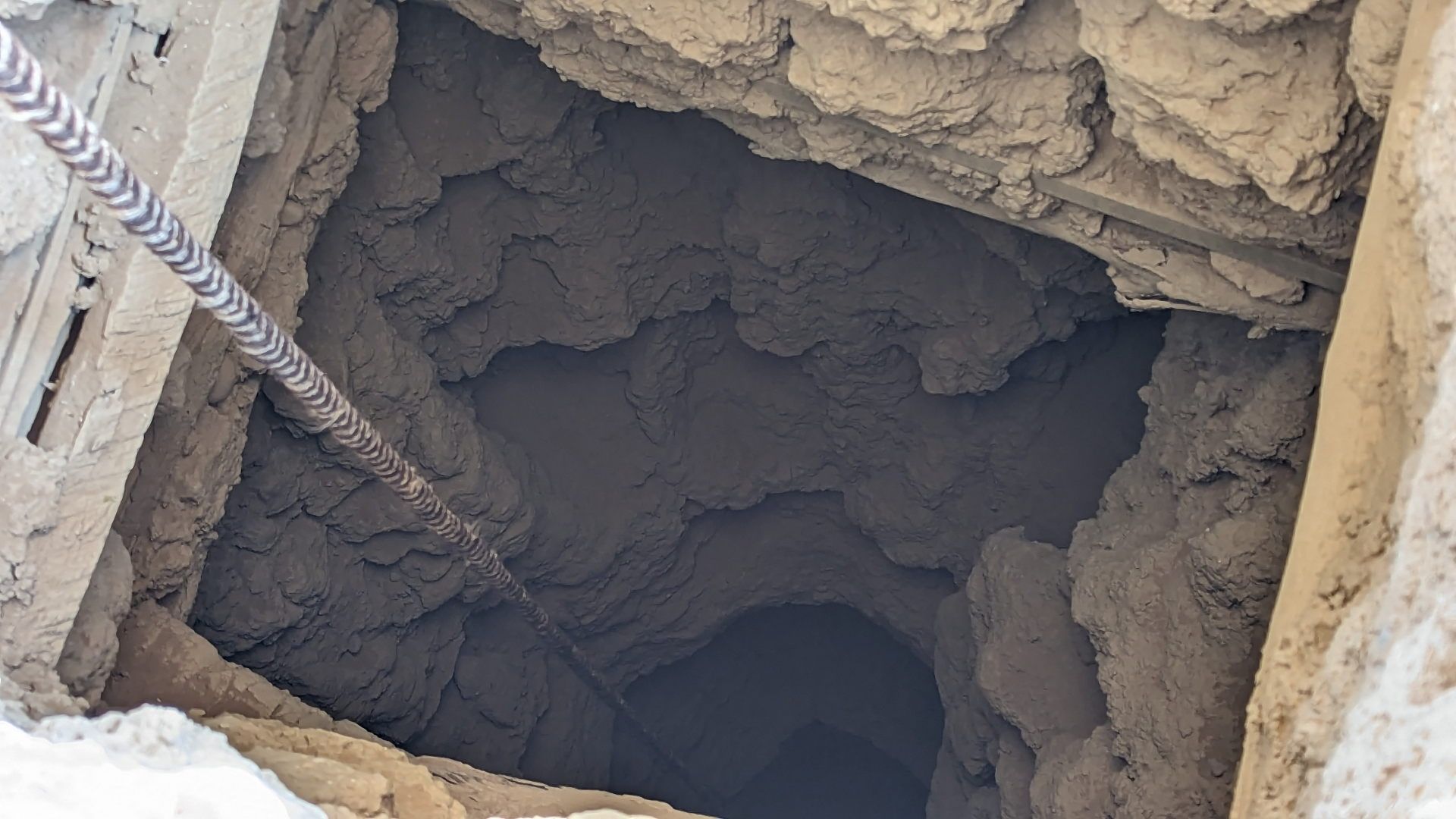

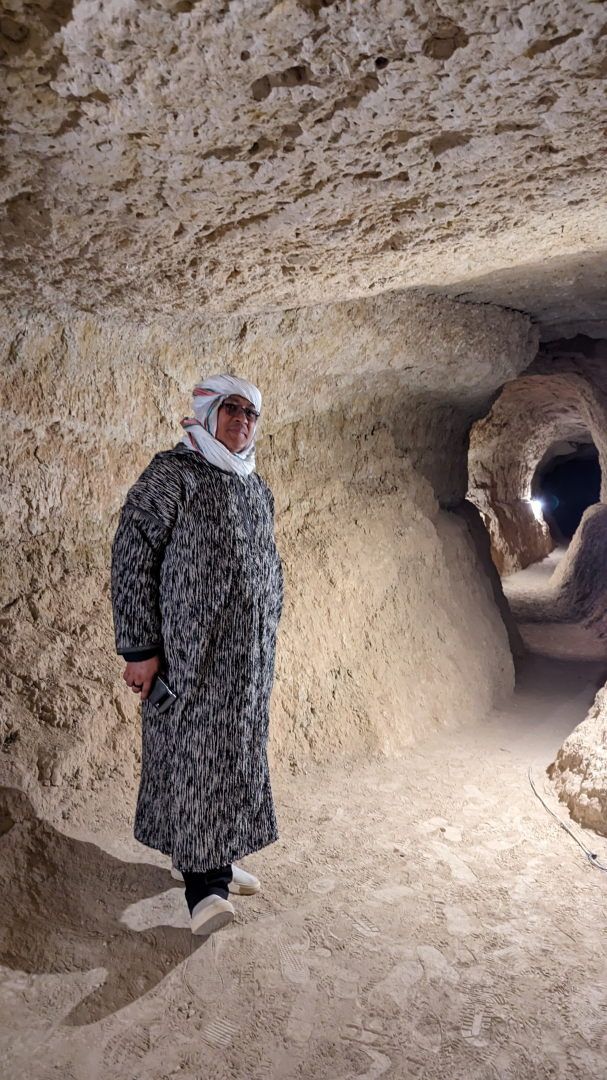

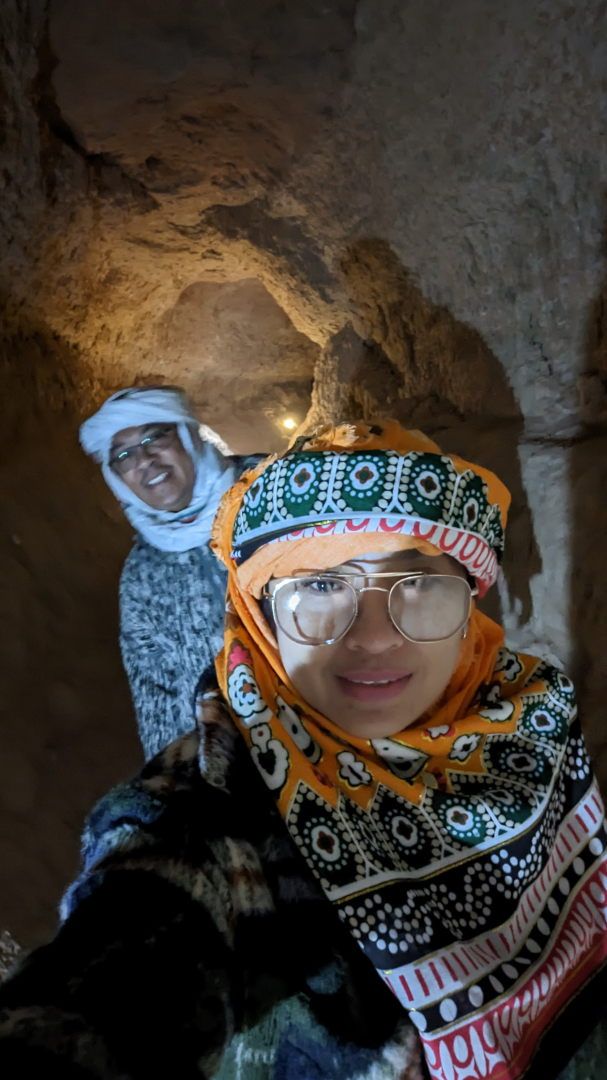

Merzouga is the village closest to Erg Chebbi. No, this isn't the Saharan desert (another 100km away) but the dunes get pretty high and thats tiring enough for me. Slogging through sand is no joke, albeit pretty fun.
That being said, here's the next background soundtrack to play:
Getting yourself situated on a camel's back is probably the same experience as on a dragon. The back rises first and then the front legs. There's a whole lot of trust going to happen to get off, since the front legs bend first and you will feel yourself tipping forward. Just hold on and let the dust settle before getting off. Other than that, its probably more comfortable than on a horse due to the rolling gate. Their legs are so long that I was watching the hind legs slightly kick the front legs forward on mine. Check out who has a death grip on the handle bars.
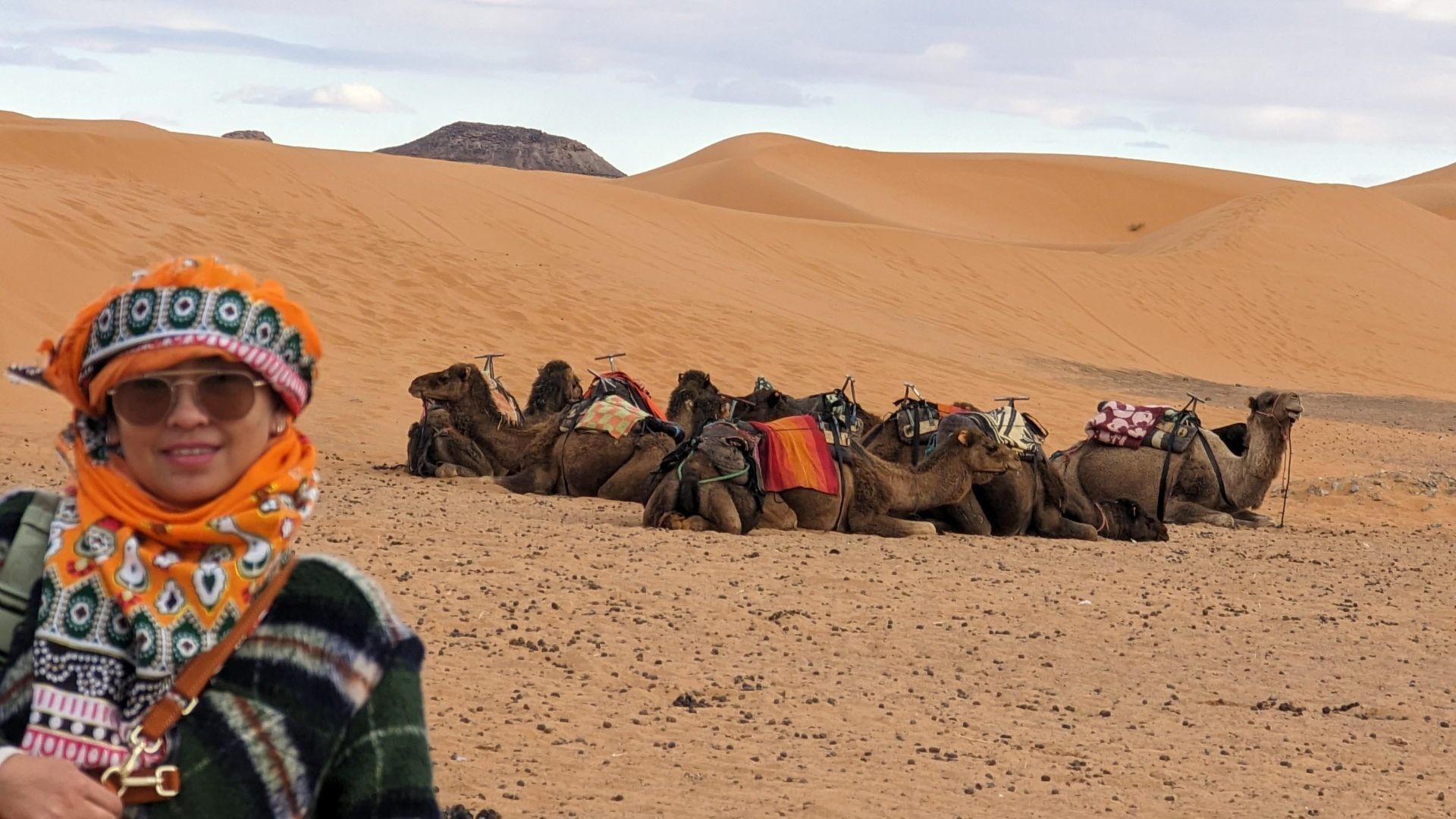
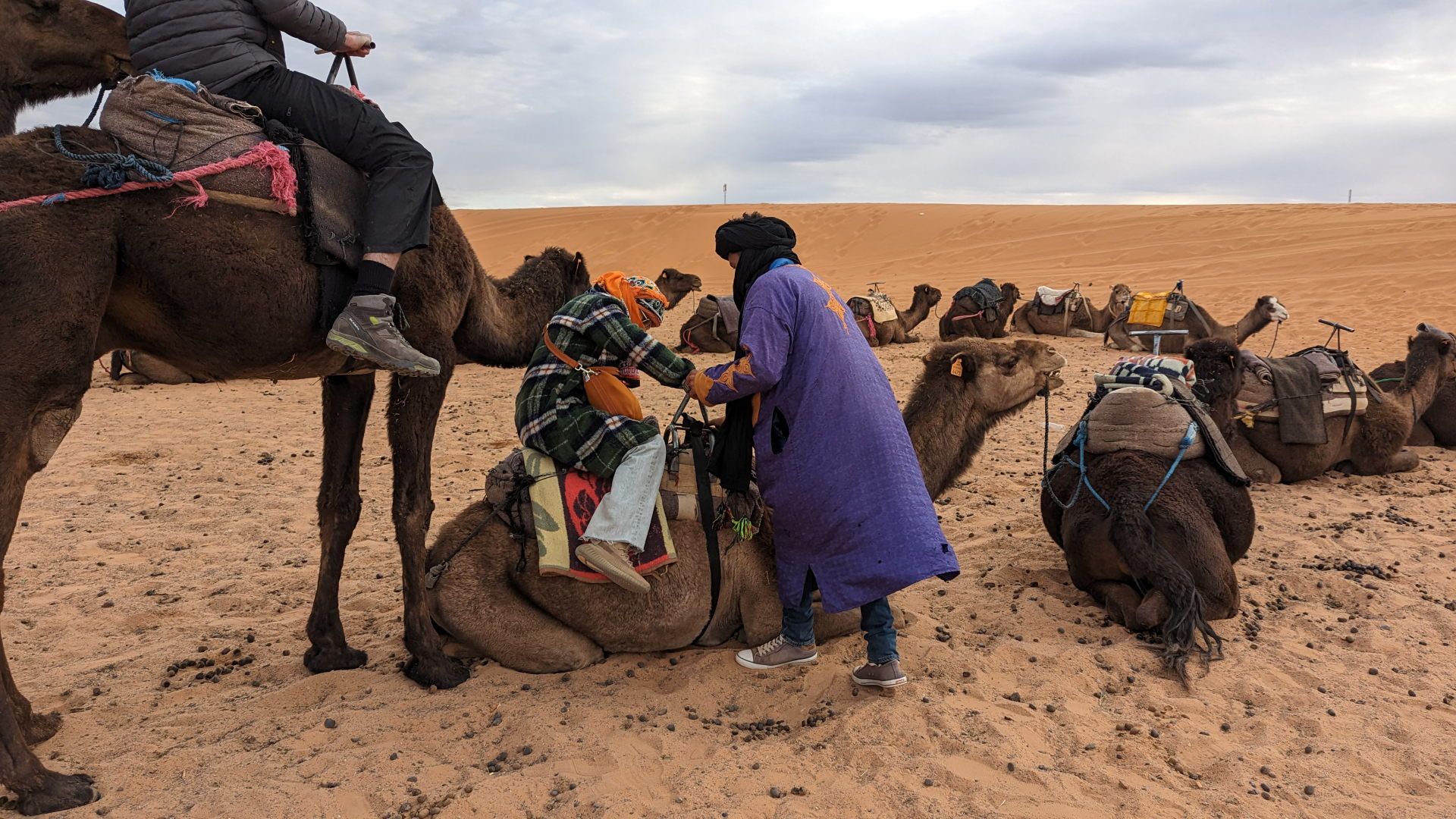
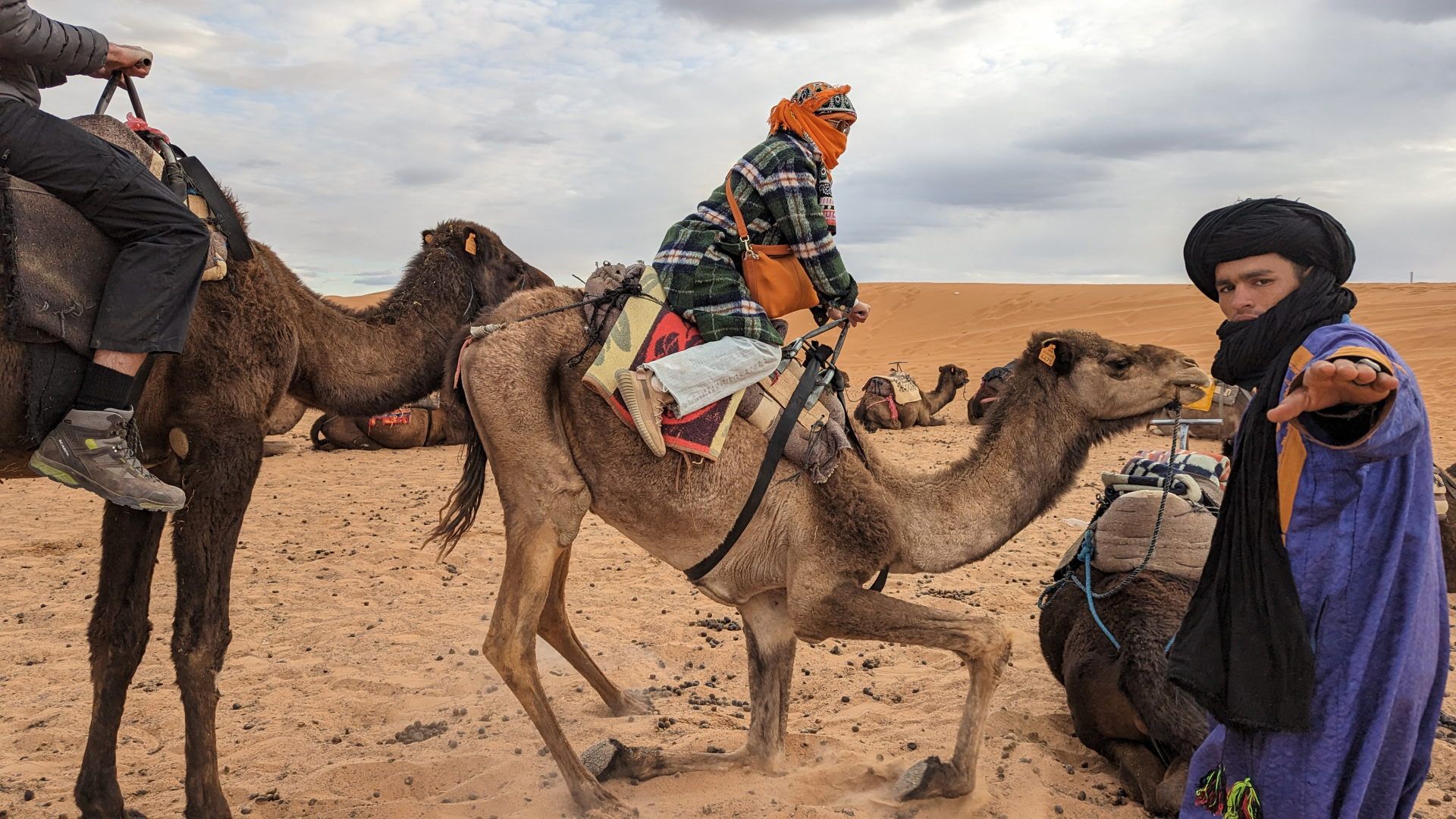

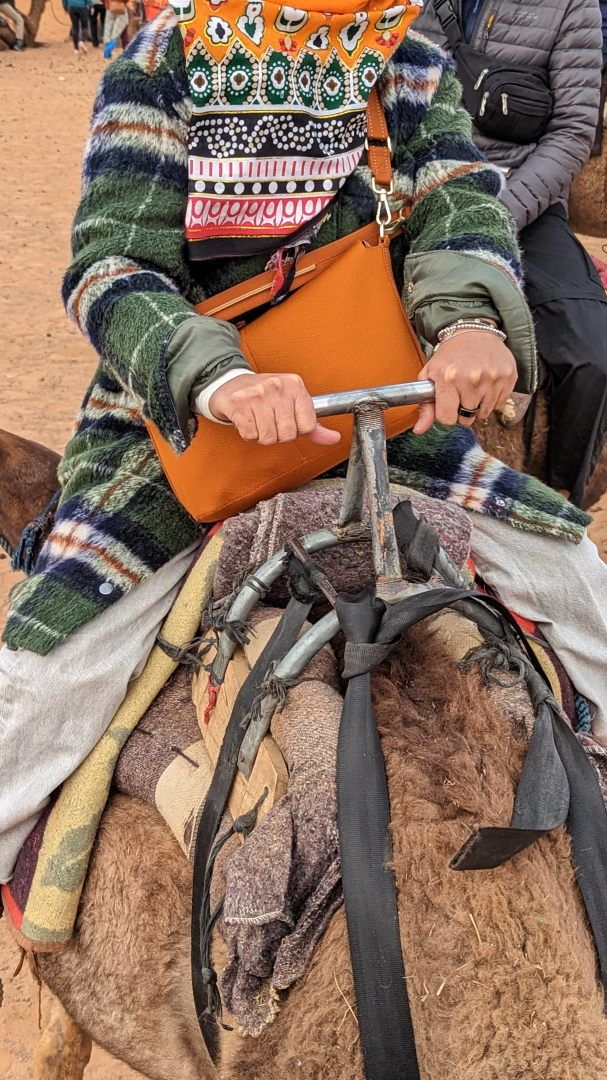
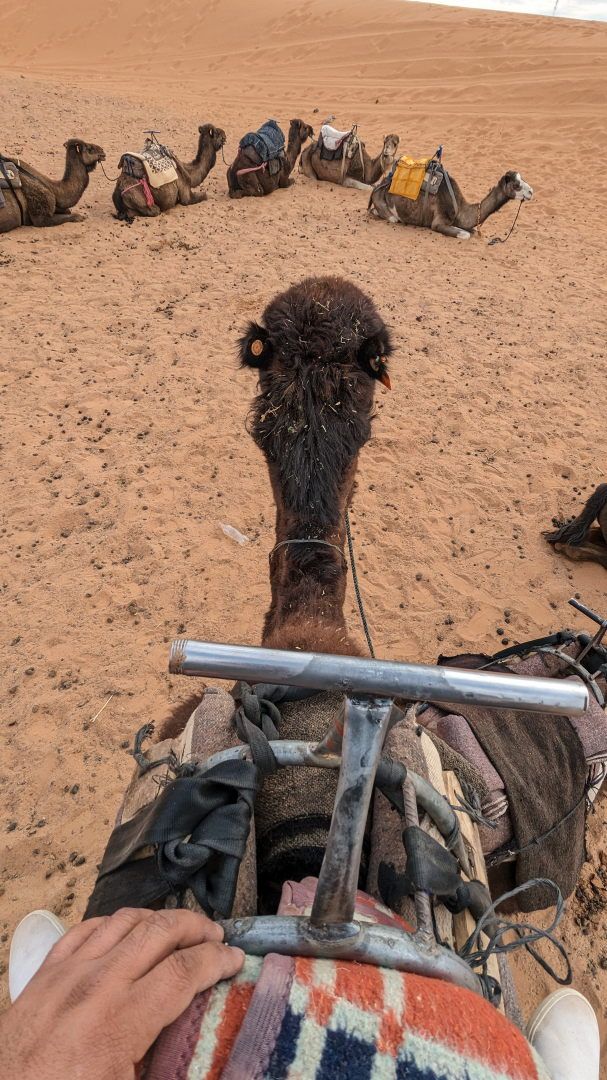
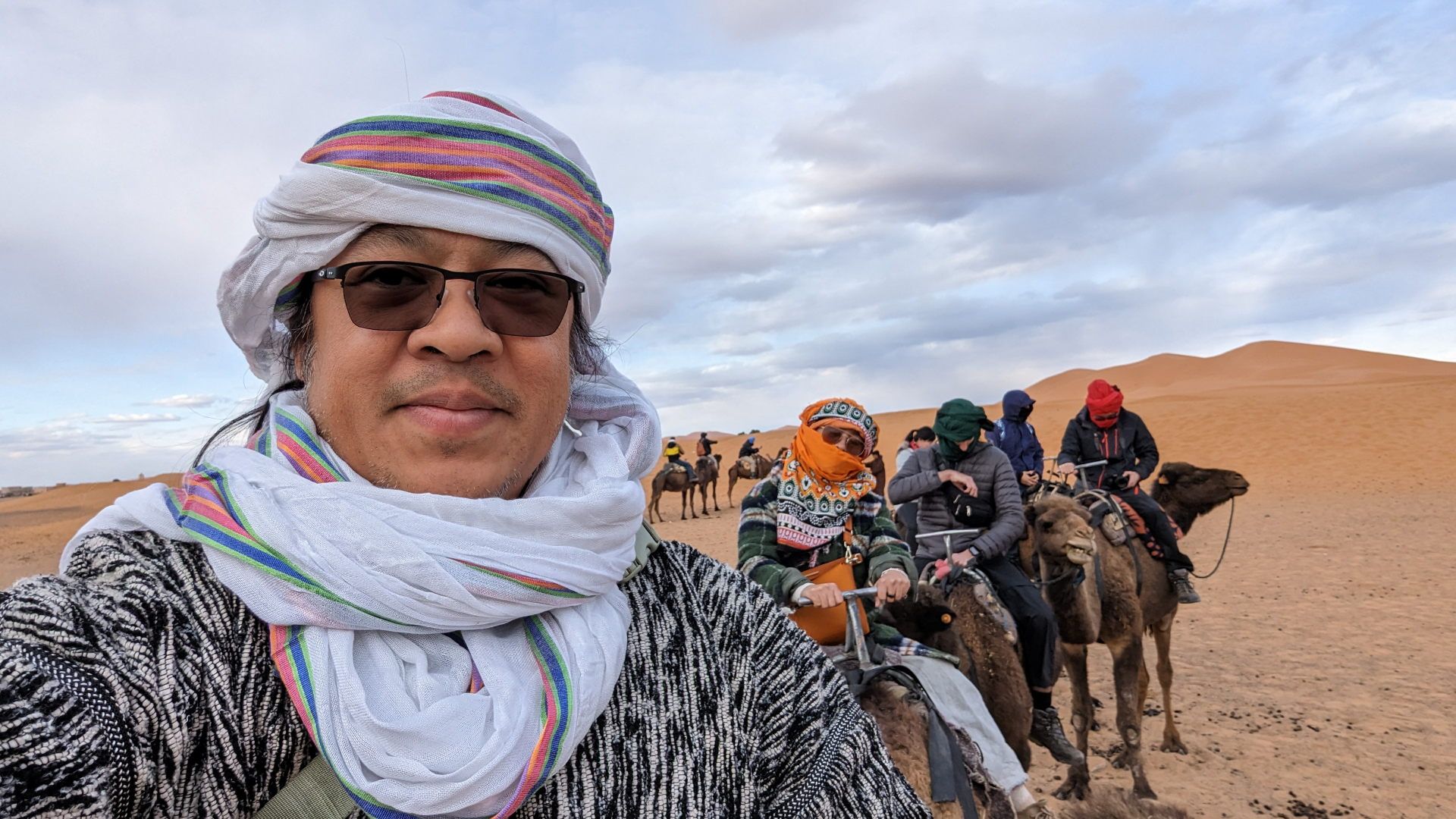

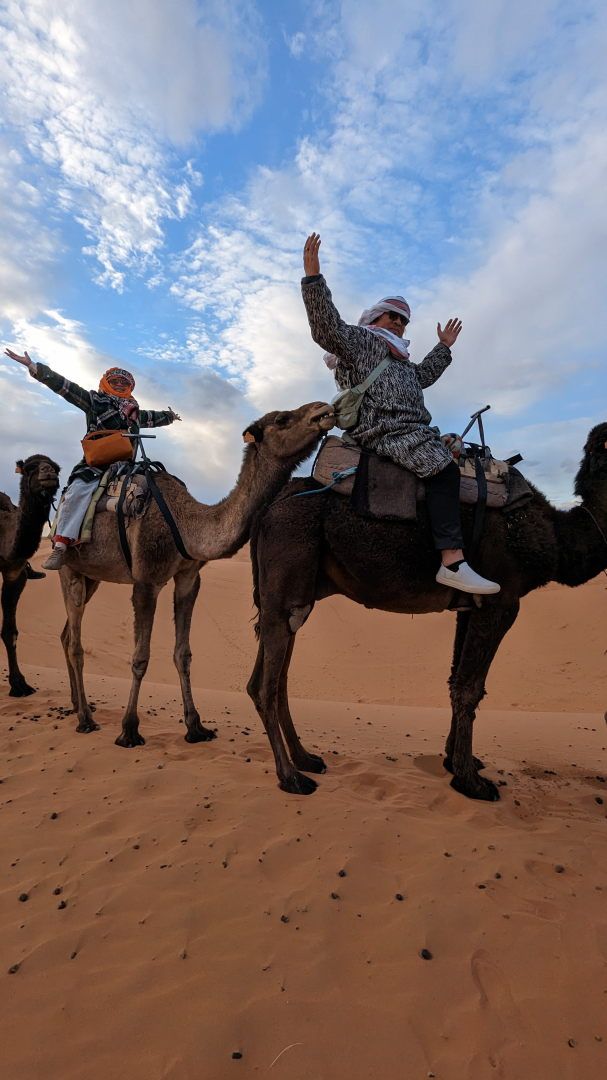
In the desert you can't remember your name. Well, its like time stands still. It was a full 45-minutes or so getting to camp at this distance. Our tent was double walled to keep the biting cold out. You do not want to get stuck outside all night, unless you have a camel. The moon was out that night and dashed my astrophotography plans. I wasn't going to get up at 4am, but I heard someone in camp did.

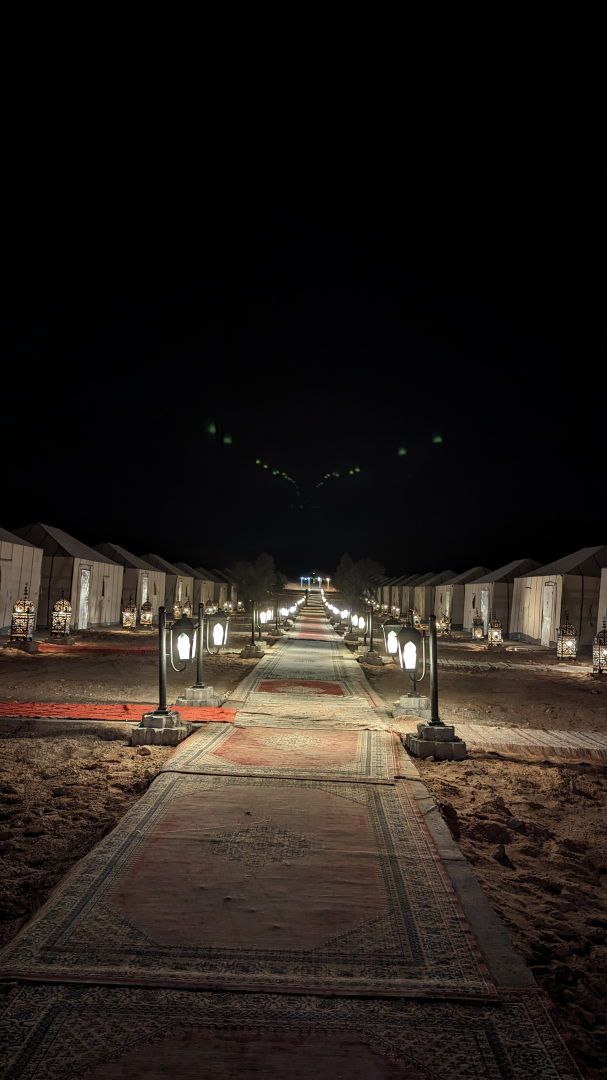
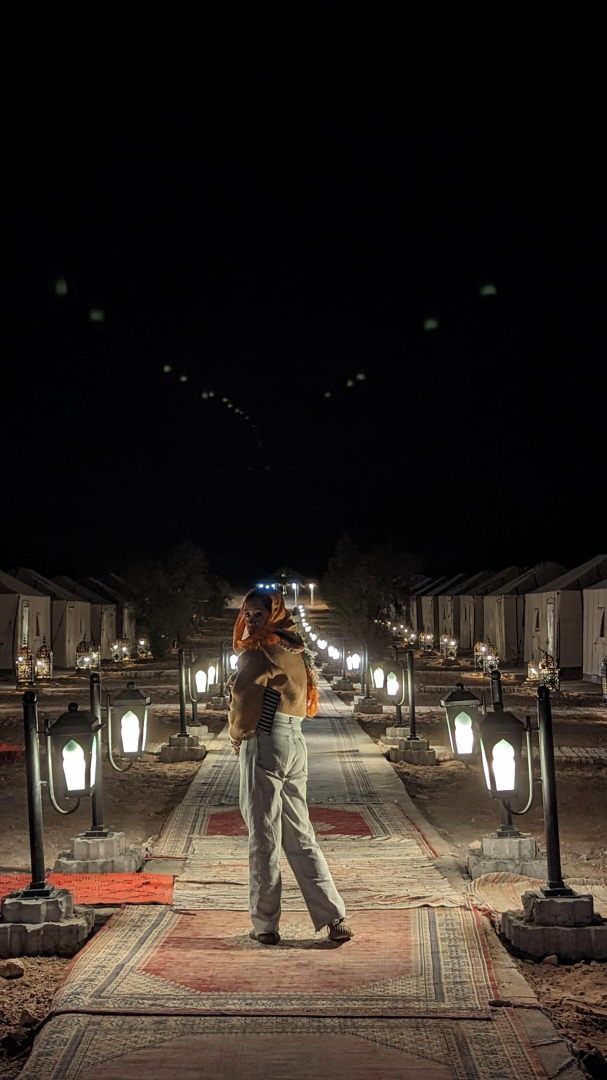
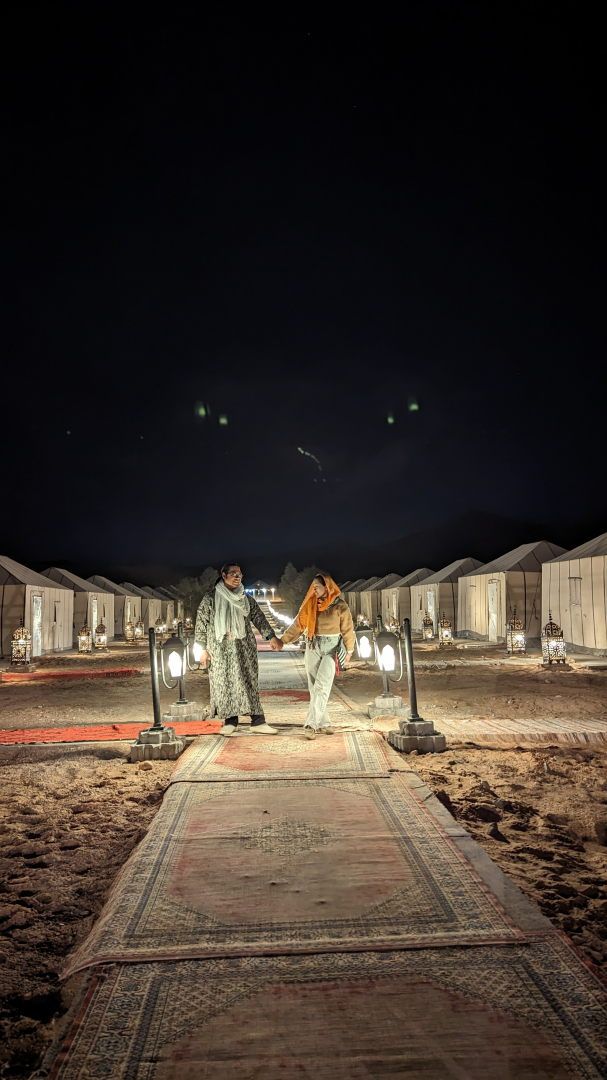
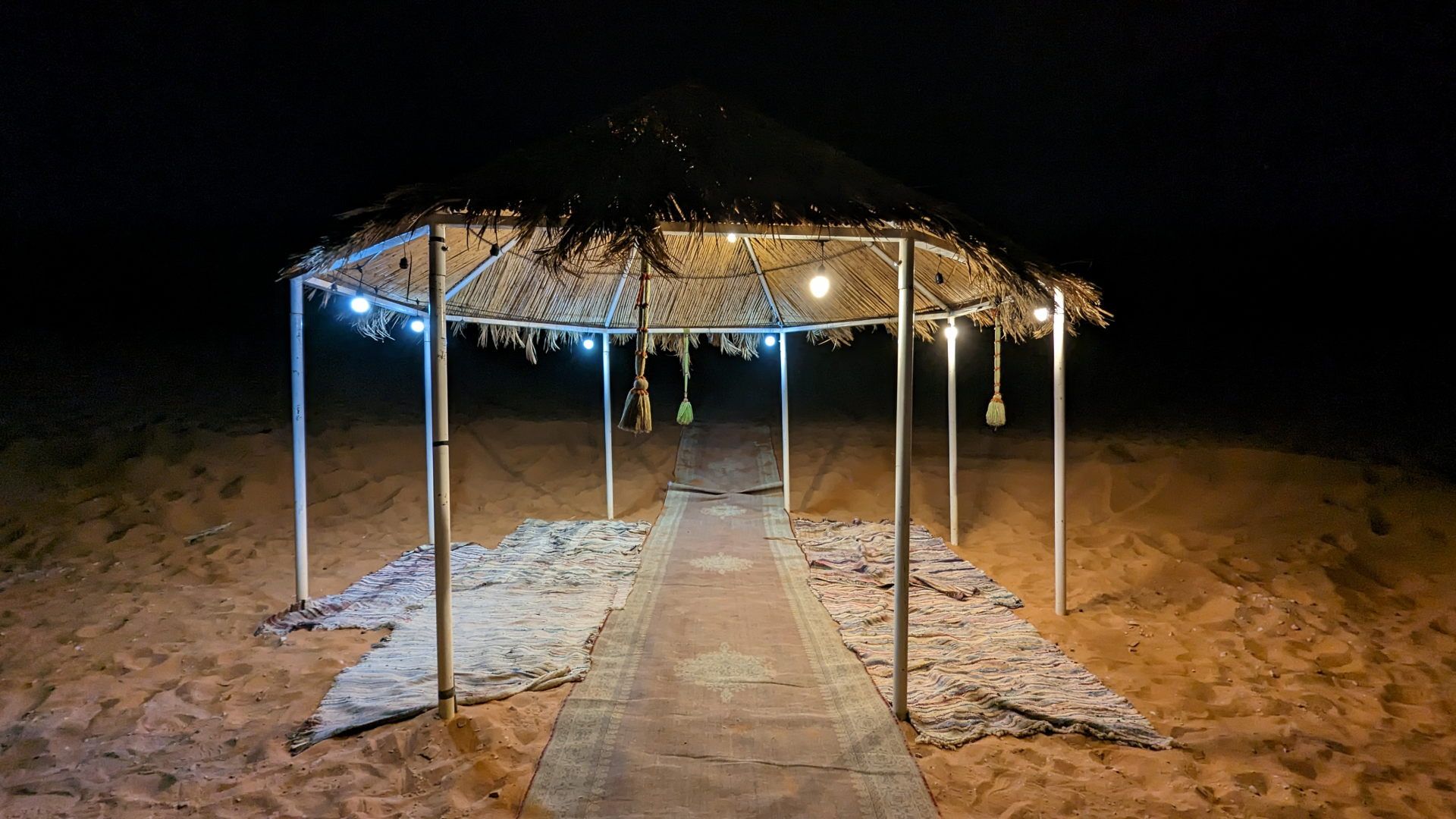
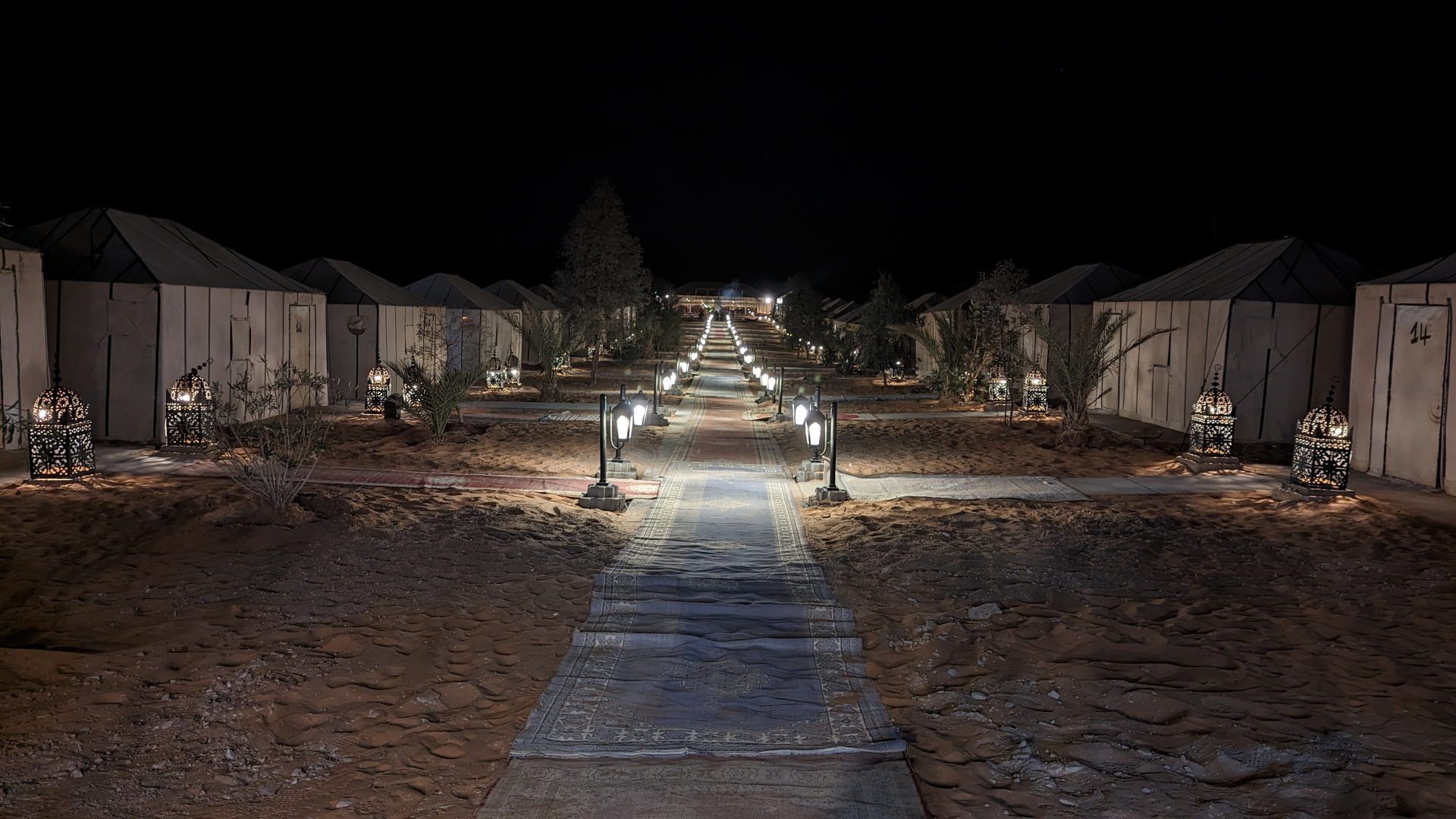
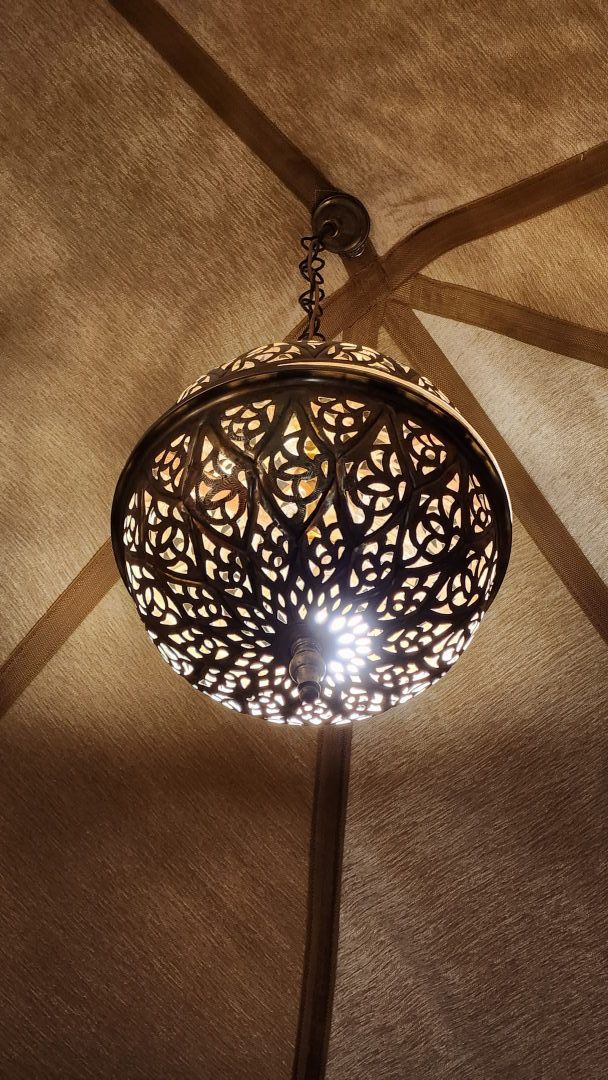
Sunrise starts really early. We had to be off before light to catch the rays and these photos after a hasty breakfast of eggs and some crackers.
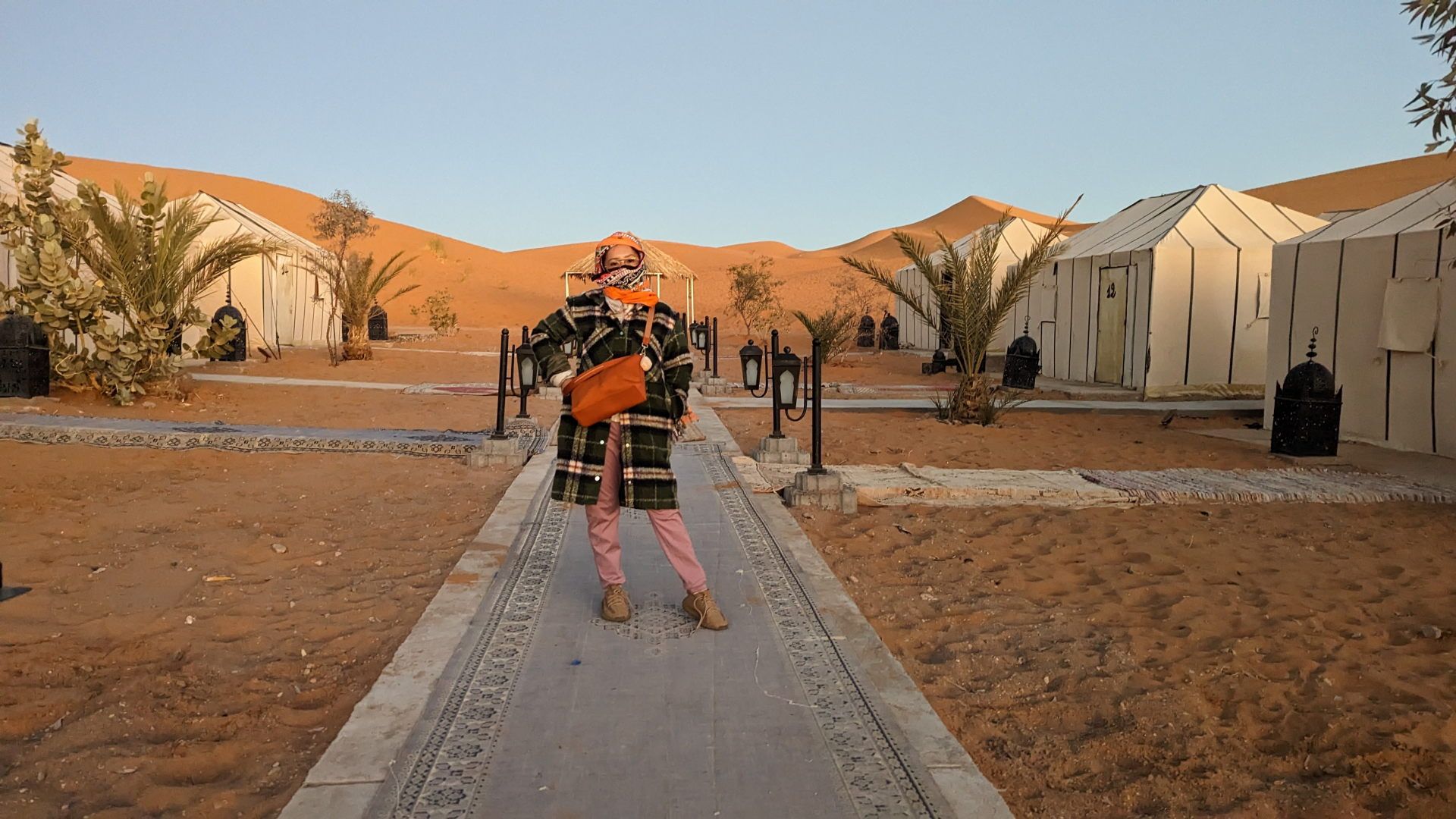
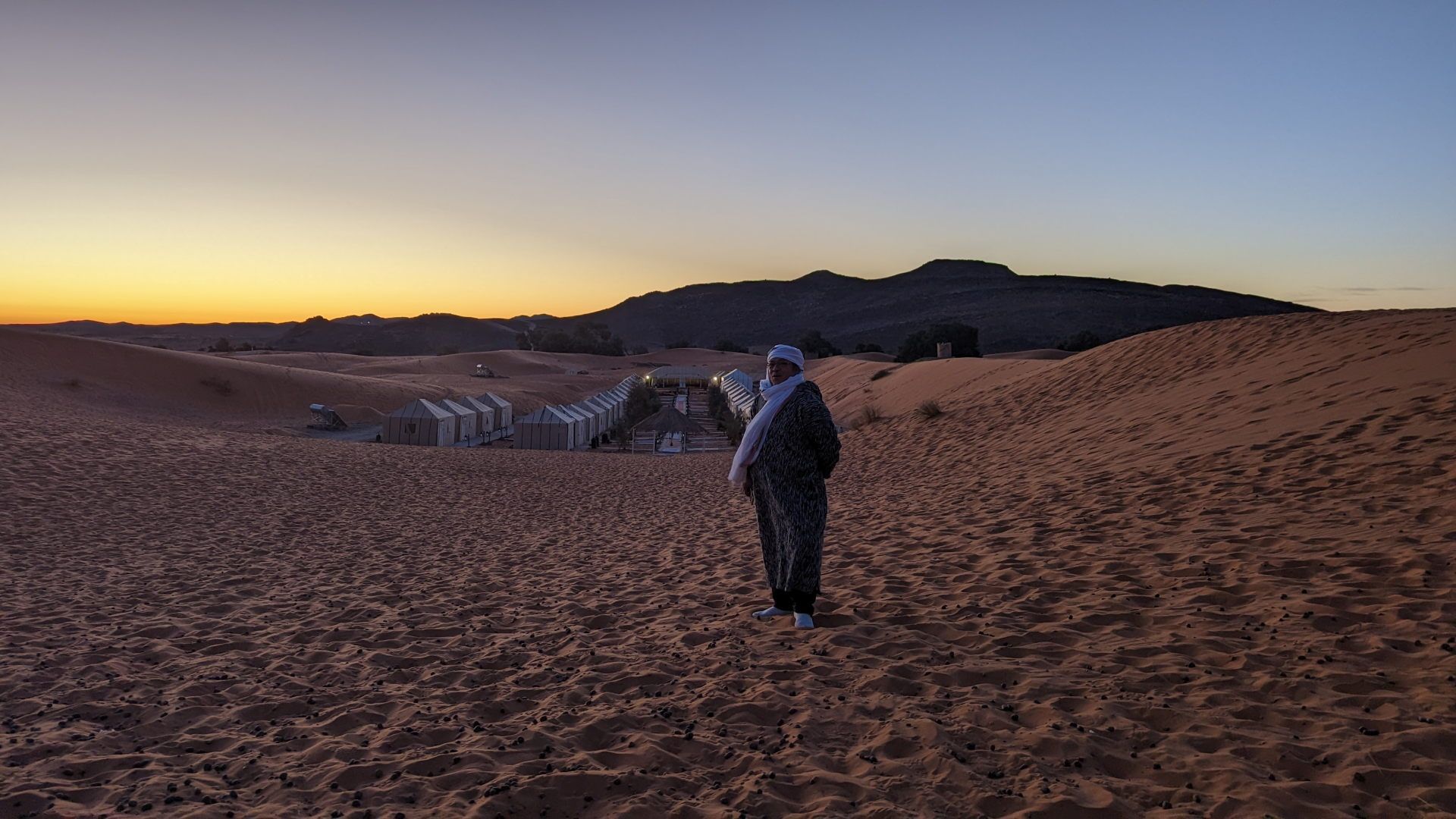
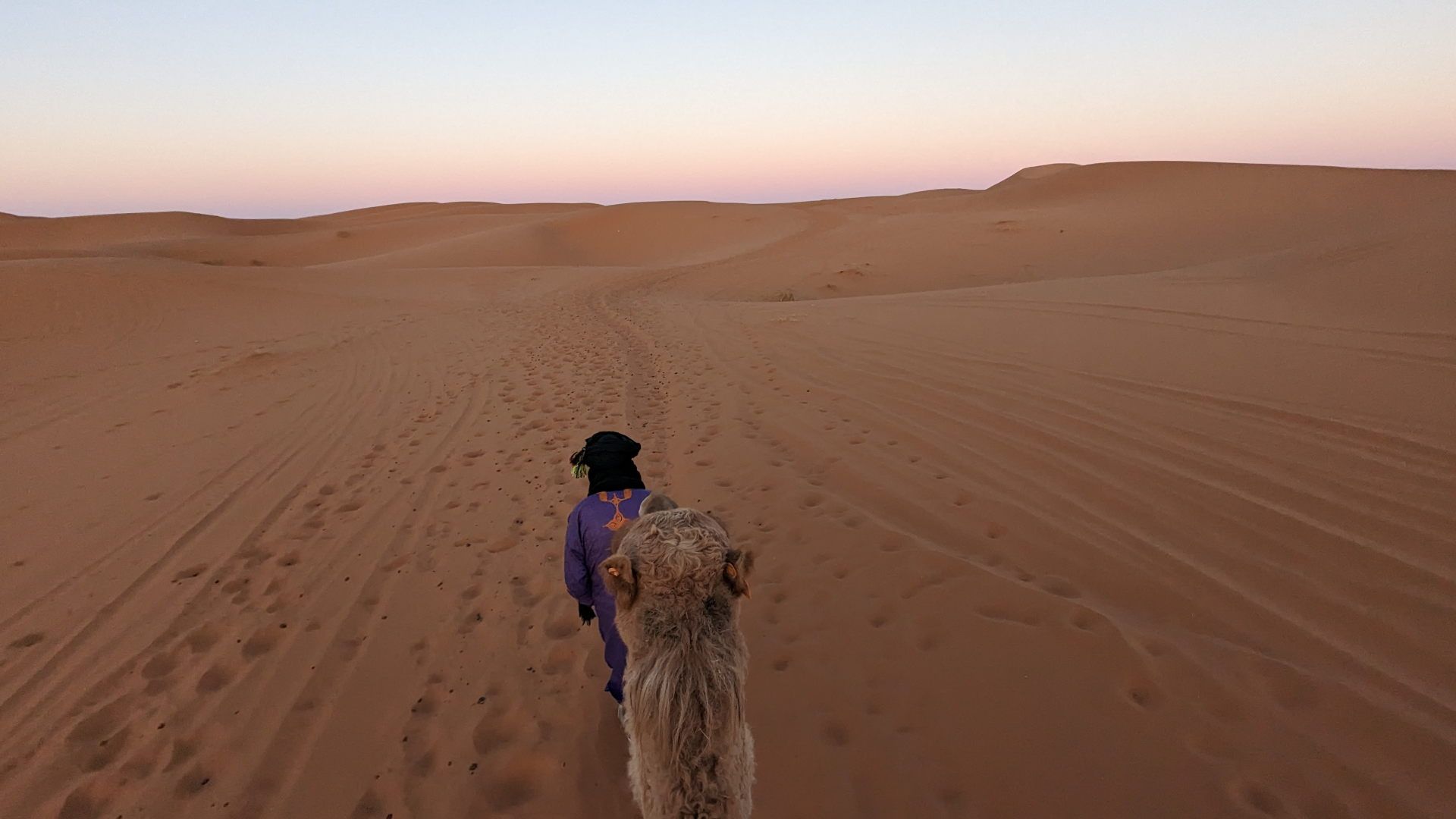
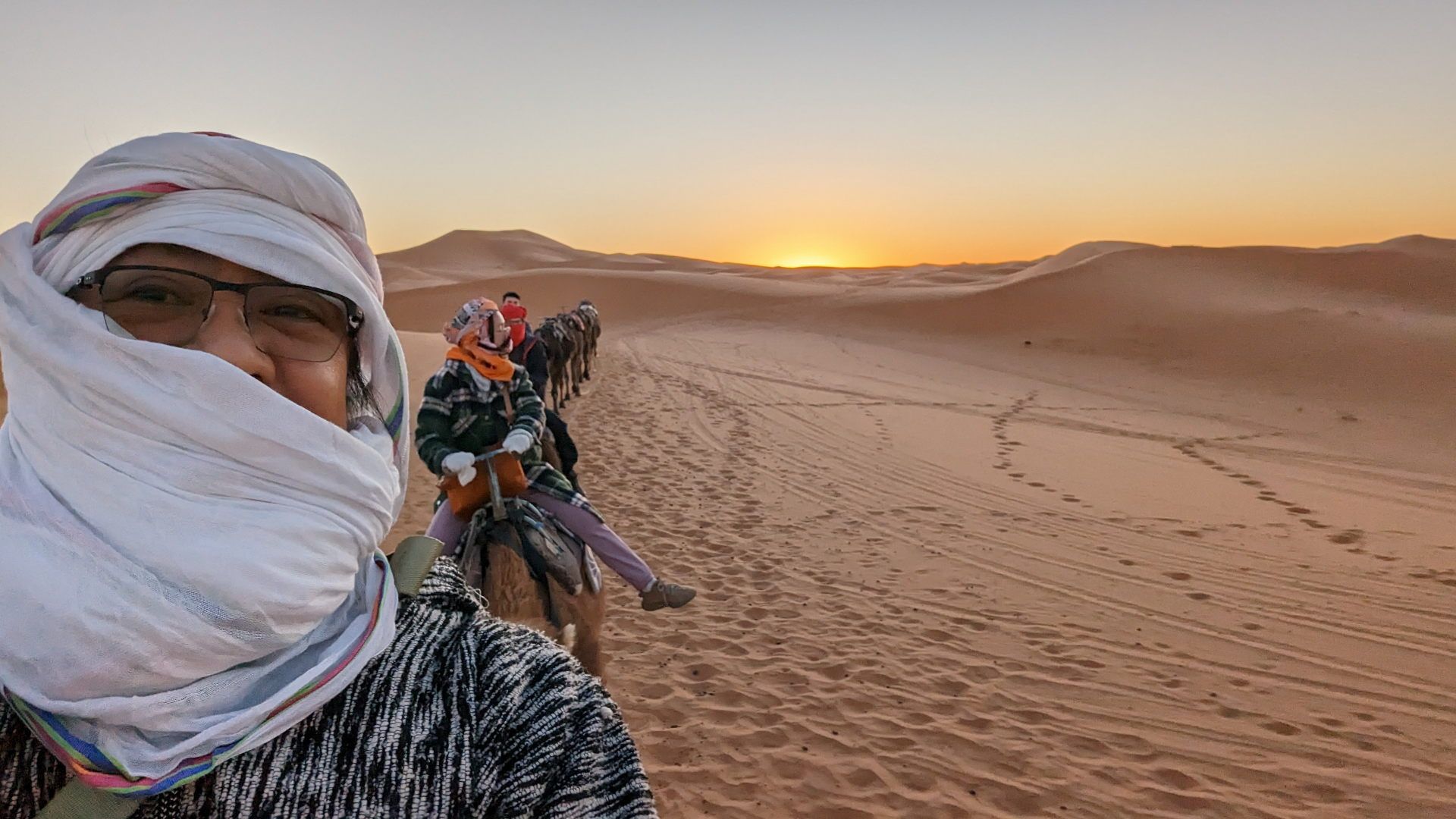
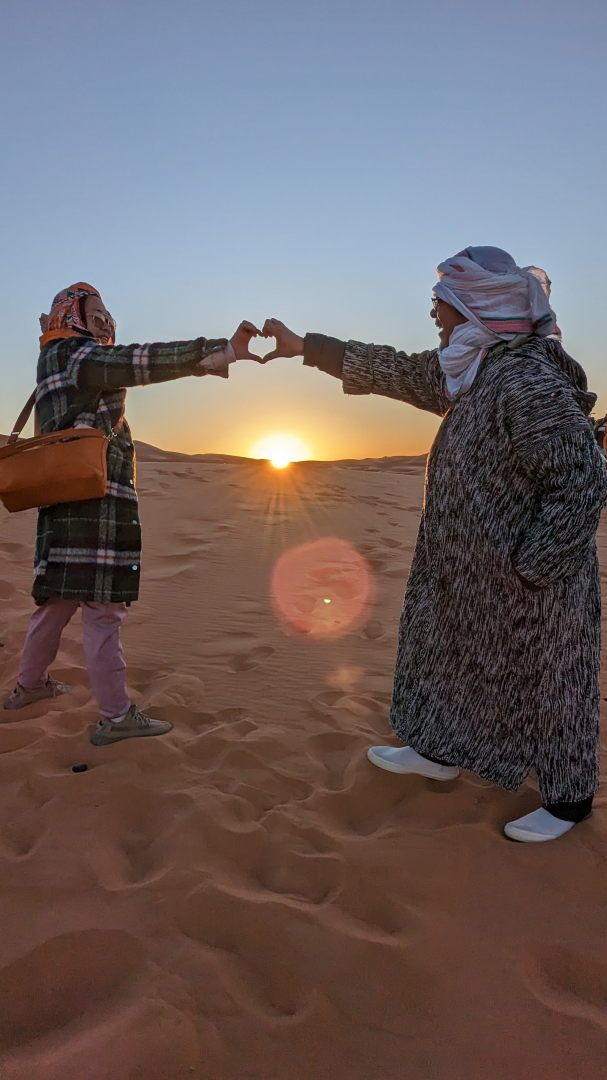
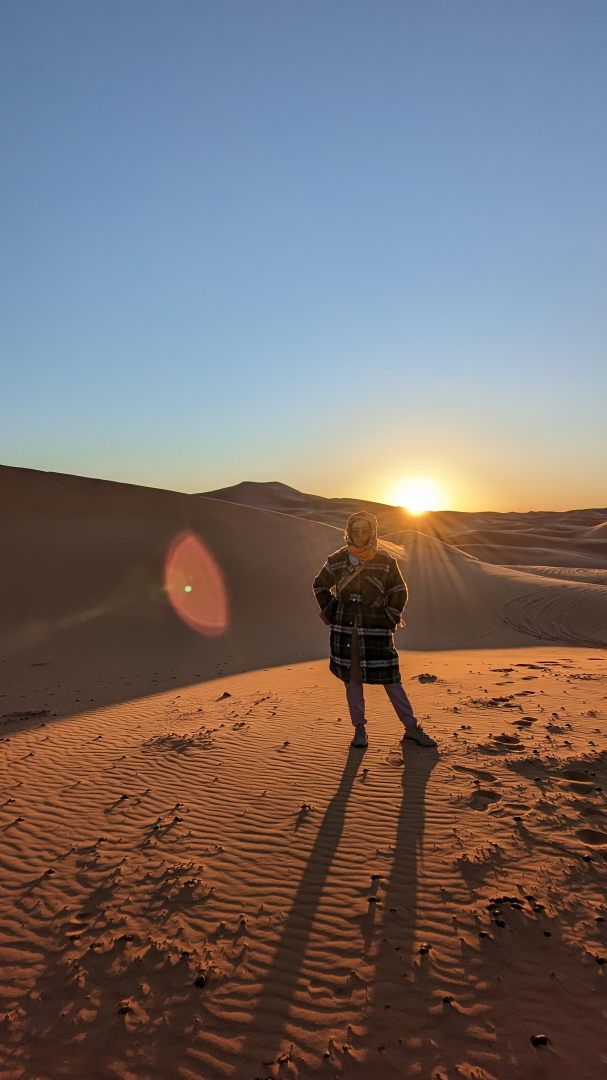
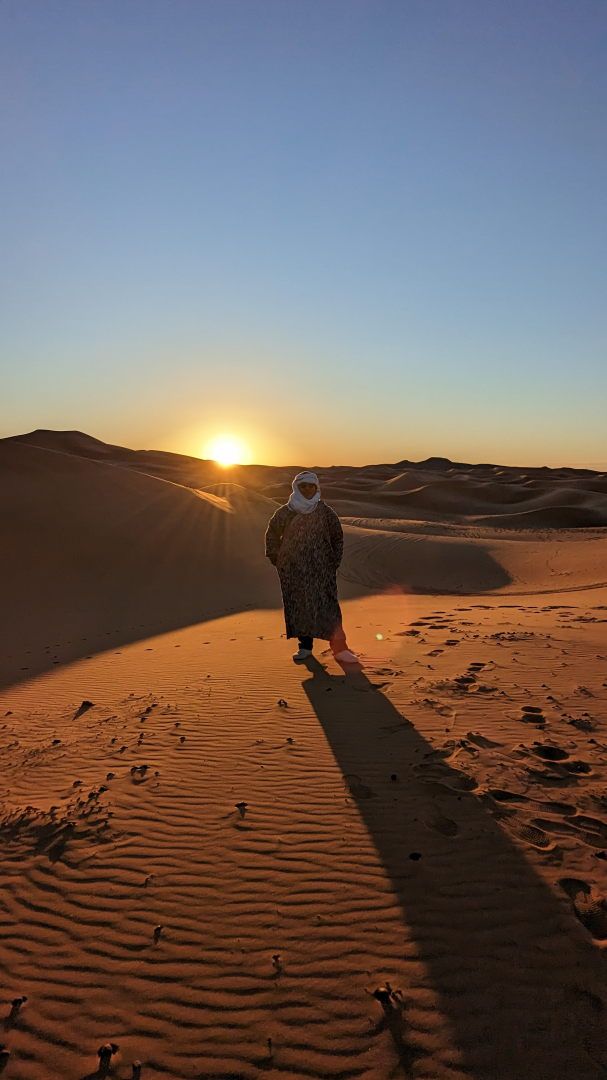
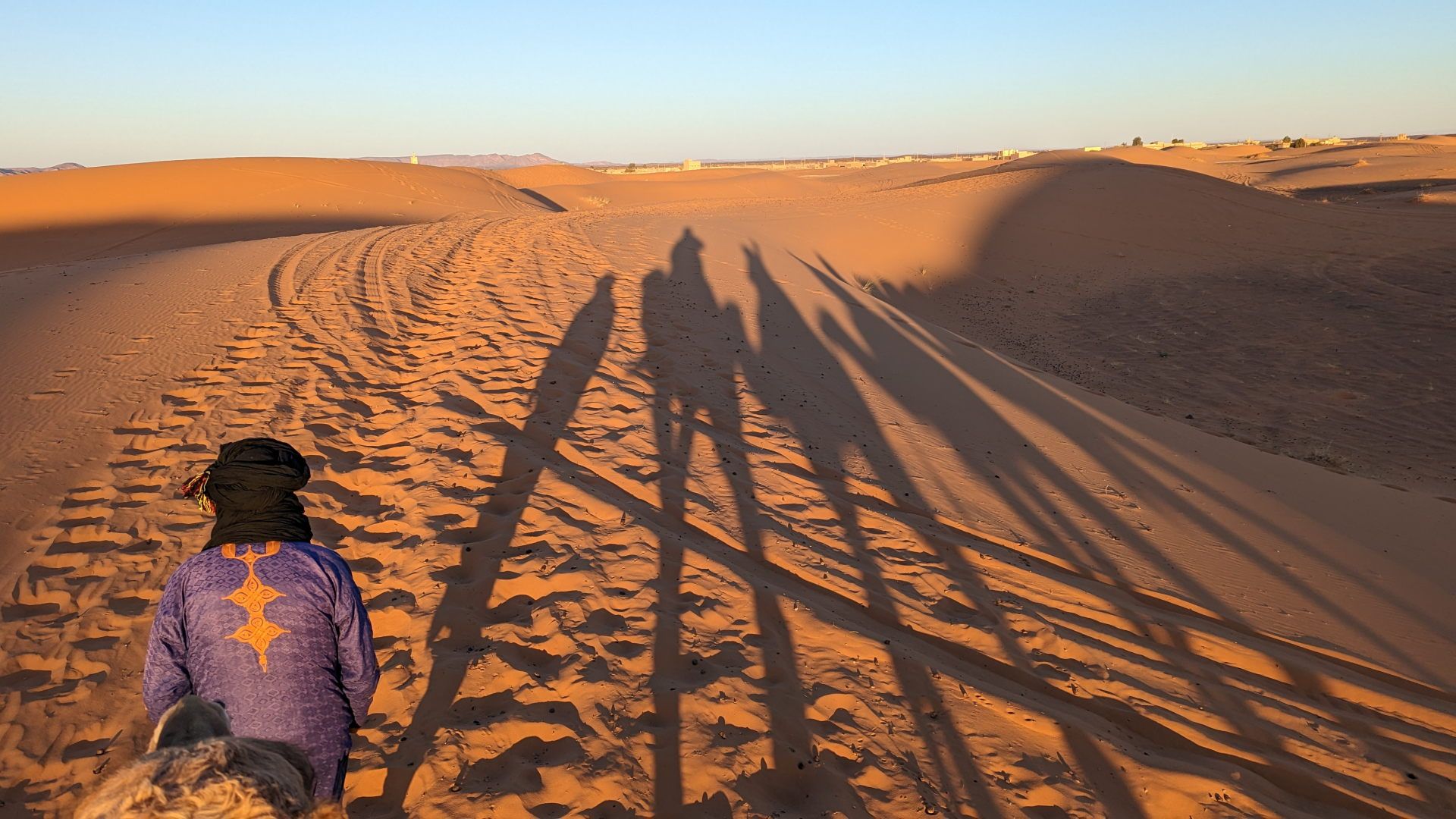
At the end of the experiences, this is the money shot. Even the guides were amused.

There's only one way back to Marrakech and its to turn around. Already missing home we were probably the few who engaged with the locals who were pretty happy to get some rubs. Dogs are considered bad luck in the city. Cats are a little more normal, then again, perhaps its the proximity to Egypt?
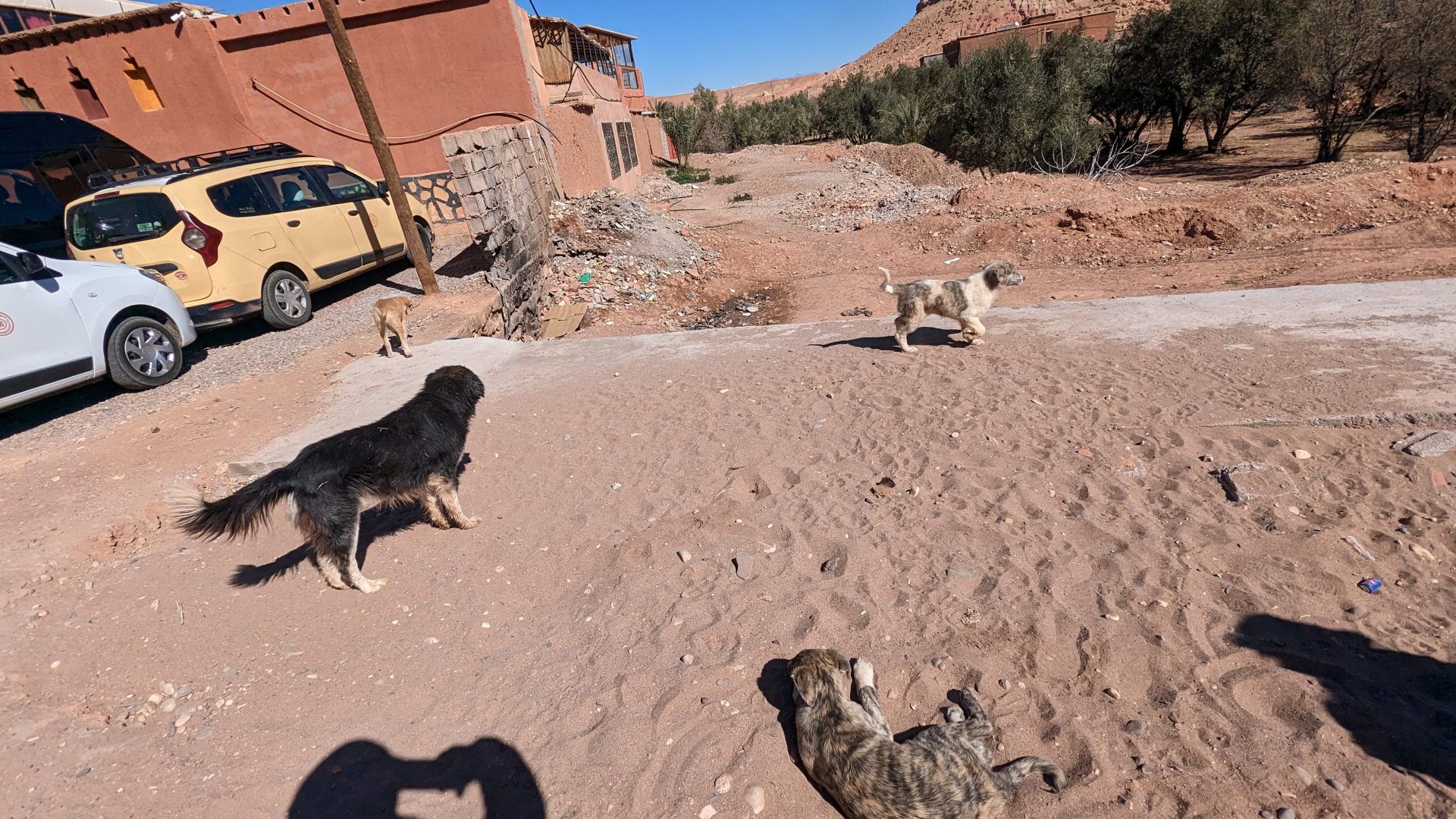
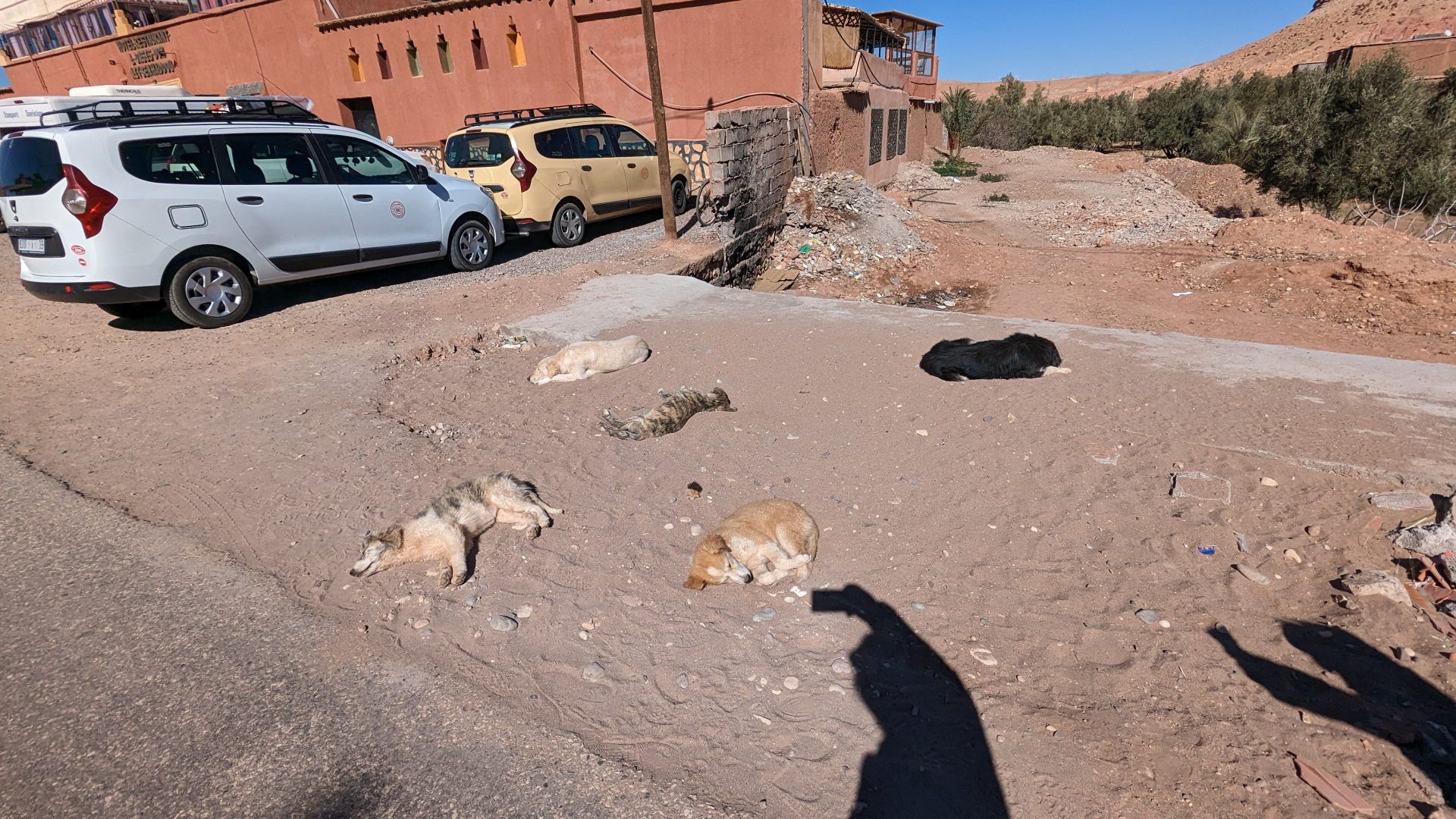
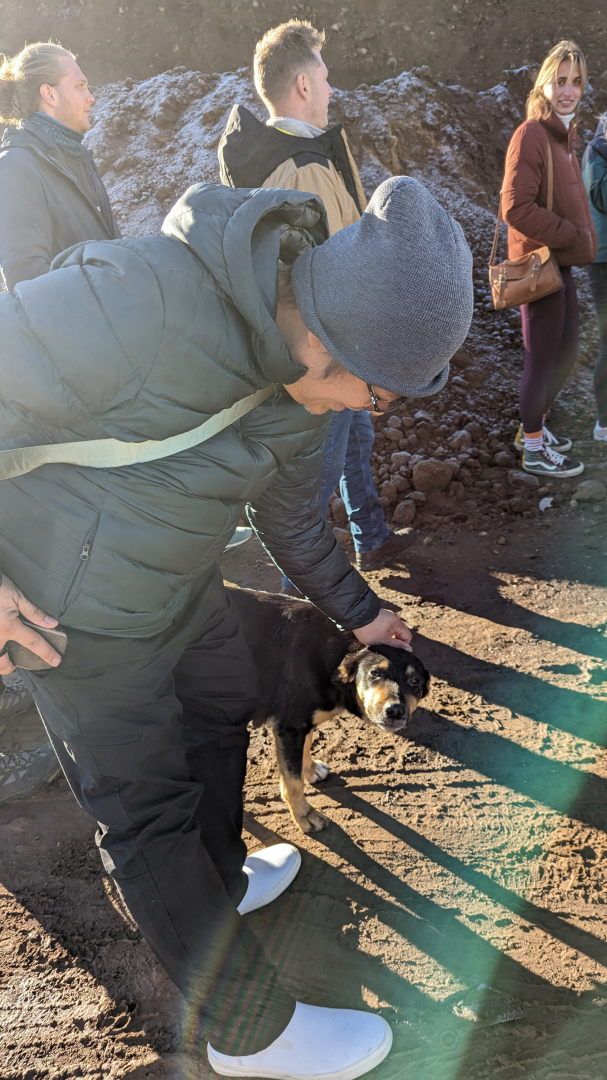

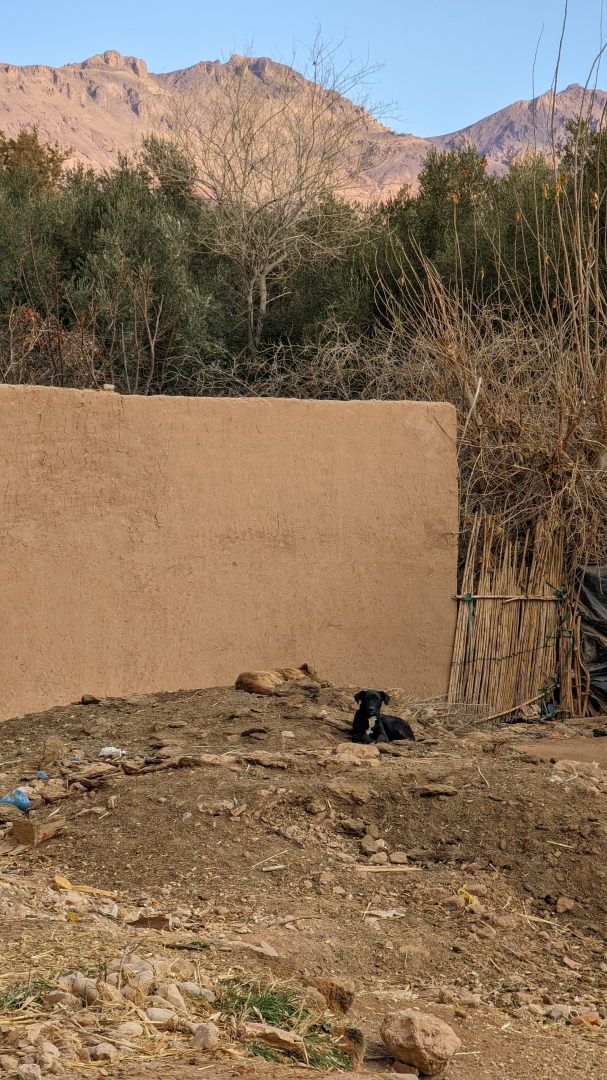
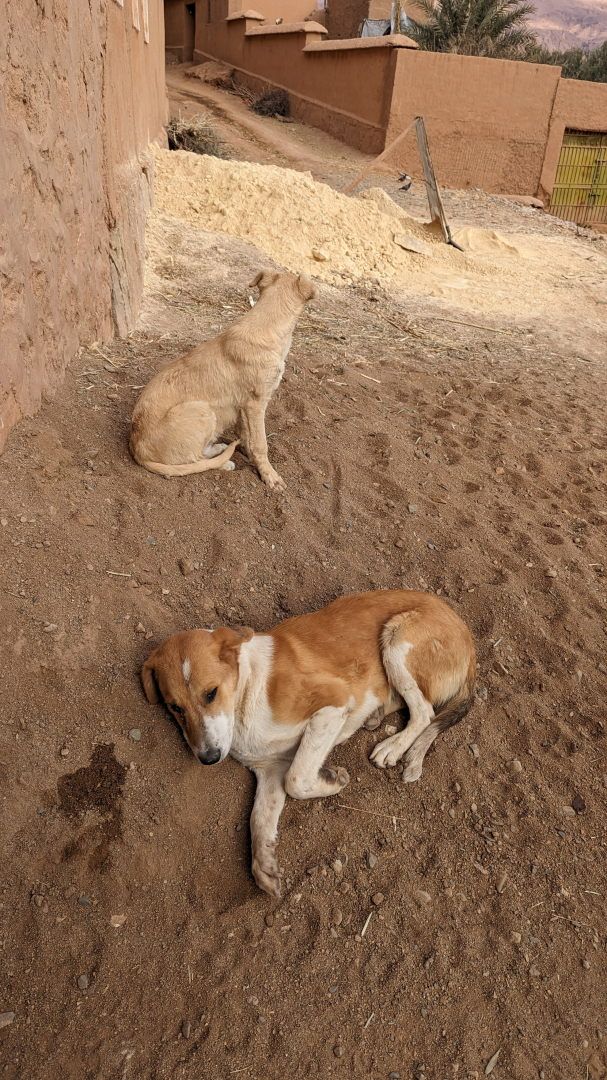
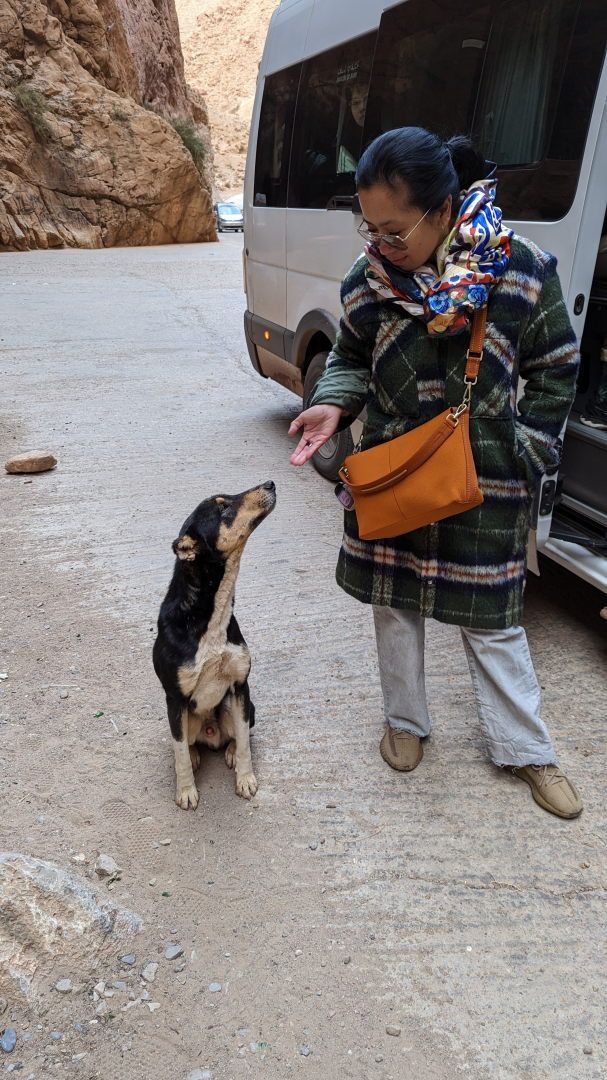
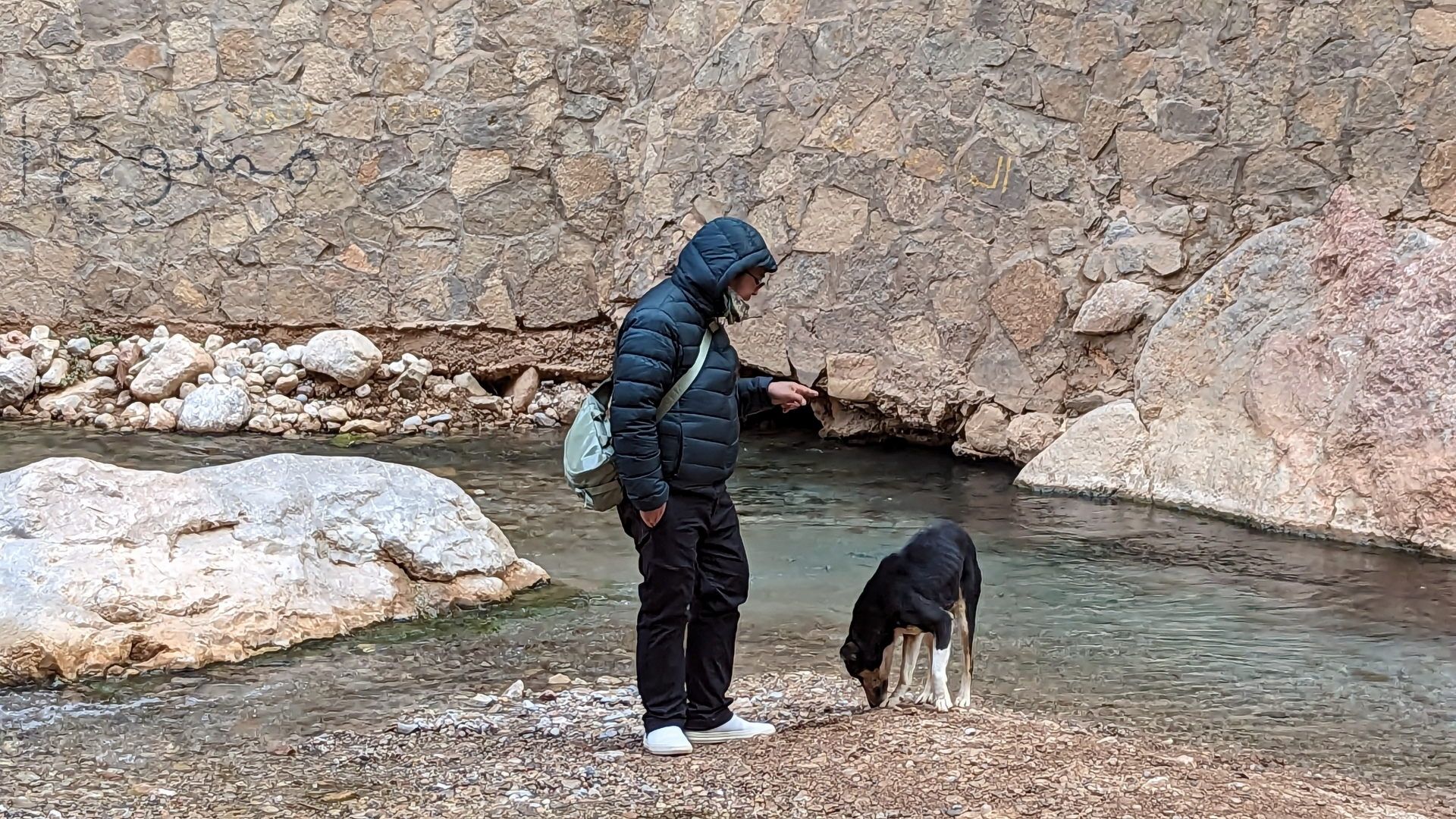
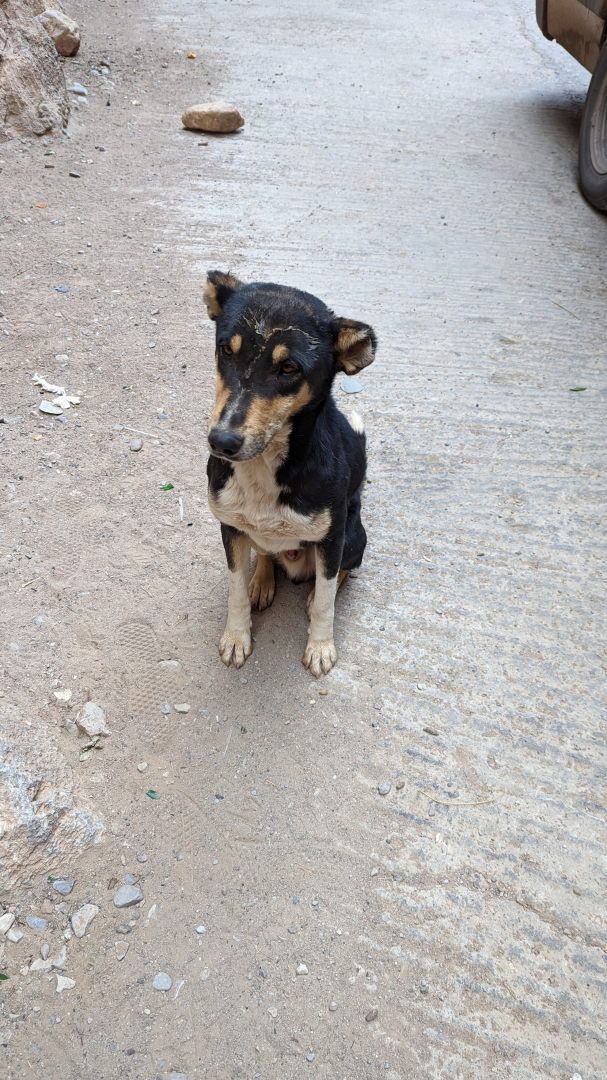
I hope this rather long guide was helpful, if not enlightening. Feel free to subscribe here or checkout my Youtube channel and other reviews.